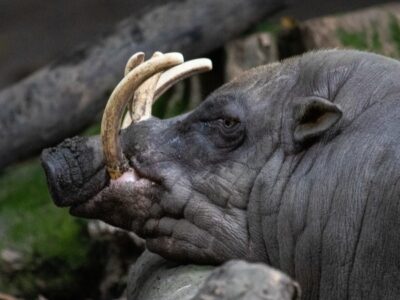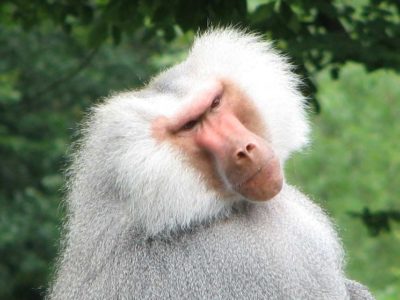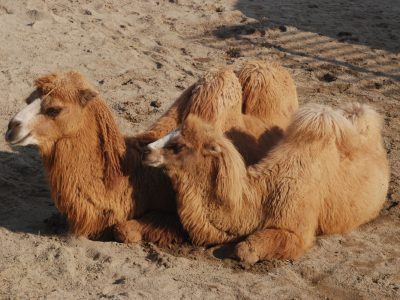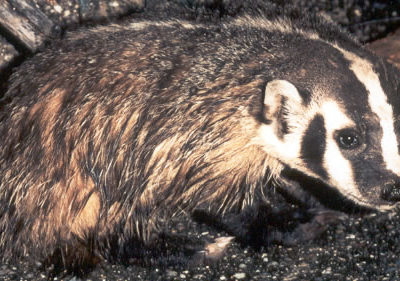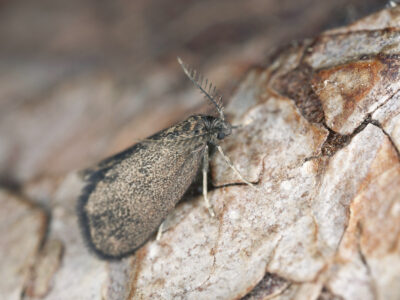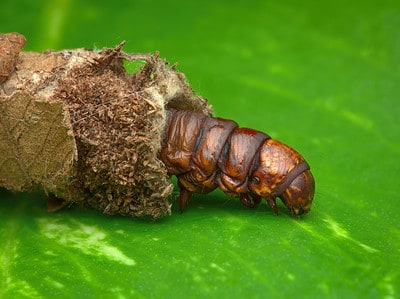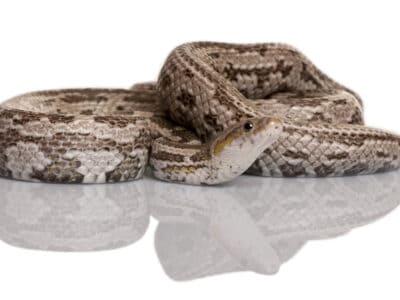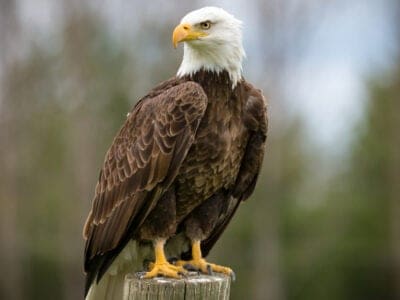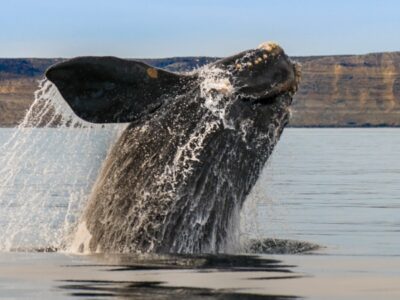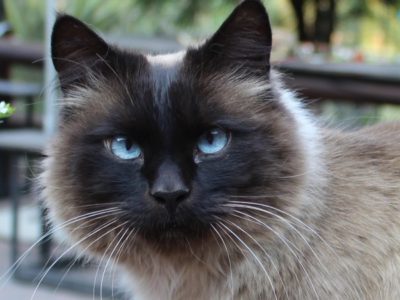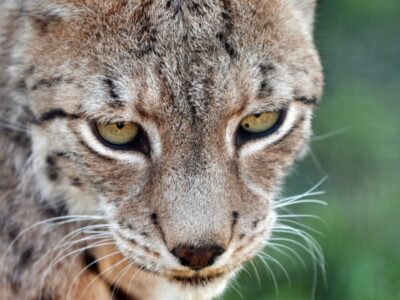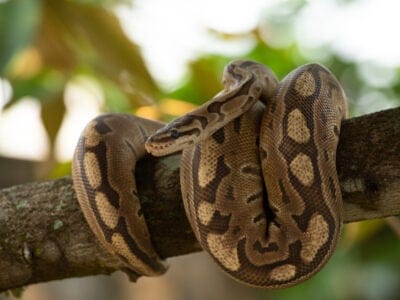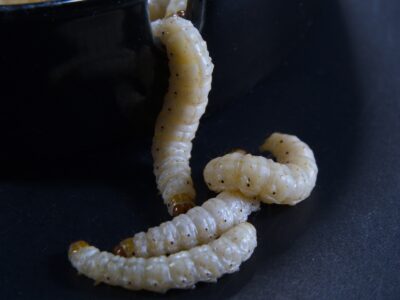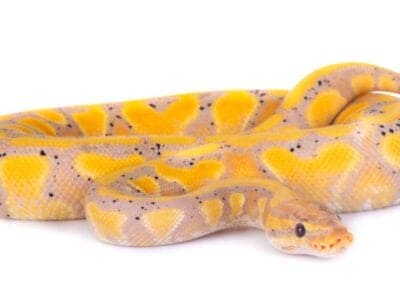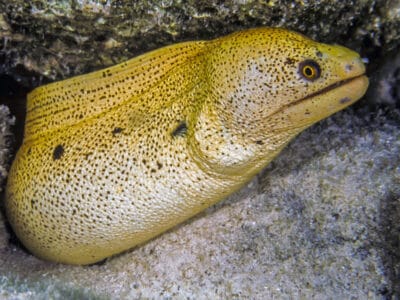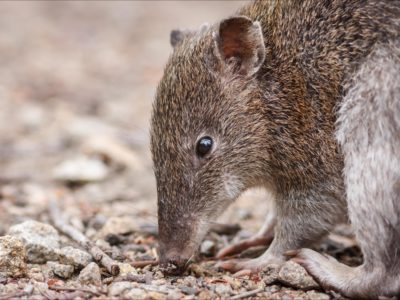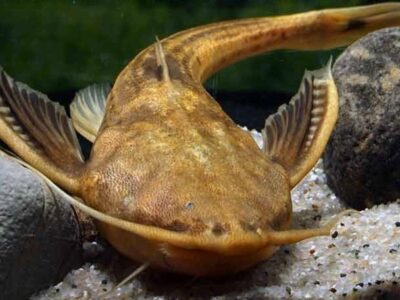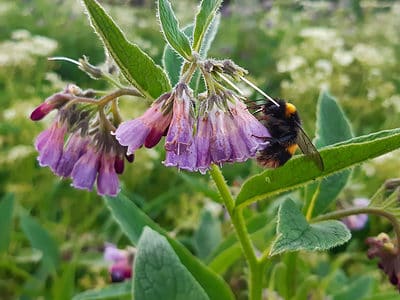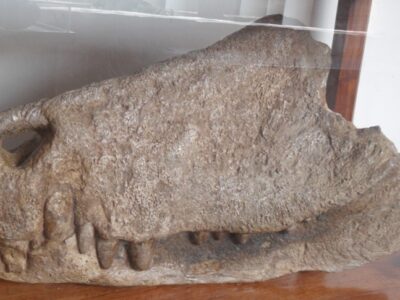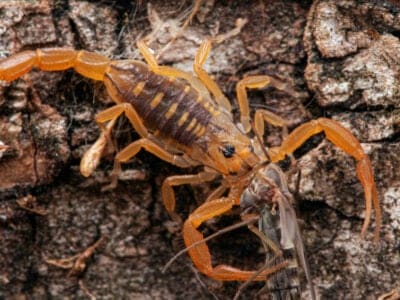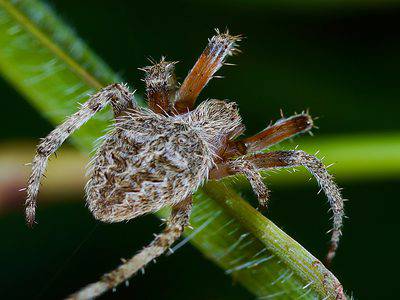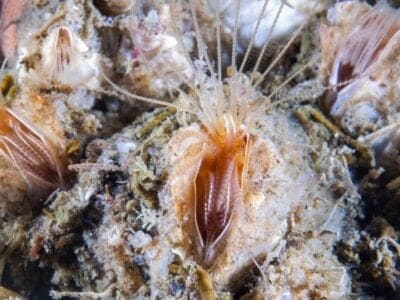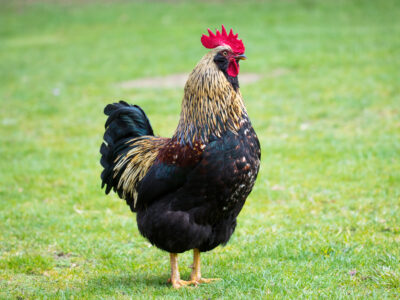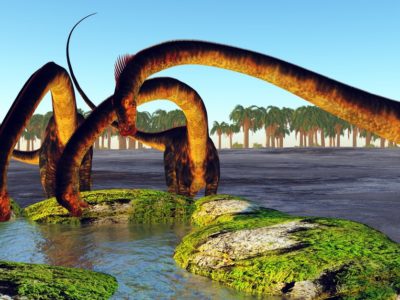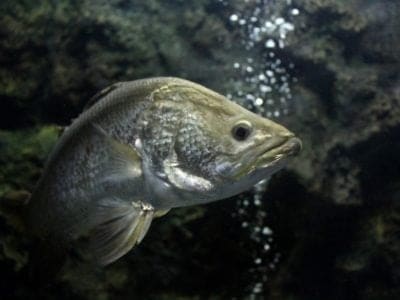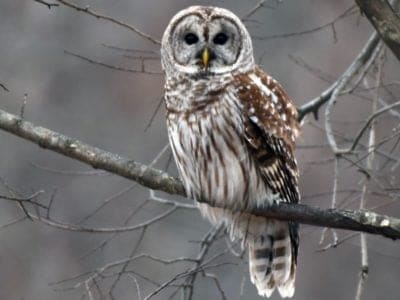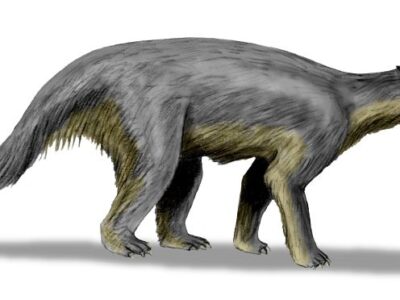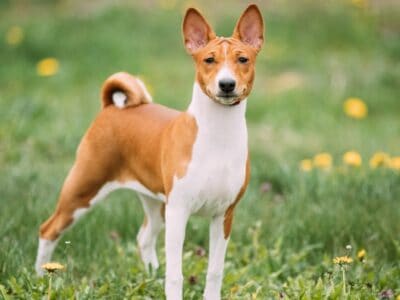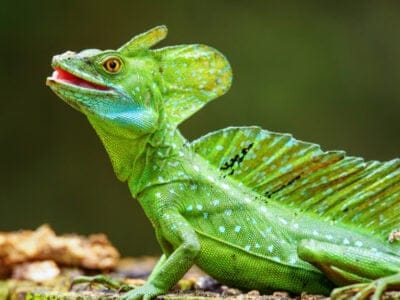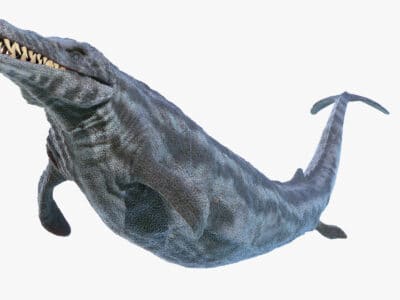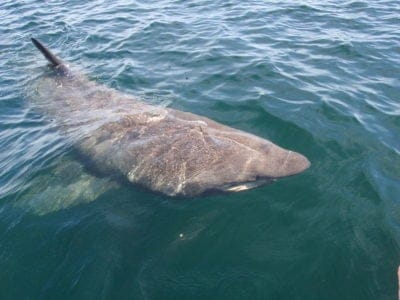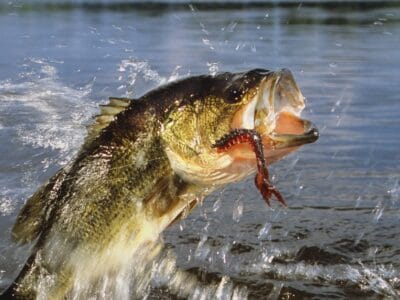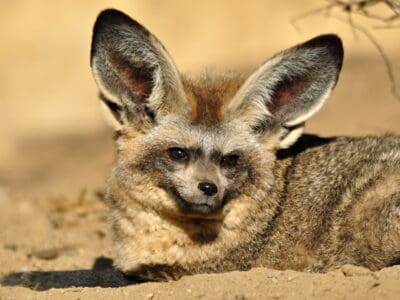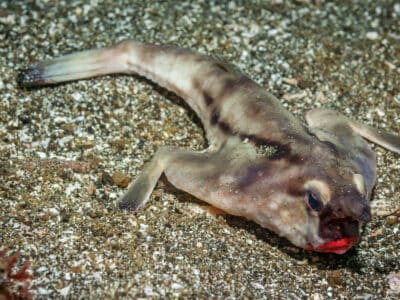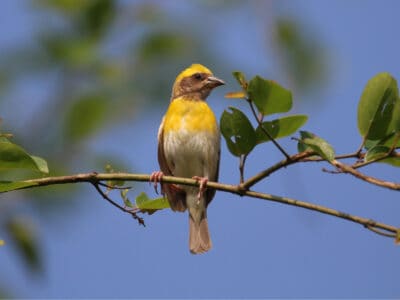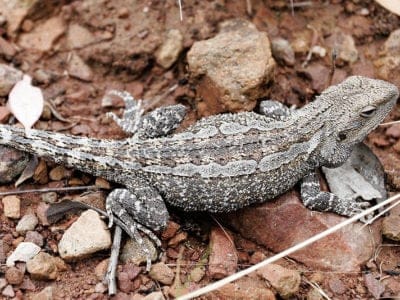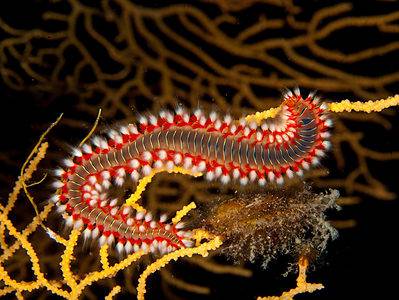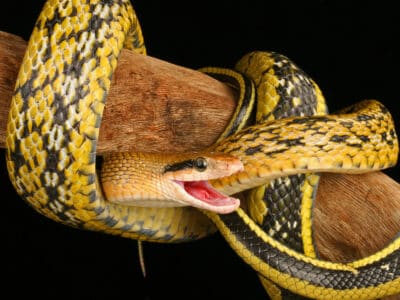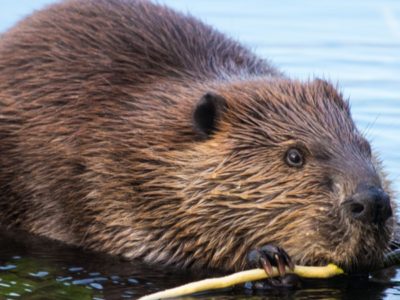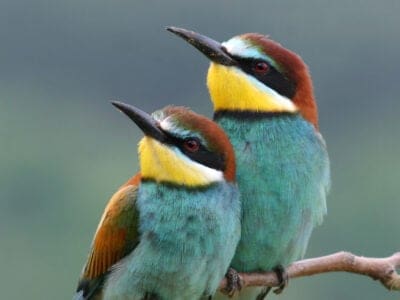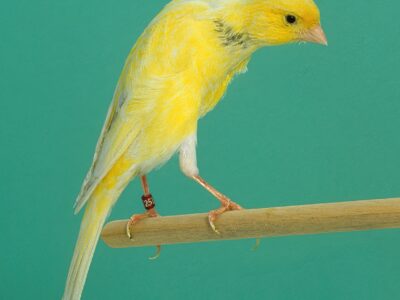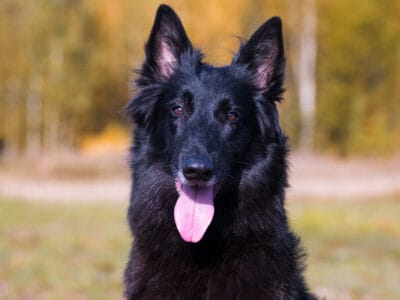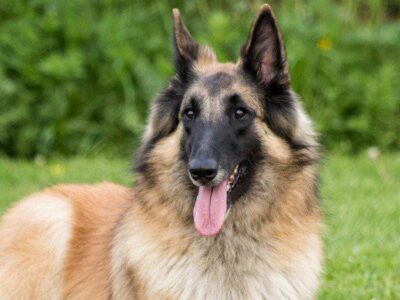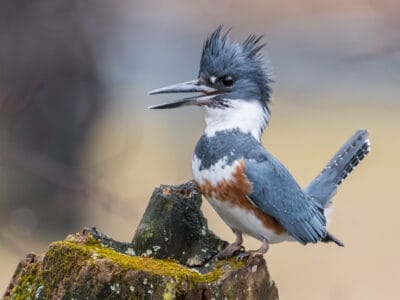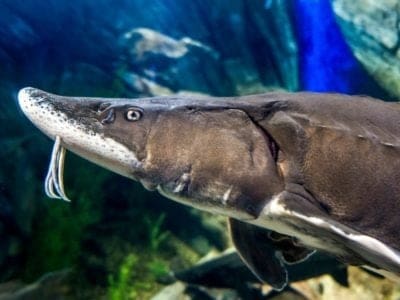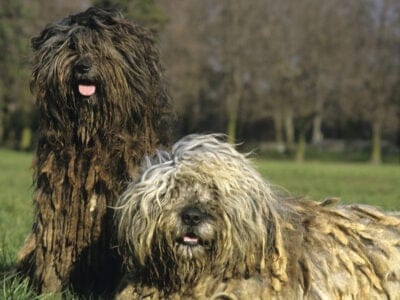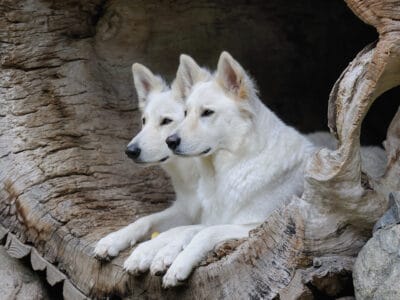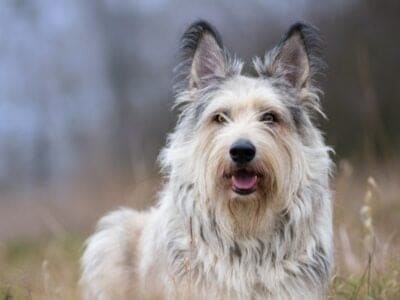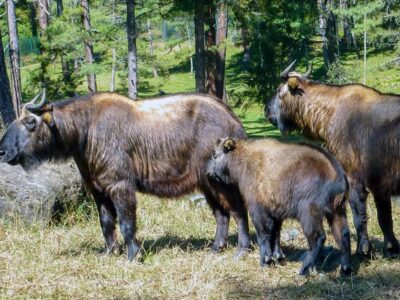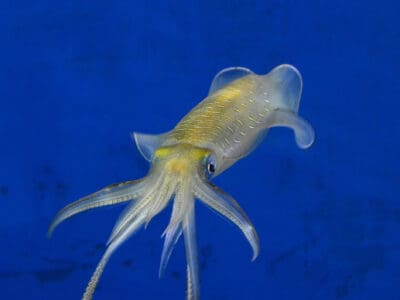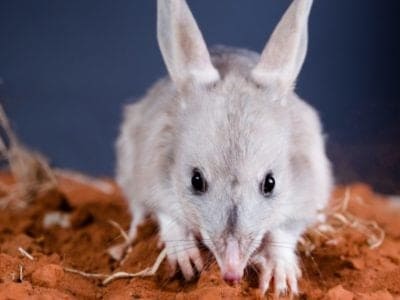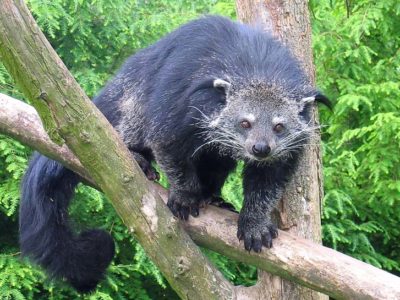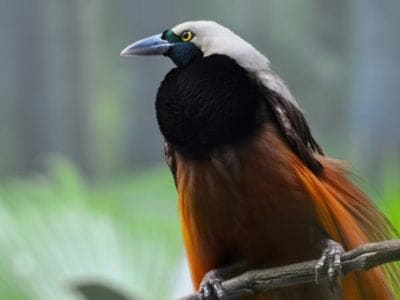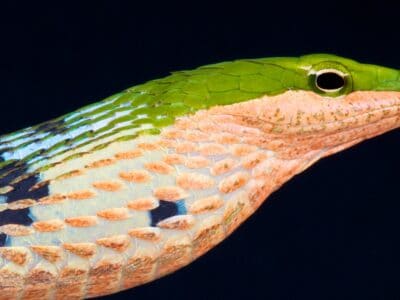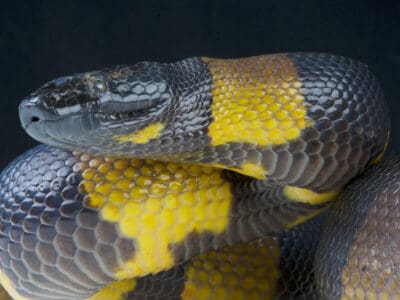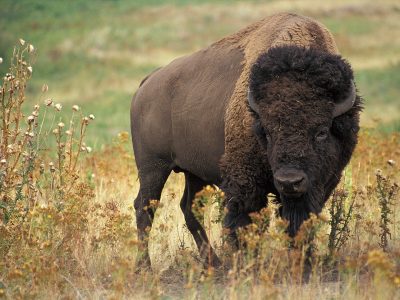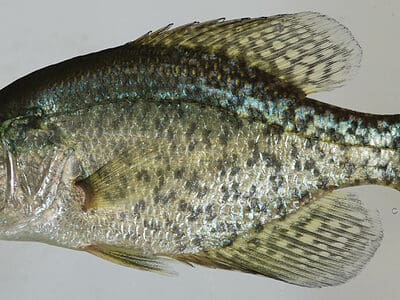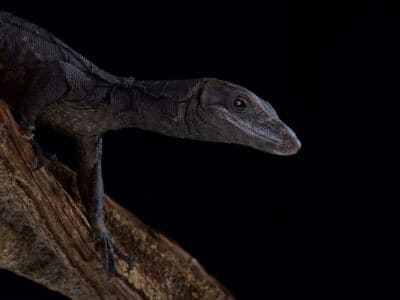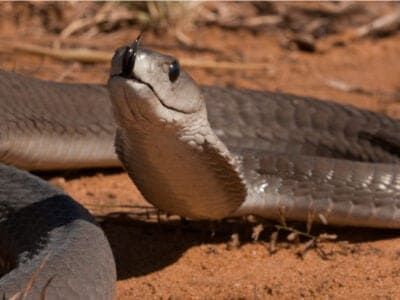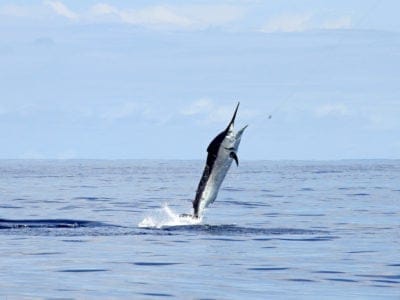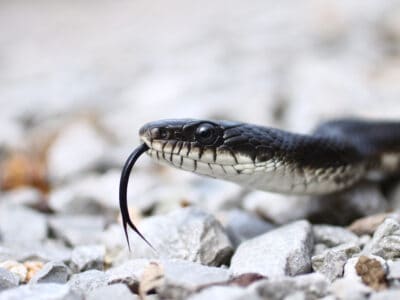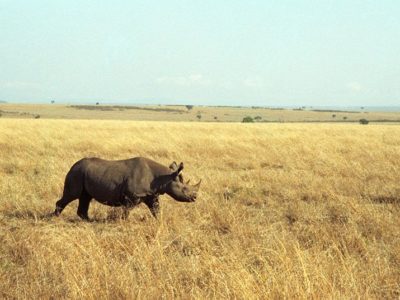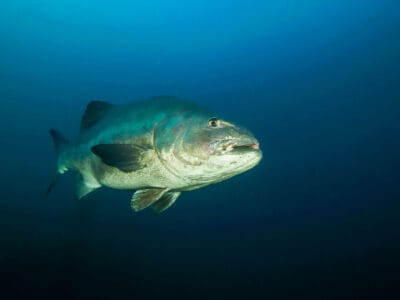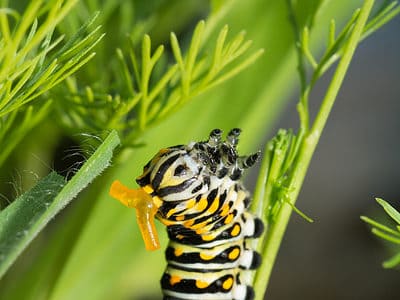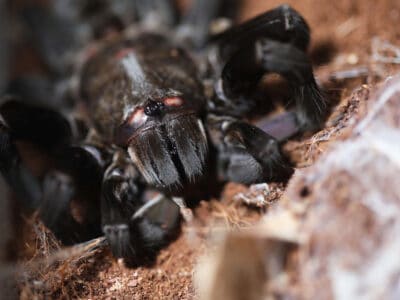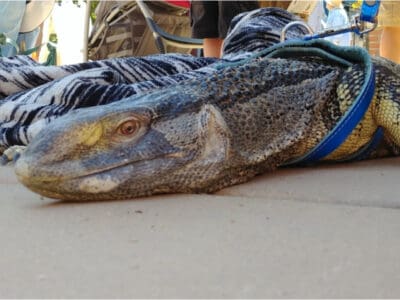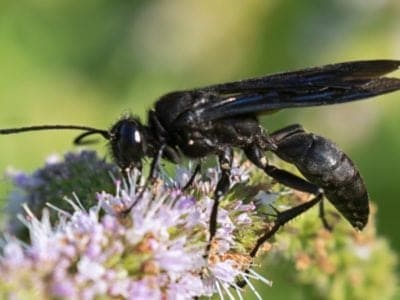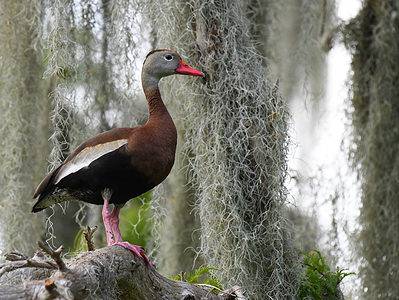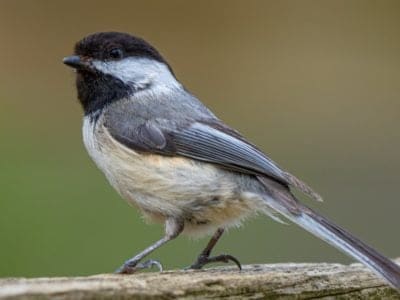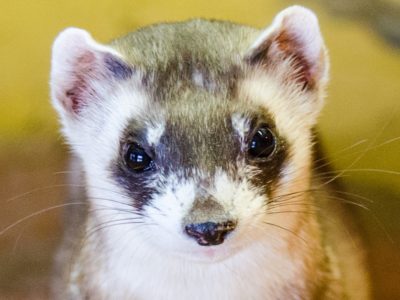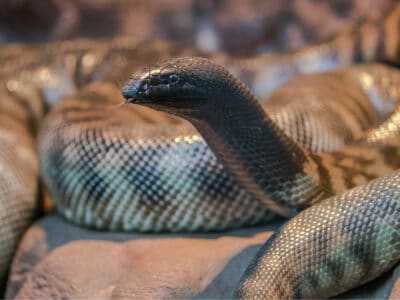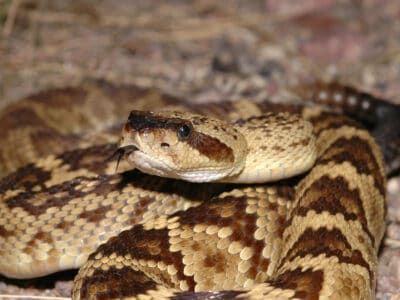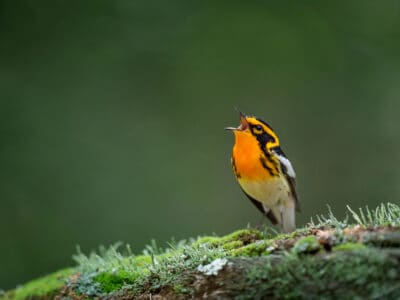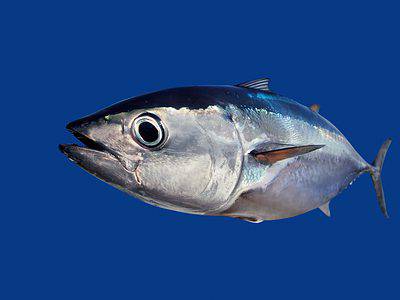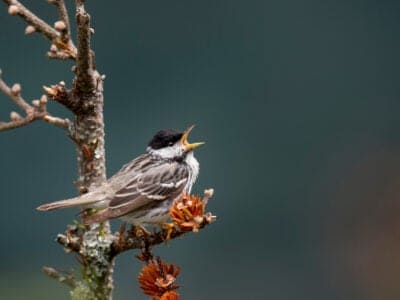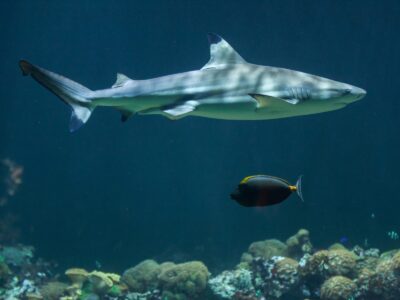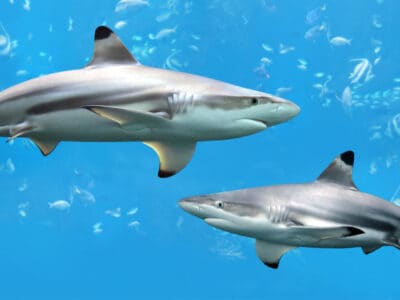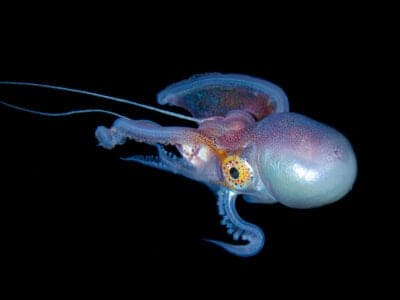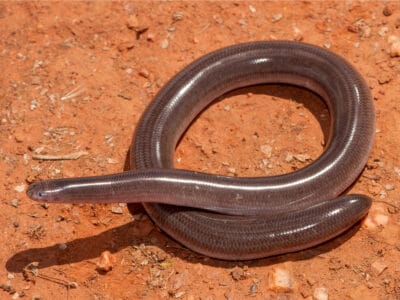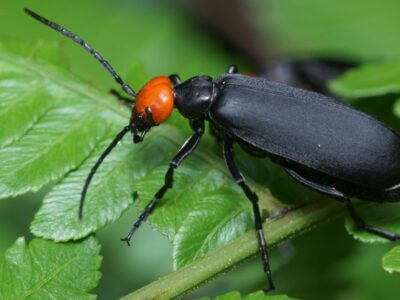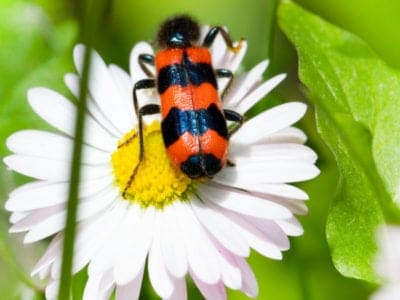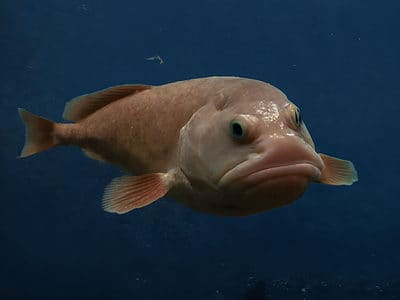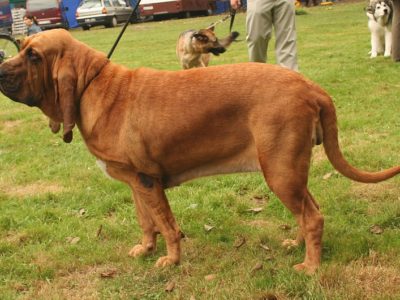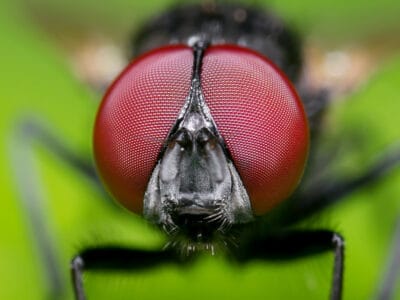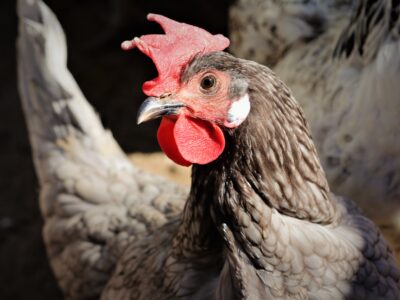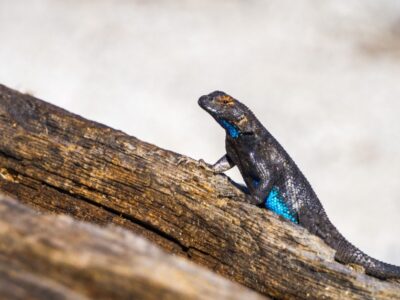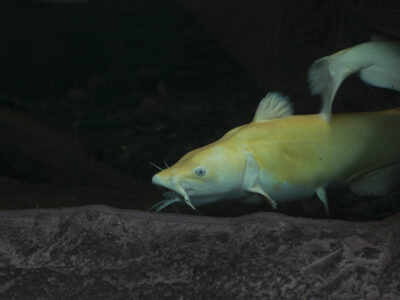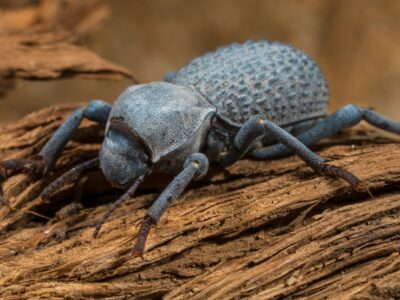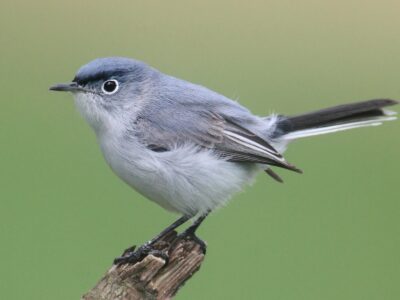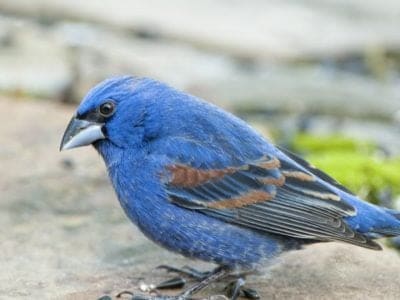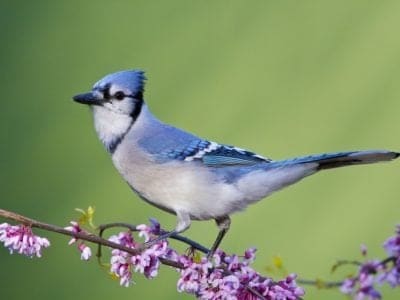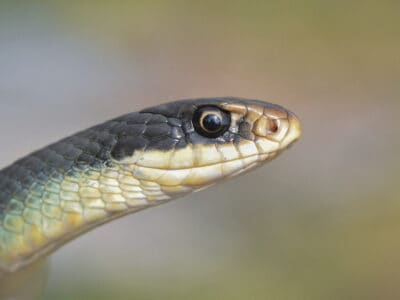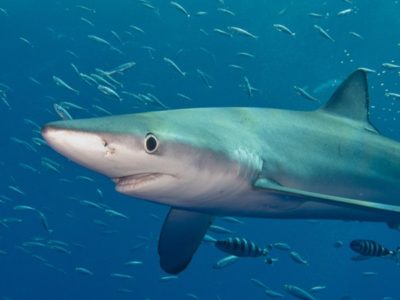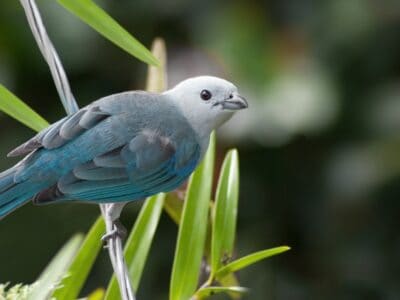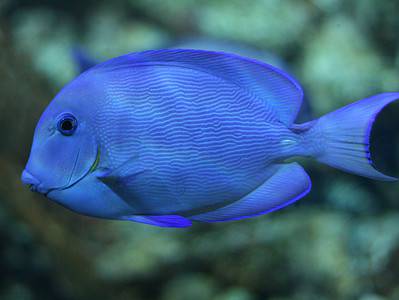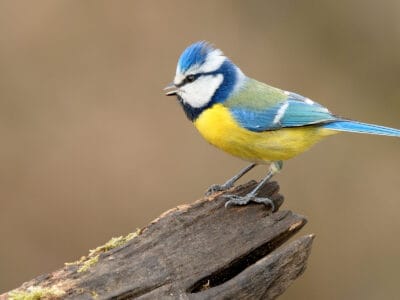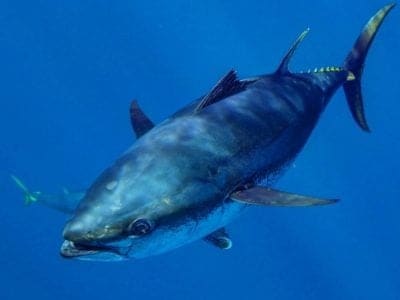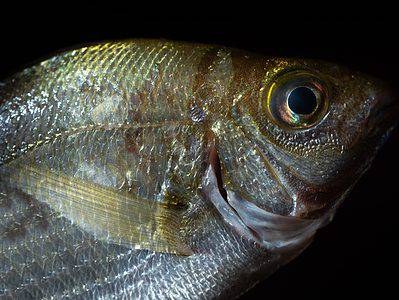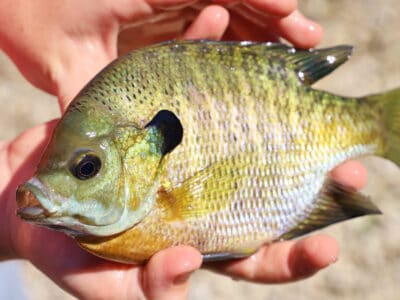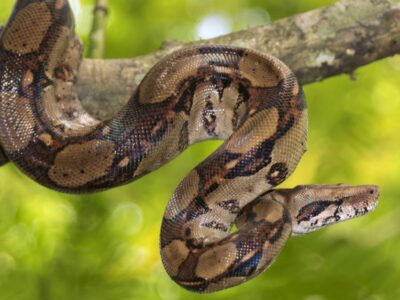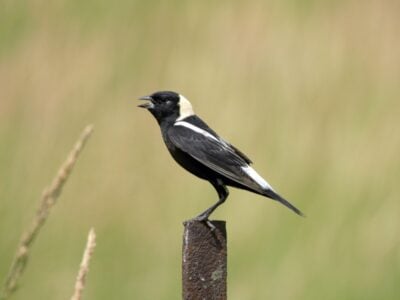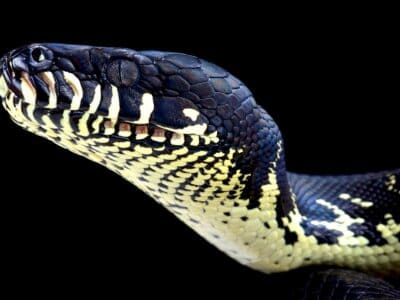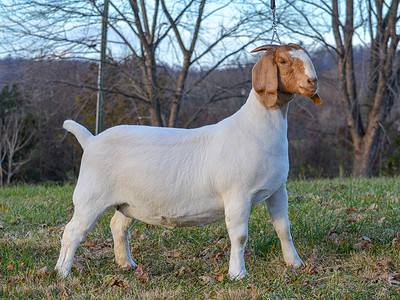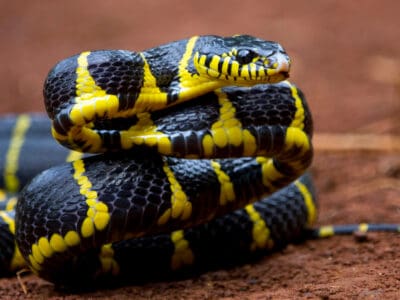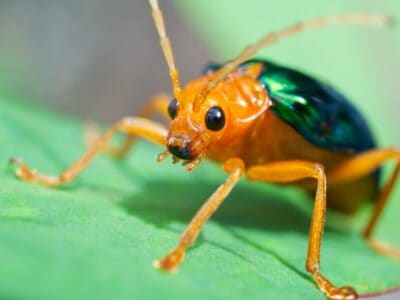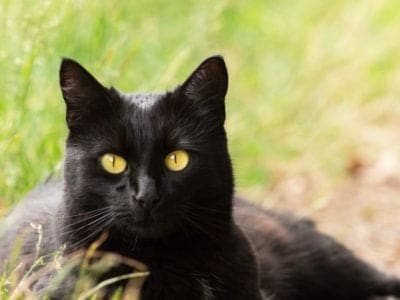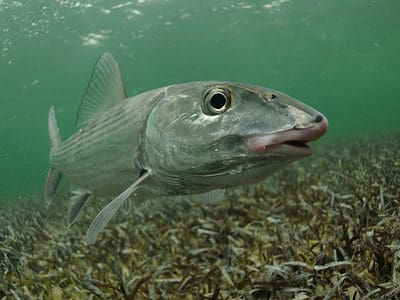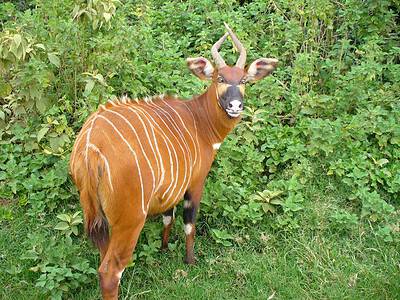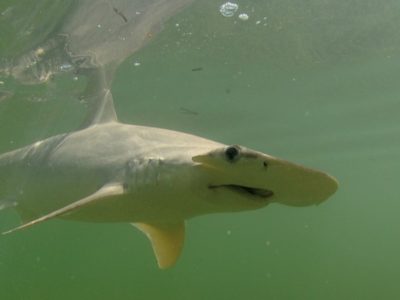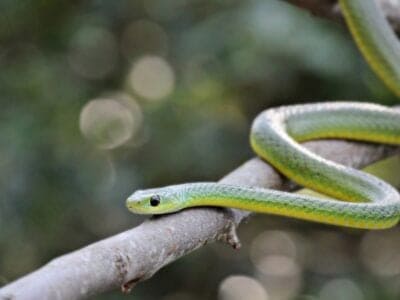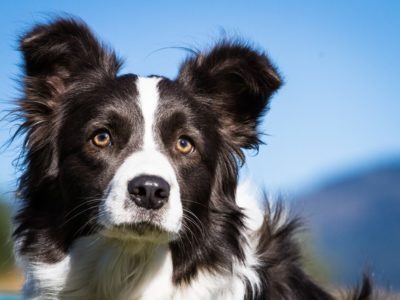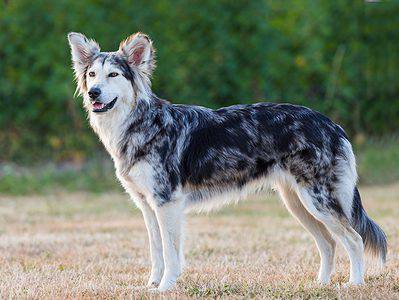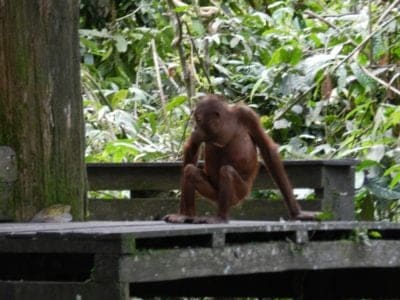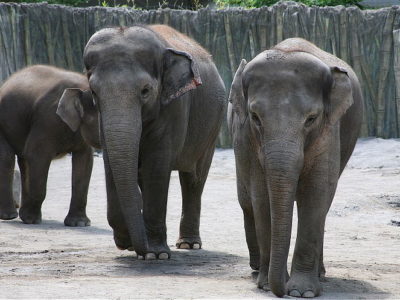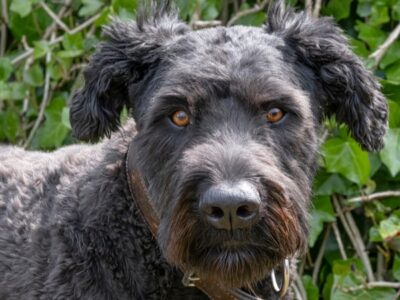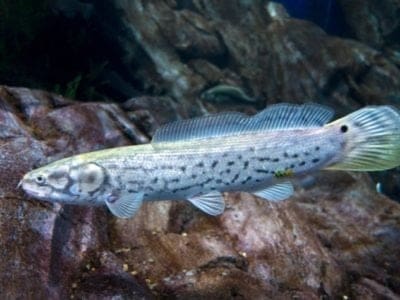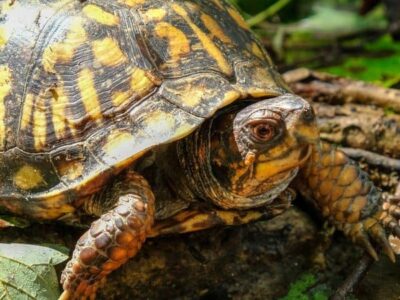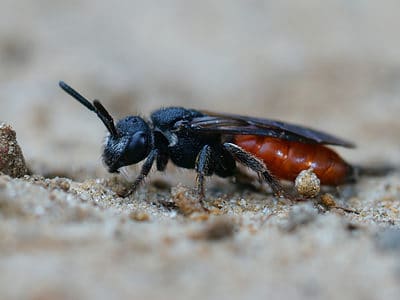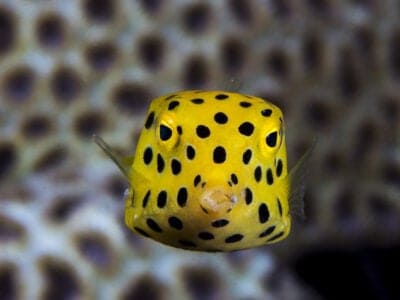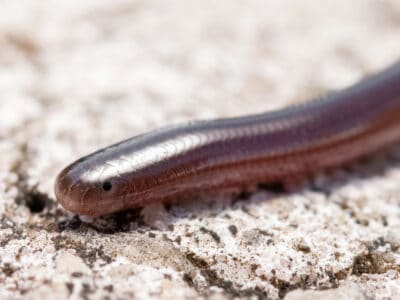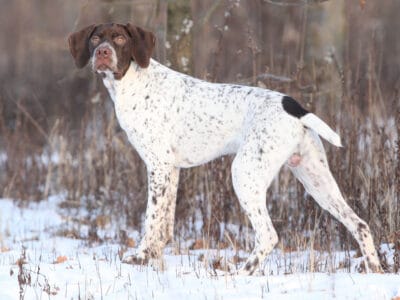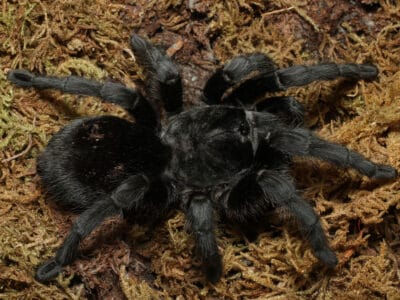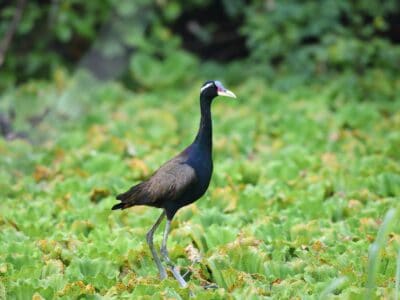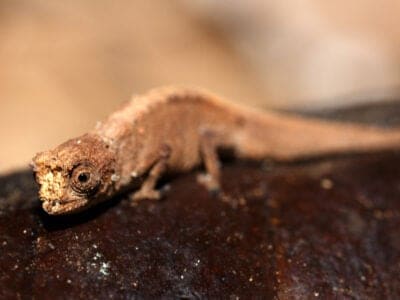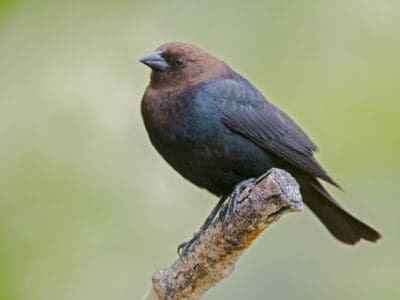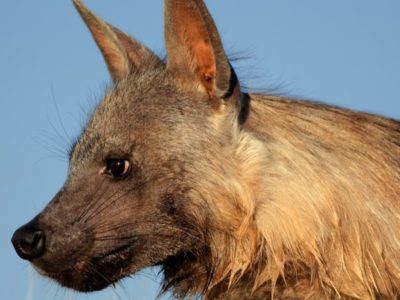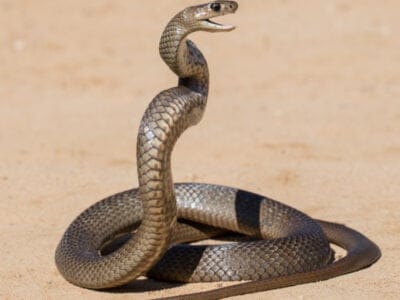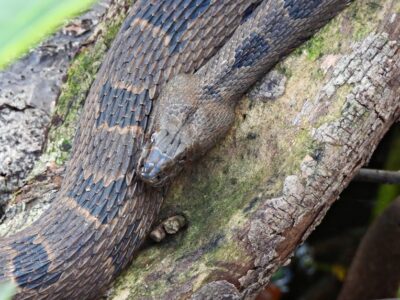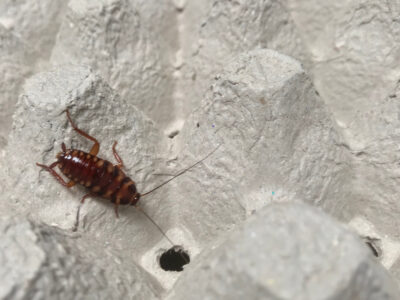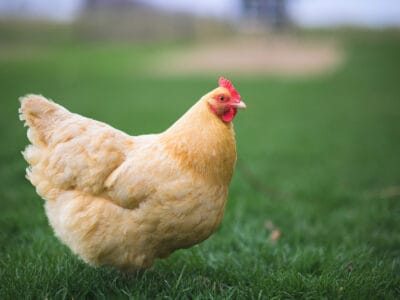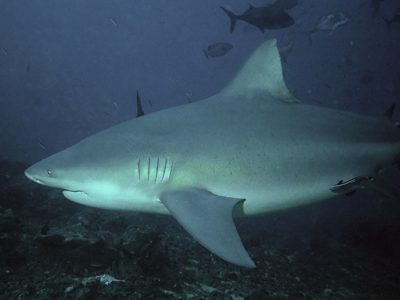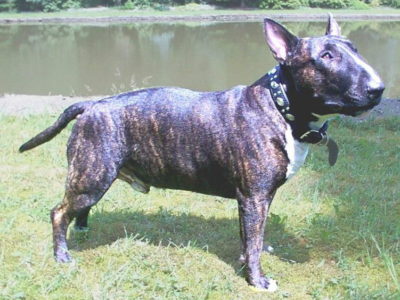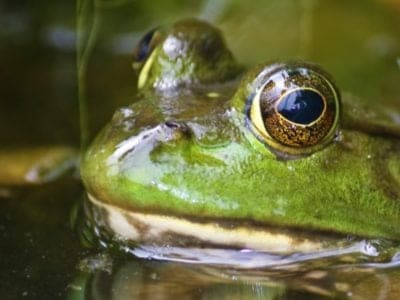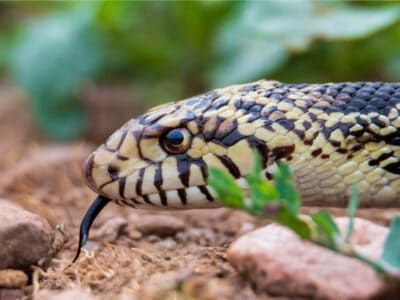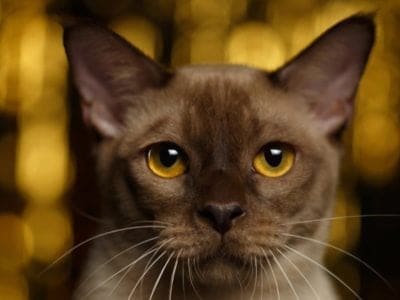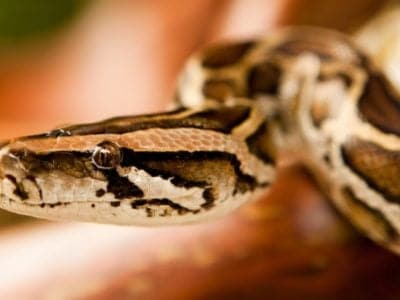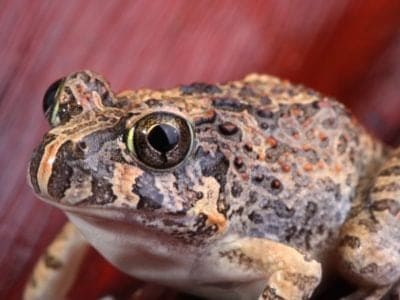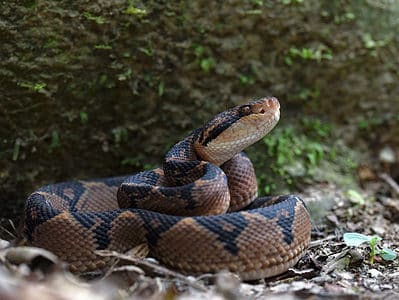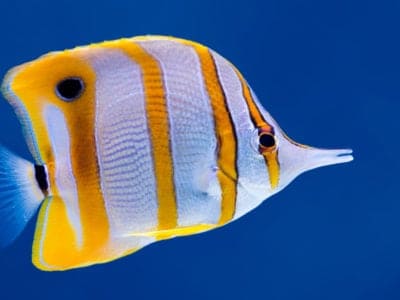Read below for information on 284 different animals that start with the letter B, from baboon to butterfly fish. The most popular animal that starts with B is the Bengal Tiger, the least popular is the Burrowing Frog. Some fun facts about B name animals are:
- There are thought to be as many as 20,000 different species of butterfly
- The bonobo shares up to 97% of the same DNA as humans
- The bison is the largest mammal in North America
Jump to any letter
List of Animals That Start with B
- Babirusa
- Baboon
- Bactrian Camel
- Badger
- Bagle – Basset Hound Mix
- Bagworm Moth
- Bagworm Moth Caterpillar
- Baird’s Rat Snake
- Bald Eagle
- Baleen Whale
- Balinese
- Balkan Lynx
- Ball Python
- Bamboo Rat
- Bamboo Shark
- Bamboo Worms
- Banana Ball Python
- Banana Cinnamon Ball Python
- Banana Eel
- Banana Spider
- Banded Krait
- Banded Palm Civet
- Banded Water Snake
- Bandicoot
- Banjo Catfish
- Barb
- Barbet
- Barbut’s Cuckoo Bumblebee
- Barinasuchus
- Bark Beetle
- Bark Scorpion
- Barn Owl
- Barn Spider
- Barn Swallow
- Barnacle
- Barnevelder
- Barosaurus
- Barracuda
- Barramundi Fish
- Barred Owl
- Barreleye Fish (Barrel Eye)
- Barylambda
- Basenji Dog
- Basenji Mix
- Basilisk Lizard
- Basilosaurus
- Basking Shark
- Bass
- Bassador
- Basset Fauve de Bretagne
- Basset Hound
- Bassetoodle
- Bat
- Bat-Eared Fox
- Batfish
- Bavarian Mountain Hound
- Baya
- Bea-Tzu
- Beabull
- Beagador
- Beagle
- Beagle Mix
- Beagle Shepherd
- Beaglier
- Beago
- Bear
- Bearded Collie
- Bearded Dragon
- Bearded Fireworm
- Bearded Vulture
- Beaski
- Beauceron
- Beauty rat snake
- Beaver
- Bed Bugs
- Bedlington Terrier
- Bee
- Bee-Eater
- Beefalo
- Beetle
- Beewolf wasp
- Belgian Canary
- Belgian Laekenois
- Belgian Malinois
- Belgian Malinois Mix
- Belgian Sheepdog
- Belgian Shepherd
- Belgian Tervuren
- Belted Kingfisher
- Beluga Sturgeon
- Beluga Sturgeon
- Bengal Tiger
- Bergamasco
- Berger Blanc Suisse
- Berger Picard
- Bernedoodle
- Bernese Mountain Dog
- Bernese Mountain Dog Mix
- Bernese Shepherd
- Betta Fish (Siamese Fighting Fish)
- Bhutan Takin
- Bichir
- Bichon Frise
- Bichpoo
- Biewer Terrier
- Bigfin Reef Squid
- Bighorn Sheep
- Bilby
- Binturong
- Bird
- Bird Of Paradise
- Bird Snake
- Birman
- Biscuit Beetle
- Bismarck Ringed Python
- Bison
- Black And Tan Coonhound
- Black and White Warbler
- Black Aphids
- Black Bass
- Black Crappie
- Black Dragon Lizard
- Black German Shepherd
- Black Mamba
- Black Marlin
- Black Mouth Cur
- Black Pastel Ball Python
- Black Rat Snake
- Black Rhinoceros
- Black Russian Terrier
- Black Sea Bass
- Black Swallowtail
- Black Swallowtail Caterpillar
- Black Tarantula
- Black Throat Monitor
- Black Wasp
- Black Widow Spider
- Black Witch Moth
- Black-Bellied Whistling Duck
- Black-Capped Chickadee
- Black-Footed Ferret
- Black-headed python
- Black-Tailed Rattlesnake
- Blackburnian Warbler
- Blackfin Tuna
- Blacknose Shark
- Blackpoll Warbler
- Blacktip Reef Shark
- Blacktip Shark
- Bladefin Basslet
- Blanket Octopus
- Blind Snake
- Blister Beetle
- Blister Beetle
- Blobfish
- Blood Python
- Bloodhound
- Blowfly
- Blue Andalusian
- Blue Belly Lizard
- Blue Catfish
- Blue Death Feigning Beetle
- Blue Dragon Sea Slug
- Blue Eyed Pleco
- Blue German Shepherd
- Blue Gray Gnatcatcher
- Blue grosbeak
- Blue Iguana
- Blue Jay
- Blue Lacy Dog
- Blue Nose Pit Bull
- Blue Picardy Spaniel
- Blue Racer
- Blue Shark
- Blue Tanager (Blue-Grey Tanager)
- Blue Tang
- Blue Tit
- Blue Whale
- Blue-Ringed Octopus
- Bluefin Tuna
- Bluefish
- Bluegill
- Bluetick Coonhound
- Boas
- Bobcat
- Bobolink
- Boelen’s python
- Boer Goat
- Boerboel
- Boggle
- Boglen Terrier
- Boiga
- Bolivian Anaconda
- Bolognese Dog
- Bombardier Beetle
- Bombay
- Bonefish
- Bongo
- Bonito Fish
- Bonnethead Shark
- Bonobo
- Booby
- Boomslang
- Booted Bantam
- Borador
- Border Collie
- Border Collie Mix
- Border Terrier
- Bordoodle
- Borkie
- Bornean Orangutan
- Borneo Elephant
- Boskimo
- Boston Terrier
- Bottlenose Dolphin
- Bouvier Des Flandres
- Bowfin
- Bowhead Whale
- Box Jellyfish
- Box Tree Moth
- Box Turtle
- Box-Headed Blood Bee
- Boxachi
- Boxador
- Boxer Dog
- Boxer Mix
- Boxerdoodle
- Boxfish
- Boxsky
- Boxweiler
- Boykin Spaniel
- Bracco Italiano
- Brachiosaurus
- Brahma Chicken
- Brahminy Blindsnake
- Braque du Bourbonnais
- Braque Francais
- Brazilian Black Tarantula
- Brazilian Terrier
- Brazilian Treehopper
- Bredl’s Python
- Briard
- British Timber
- Brittany
- Brontosaurus
- Bronze Whaler Shark
- Bronze-winged Jacana
- Brook Trout
- Brookesia Micra
- Brown Bear
- Brown Dog Tick
- Brown Headed Cowbird
- Brown Hyena
- Brown Snake
- Brown Tree Snake
- Brown Water Snake
- Brown-banded Cockroach
- Brug
- Brussels Griffon
- Budgerigar
- Buff Orpington Chicken
- Buffalo
- Buffalo Fish
- Bull and Terrier
- Bull Shark
- Bull Terrier
- Bull Trout
- Bullboxer
- Bulldog
- Bulldog Mix
- Bullfrog
- Bullmastiff
- Bullsnake
- Bumblebee
- Burmese
- Burmese Python
- Burrowing Frog
- Burrowing Owl
- Bush Baby
- Bush Dog
- Bush Viper
- Bushmaster Snake
- Butterfly
- Butterfly Fish
Animals that Start with B – Pictures and Facts
Babirusa
- Kingdom
- Animalia
- Phylum
- Chordata
- Class
- Mammalia
- Order
- Artiodactyla
- Family
- Suidae
- Genus
- Babyrousa
- Scientific Name
- Babyrousa spp.
Fun Fact: The babirusa is the only mammal with vertically growing canine teeth!
Babirusas can stand up on their back hooves to reach leaves on low branches in trees. Babirusas are known for their unique, curving tusks that are in fact teeth and give them a more prehistoric appearance than many modern animals. They are referred to as deer-pigs due to their resemblance to large pigs and tusks […] Read More
Baboon
- Kingdom
- Animalia
- Phylum
- Chordata
- Class
- Mammalia
- Order
- Primates
- Family
- Cercopithecidae
- Genus
- Papio
- Scientific Name
- Papio
Fun Fact: Can travel more than four miles a day!
Classification and Evolution The Baboon is a medium to large-sized species of Old World Monkey that is found in a variety of different habitats throughout Africa and in parts of Arabia. There are five different species of Baboon which are the Olive Baboon, the Guinea Baboon, the Chacma Baboon, the Yellow Baboon, and the Hamadryas […] Read More
Bactrian Camel
- Kingdom
- Animalia
- Phylum
- Chordata
- Class
- Mammalia
- Order
- Artiodactyla
- Family
- Camelidae
- Genus
- Camelus
- Scientific Name
- Camelus Bactrianus
Fun Fact: The camel with two humps!
The double-humped, wild Bactrian camel is one of the least-studied animals in the world and in danger of extinction! Double-humped camels are called Bactrian camels. Two species roam the planet today: domesticated Bactrian camels and wild Bactrian camels. Unfortunately, wild Bactrians are teetering on the verge of extinction and also rank among the least-studied animals on […] Read More
Badger
- Kingdom
- Animalia
- Phylum
- Chordata
- Class
- Mammalia
- Order
- Carnivora
- Family
- Mustelidae
- Genus
- Taxidiinae
- Scientific Name
- Taxidea Taxus
Fun Fact: Can reach speeds of 30 km/h!
Badgers are especially clean animals that build communal toilets away from where they live and sleep. Badgers are medium-sized animals with long, low bodies and wide feet that have elongated claws. The badger animals have bristly hair that ranges in color from black to brown as well as gold and even white. Badgers are related […] Read More
Bagle – Basset Hound Mix
- Kingdom
- Animalia
- Phylum
- Chordata
- Class
- Mammalia
- Order
- Carnivora
- Family
- Canidae
- Genus
- Canis
- Scientific Name
- Canis familiaris
Fun Fact: Bagel's mouths tend to salivate, resulting in slobbery drool
The Bagle is a mixed breed dog of the Beagle and the Basset Hound. Although this Basset Hound mix is a hybrid breed, the Bagle is a true hound through and through. If you wish to own this beautiful breed, realize that you will need a lot of patience because this canine’s hilarious antics and […] Read More
Bagworm Moth
- Kingdom
- Animalia
- Phylum
- Arthropoda
- Class
- Insecta
- Order
- Lepidoptera
- Family
- Psychidae
Fun Fact: There are approximately 1350 species in the bagworm moth family (Psychidae), which forms part of the order Lepidoptera.
Bagworm moths are a family of moths belonging to the order Lepidoptera and are known for their protective larval cases. These moths are found worldwide, but primarily in North America and Africa. There are two subspecies in this family that are especially notorious in North America called the evergreen bagworm and Abbot’s bagworm moth. These […] Read More
Bagworm Moth Caterpillar
- Kingdom
- Animalia
- Phylum
- Arthropoda
- Class
- Insecta
- Order
- Lepidoptera
- Family
- Psychidae
Fun Fact: They continually enlarge their protective cases
Bagworm Moth Caterpillar Summary Bagworm moth caterpillars are the larvae of bagworm moths, which belong to the family Psychidae. They weave silk cocoons for themselves after hatching, typically fortifying these cocoons with structures called “cases.” These structures are made of leaves, twigs, and similar materials and often resemble tiny log cabins. This has given rise […] Read More
Baird’s Rat Snake
- Kingdom
- Animalia
- Phylum
- Chordata
- Class
- Reptilia
- Order
- Squamata
- Family
- Colubridae
- Genus
- Pantherophis
- Scientific Name
- Pantherophis bairdi
Fun Fact: Baird’s rat snake subdues its prey through suffocation.
Baird’s rat snake subdues its prey through suffocation. Native to the Big Bend region, along the border of Texas and Mexico, Baird’s rate snake is considered to be elusive and hard to find in the wild. People are unlikely to ever encounter one by chance, but they can be found for sale in certain specialty […] Read More
Bald Eagle
- Kingdom
- Animalia
- Phylum
- Chordata
- Class
- Aves
- Order
- Accipitriformes
- Family
- Accipitridae
- Genus
- Haliaeetus
- Scientific Name
- haliaeetus leucocephalus
Fun Fact: Bald eagles have 20/5 vision, which is much sharper than a human's
“Some bald eagle’s nests can weigh as much as 2,000 pounds.” An endearing symbol of strength and power, the bald eagle is one of the most popular animals in all of North America. It soars majestically in the air, enthralling bird watchers and enthusiasts alike. While it was once on the brink of extinction, today […] Read More
Baleen Whale
- Kingdom
- Animalia
- Phylum
- Chordata
- Class
- Mammalia
- Order
- Artiodactyla
- Family
- Eschrichtiidae
- Genus
- Eubalaena and Balaena
- Scientific Name
- Mysticeti
Fun Fact: “Sings” a whale song during breeding season.
“Every species has baleen instead of teeth. These rows of baleen allow the whales to skim the water to collect food.” Baleen whales have survived a lot of threats from humans through the years, which is why conservation efforts have been so important. They can be quite large, weighing anywhere from a few thousand pounds […] Read More
Balinese
- Kingdom
- Animalia
- Phylum
- Chordata
- Class
- Mammalia
- Order
- Carnivora
- Family
- Felidae
- Genus
- Felis
- Scientific Name
- Felis catus
Fun Fact: Playful and energetic breed!
The Balinese, also called the purebred long-haired Siamese or Thai Siamese, is a Siamese cat with a silky, medium-long coat and fluffy tail. Named after the mysterious eyes, regal, graceful movements, and flowing, lean lines of Balinese dancers, it is commonly believed its coat was simply a natural mutation of the Siamese, although some people […] Read More
Balkan Lynx
- Kingdom
- Animalia
- Phylum
- Chordata
- Class
- Mammalia
- Order
- Carnivora
- Family
- Felidae
- Genus
- Lynx
- Scientific Name
- Lynx lynx balcanicus
Fun Fact: The Balkan lynx communicates mostly with its ears
“The Balkan Lynx is one of the rarest cats in the world.” Listed as critically endangered by the International Union for Conservation of Nature, the Balkan lynx is one of the rarest medium-sized cats on earth. Even though it is the very symbol of North Macedonia, it has been on the knife edge of extinction […] Read More
Ball Python
- Kingdom
- Animalia
- Phylum
- Chordata
- Class
- Reptilia
- Order
- Squamata
- Family
- Pythonidae
- Genus
- Python
- Scientific Name
- P. regius
Fun Fact:
The ball python is one of the 10 species that are in the genus Python. The genus is made up of constricting species in the Pythonidae family that live in the tropical and subtropical areas of the Eastern Hemisphere. The ball python female lays up to 11 eggs and coils around them to keep them […] Read More
Bamboo Rat
- Kingdom
- Animalia
- Phylum
- Chordata
- Class
- Mammalia
- Order
- Rodentia
- Family
- Spalacidae
- Genus
- Rhizomyinae
- Scientific Name
- Rhizomys sinensis
Fun Fact: They make a "boop, boop, boop" sound when danger draws near their burrow.
Enjoy this expertly researched article on the bamboo rat: where bamboo rats live, what they eat & high-quality pictures of bamboo rats. Read More
Bamboo Shark
- Kingdom
- Animalia
- Phylum
- Chordata
- Class
- Chondrichthyes
- Order
- Orectolobiformes
- Family
- Hemiscylliidae
- Genus
- Chiloscyllium
Fun Fact: Can reproduce asexually
Also known as carpet sharks or cat sharks, bamboo sharks belong to the family Hemiscylliidae. These small sharks live in shallow waters and coral reefs in the Indo-Pacific. Bamboo sharks are slow bottom-feeders that prey on crustaceans, mollusks, and small fish. Due to their small size, they feature commonly in home and commercial aquariums. However, […] Read More
Bamboo Worms
- Kingdom
- Animalia
- Phylum
- Arthropoda
- Class
- Insecta
- Order
- Lepidoptera
- Family
- Crambidae
- Genus
- Omphisa
- Scientific Name
- Omphisa fuscidentalis
Fun Fact: Bamboo worms are the larvae of moths that are eaten as a delicious snack in some parts of Asia.
Bamboo worms are the larvae of moths that are eaten as a delicious snack in some parts of Asia. The Bamboo worms (Omphisa fuscidentalis) are larvae of nocturnal moths belonging to the Crambidae family. These worms live in bamboo grooves and feast on the fresh inner pulp of the bamboo plants. An interesting fact about […] Read More
Banana Ball Python
- Kingdom
- Animalia
- Phylum
- Chordata
- Class
- Reptilia
- Order
- Squamata
- Family
- Pythonidae
- Genus
- Python
- Scientific Name
- Python regius
Fun Fact:
“Banana ball pythons are one of the easiest pet snakes to care for.” Ball pythons are one of the most popular choices of pets for snake enthusiasts and for breeders — a fact underscored by the fact that there are over 4,000 morphs of the species. And while the bright yellow banana ball python didn’t […] Read More
Banana Cinnamon Ball Python
- Kingdom
- Animalia
- Phylum
- Chordata
- Class
- Reptilia
- Order
- Squamata
- Family
- Pythonidae
- Genus
- Python
- Scientific Name
- Python Regius
Fun Fact: Banana cinnamon ball pythons came from combining the banana and cinnamon genes.
Banana cinnamon ball pythons are nonvenomous constrictors and beautiful examples of great pet snakes. One of the hundreds of different morphs, or color patterns, banana cinnamon ball pythons are just as easy-going as others. It’s a combination of two genes, one originally found in an African wild mutation, the other developed by a breeder. Banana […] Read More
Banana Eel
- Kingdom
- Animalia
- Phylum
- Chordata
- Class
- Actinopterygii
- Order
- Anguilliformes
- Family
- Muraenidae
- Genus
- Gymnothorax
- Scientific Name
- Gymnothorax miliaris
Fun Fact: Named for the yellow body and brown spots that make it look like a banana.
The banana eel (also known as the golden tail moray) is a fish that thrives in shallow freshwater and saltwater. It is primarily found in the Atlantic Ocean along the Gulf of Mexico and the Caribbean Sea. While it doesn’t have much commercial demand, the bright yellow appearance of this eel entices many exotic pet […] Read More
Banana Spider
- Kingdom
- Animalia
- Phylum
- Arthropoda
- Class
- Arachnida
- Order
- Araneae
- Family
- Araneidae
- Genus
- Nephila
Fun Fact: People spin clothing and fishing nets out of these spiders’ silk.
“Weaver of the golden web ” There are several genera of spiders called banana spiders, but few are as spectacular as Nephila. Not remotely as dangerous as the banana spider in “The Banana Boat Song,” these peaceable and relatively harmless arachnids spin webs that look like they are made of shimmering gold thread. Moreover, the […] Read More
Banded Krait
- Kingdom
- Animalia
- Phylum
- Chordata
- Class
- Reptilia
- Order
- Squamata
- Family
- Elapidae
- Genus
- Bungarus
- Scientific Name
- Bungarus fasciatus
Fun Fact: What often prevents more people from falling victim is that the banded krait does not always inject venom in a defensive bite. It saves the venom for hunting prey instead.
The banded krait is among the most venomous snakes in all of Southeastern Asia. Despite its highly toxic venom, the banded krait is shy and elusive. When approached during the day, it will assume a defensive posture at the first sign of contact. Nevertheless, you would not want to encounter a banded krait in the […] Read More
Banded Palm Civet
- Kingdom
- Animalia
- Phylum
- Chordata
- Class
- Mammalia
- Order
- Carnivora
- Family
- Viverridae
- Genus
- Hemigalus
- Scientific Name
- Hemigalus Derbyanus
Fun Fact: Markings give it camouflage!
“Banded palm civets were named for their tan and black striped coats which give the banded palm civet more camouflage in the surrounding jungle.” The Banded Palm Civet is a rare civet species found in the rainforests and tropical jungles of Southeast Asia. However, the small, Asian animal is vulnerable due to habitat loss from […] Read More
Banded Water Snake
- Kingdom
- Animalia
- Phylum
- Chordata
- Class
- Reptilia
- Order
- Squamata
- Family
- Colubridae
- Genus
- Nerodia
- Scientific Name
- Nerodia fasciata
Fun Fact: Some water snakes defend themselves violently.
“The snake with the sideways bite.” Banded water snakes are heavy-bodied, non-venomous reptiles of medium size. They’re semi-aquatic and come in variable colors. You can find them from North Carolina to Alabama along the Coastal Plain, among other regions of the United States. The creatures hybridize with northern water snakes where the Coastal Plain meets […] Read More
Bandicoot
- Kingdom
- Animalia
- Phylum
- Chordata
- Class
- Mammalia
- Order
- Peramelemorphia
- Family
- Peramelidae
- Genus
- Perameles
- Scientific Name
- Perameles
Fun Fact: Bandicoot Many species are endangered or extinct!
The humble bandicoot is one of the world’s most well-known marsupials. Endemic to the Australian region, the bandicoot animal is small to a medium-sized mammal that looks like it was cooked up in a laboratory. The unusual appearance has earned it comparisons to rodents, rabbits, or even opossums. But it is an entirely unique type […] Read More
Banjo Catfish
- Kingdom
- Animalia
Fun Fact: The banjo catfish is extremely shy and known for hiding from onlookers.
Banjo catfish consist of 43 species. The Banjo Catfish is native to South America. With plenty of nicknames such as “guitarrita catfish,” and “burrowing catfish,” this unique species stands out for its odd, banjo-like body shape and reserved behaviors. Often confused for a piece of tree bark, the fish prefers to live alone in slow-moving […] Read More
Barb
- Kingdom
- Animalia
- Phylum
- Chordata
- Class
- Actinopterygii
- Order
- Cypriniformes
- Family
- Cyprinidae
- Genus
- Barbus
- Scientific Name
- Barbus Barbus
Fun Fact: There are over 1768 known species!
Barbs are freshwater fish belonging to a family of 1,184 species. They are popular aquarium fish because of their brilliant colors of gold, orange, rosy, silver, and cherry, along with others. Also, they are available for an inexpensive price at pet shops. Though small in size, they’re aggressive predators of fish, crustaceans, and insects. 3 […] Read More
Barbet
- Kingdom
- Animalia
- Phylum
- Chordata
- Class
- Mammalia
- Order
- Carnivora
- Family
- Canidae
- Genus
- Canis
- Scientific Name
- Canis lupus
Fun Fact: This dog has the nickname ‘Mud dog’ because it likes to play in muddy, swamp-like areas.
The French word barb means beard. That’s how this dog earned the name Barbet. Dating back to 16th century France, the Barbet was bred to retrieve ducks and other waterfowl on hunting trips. They are descendants of a few dogs including the poodle, Bichon Frise, and Briard. This dog’s thick, wavy coat is designed to […] Read More
Barbut’s Cuckoo Bumblebee
- Kingdom
- Animalia
- Phylum
- Arthropoda
- Class
- Insecta
- Order
- Hymenoptera
- Family
- Apidae
- Genus
- Bombus
- Scientific Name
- Bombus barbutellus
Fun Fact: N/A
Barbut’s cuckoo bumblebee (Bombus barbutellus) is a species of parasitic bumblebee that lives in Europe. Cuckoo bumblebees do not build nests, do not have queens, and do not produce honey. They share the name cuckoo with birds in the Cuculidae family. This is because of the cuckoo bird’s habit of laying their eggs in other […] Read More
Barinasuchus
- Kingdom
- Animalia
- Phylum
- Chordata
- Class
- Reptilia
- Order
- Crocodylia
- Family
- Sebecidae
- Genus
- Barinosuchus
- Scientific Name
- Barinosuchus arveloi
Fun Fact: Largest terrestrial predator of the Cenozoic era
The Barinasuchus was the largest terrestrial predator to live in the Cenozoic era! The Barinasuchus lived during the early Cenozoic era, from the mid-Eocene epoch until the mid-Miocene. It was the largest terrestrial predator known to have lived during the so-called Age of Mammals. This huge reptile, which is estimated to have been up to […] Read More
Bark Beetle
- Kingdom
- Animalia
- Phylum
- Arthropoda
- Class
- Insecta
- Order
- Coleoptera
- Family
- Curculionidae
- Genus
- Scolytinae
Fun Fact: Not all bark beetles feed on a tree's bark. Some species feed on fruits, seeds, and other parts of the plant
Not all bark beetles feed on tree bark. Some species feed on fruits, seeds, and other parts of the plant Summary The name bark beetle refers to any of the over 2000 species of beetles of the subfamily Scolytinae. They’re called bark beetles mainly because of their tendency to bore into and feed on the […] Read More
Bark Scorpion
- Kingdom
- Animalia
- Phylum
- Arthropoda
- Class
- Arachnida
- Order
- Scorpiones
- Family
- Buthidae
- Genus
- Centruroides
- Scientific Name
- Centruroides Sculpturatus
Fun Fact: Glow under UV light
Summary Bark scorpions are among the most venomous scorpions found in the United States. While most are relatively harmless, a few species possess potent venom capable of causing serious medical complications. These tiny arachnids excel at climbing vertical surfaces and are often encountered in and around human dwellings. Although they come in a range of […] Read More
Barn Owl
- Kingdom
- Animalia
- Phylum
- Chordata
- Class
- Aves
- Order
- Strigiformes
- Family
- Tytonidae
- Genus
- Tyto
- Scientific Name
- Tyto alba
Fun Fact: Found everywhere around the world!
Barn owls are the most well-known member family of owls known for their stark white faces and haunting calls. They are extremely widespread, one of the most widespread bird species on earth. Barn owls primarily keep the rodent population in check wherever they live by preying on rats and mice. In many cultures, they are […] Read More
Barn Spider
- Kingdom
- Animalia
- Phylum
- Arthropoda
- Class
- Arachnida
- Order
- Araneae
- Family
- Araneidae
- Genus
- Araneus
- Scientific Name
- A. cavaticus
Fun Fact: Common barn dwelling spider
Barn spiders are a species of spider that is common in North America, specifically in southern parts of Canada and the northeastern United States. They are about ¾ of an inch long and have yellow/brown specks all over their bodies. Like other orb weaver spiders, the barn spider commonly builds a new web every day. […] Read More
Barn Swallow
- Kingdom
- Animalia
- Phylum
- Chordata
- Class
- Aves
- Order
- Passeriformes
- Family
- Hirundinidae
- Genus
- Hirundo
- Scientific Name
- Hirundo rustica
Fun Fact: Older offspring help care for new hatchlings.
“Most widespread swallow species in the world” The barn swallow is a passerine bird. Passerine birds are also referred to as “perching birds” and have three toes that point forward and one toe that points backward. Barn swallows are vibrantly colored and very appealing to bird watchers and enthusiasts. 4 Amazing Barn Swallow Facts! These […] Read More
Barnacle
- Kingdom
- Animalia
- Phylum
- Arthropoda
- Order
- Maxillopoda
- Family
- Thecostraca
Fun Fact: Closely related to crabs and lobsters!
If you’ve heard of someone being referred to as a barnacle, it means they’re overly clingy. What is a barnacle? The barnacle is one of the oldest surviving creatures on earth and lives in oceans around the world. It is a small crustacean that attaches to the hard surfaces of rocks, sea walls, boats, debris, […] Read More
Barnevelder
- Kingdom
- Animalia
- Phylum
- Chordata
- Class
- Aves
- Order
- Galliformes
- Family
- Phasianidae
- Genus
- Gallus
- Scientific Name
- Gallus gallus domesticus
Fun Fact: The average lifespan of a Barnevelder chicken is 7 years. However, if cared for properly, these chickens can live up to 15 years old.
Barnevelder chickens originate from the Barneveld region in the Netherlands, where it is immensely popular and often the first breed natives think of when the word chicken is mentioned. They are highly sought-after for their dark brown eggs. While these birds are aesthetically pleasing, they are also hardy and adapt well to being confined. Barnevelders […] Read More
Barosaurus
- Kingdom
- Animalia
- Phylum
- Chordata
- Class
- Reptilia
- Order
- Saurischia
- Family
- Diplodocidae
- Genus
- Barosaurus
- Scientific Name
- Barosaurus lentus
Fun Fact: If a barosaurus were alive today, it could stand on its hind legs and look in a 5th floor apartment window.
Barosaurus (pronunciation BAH-roe-SORE-us) was one of the largest animals ever to walk the earth. Some scientists think it may have had as many as 8 hearts. Like other sauropods, it had a long neck and tail and walked on four legs as big as tree trunks. Its femur was almost 5 feet long! It could […] Read More
Barracuda
- Kingdom
- Animalia
- Phylum
- Chordata
- Class
- Actinopterygii
- Order
- Perciformes
- Family
- Sphyraenidae
- Genus
- Sphyraena
- Scientific Name
- Sphyraena
Fun Fact: Can grow to nearly 2 meters long!
Barracuda fish capture their prey in the ocean with quick bursts of speed as fast as 27 mph. Barracuda fish are carnivores that hunt for prey at night. These saltwater fish live in warm water – specifically tropical and subtropical oceans. A large, lower jaw and sharp teeth give barracudas a fierce appearance. Some barracudas […] Read More
Barramundi Fish
- Kingdom
- Animalia
- Phylum
- Chordata
- Class
- Actinopterygii
- Order
- Perciformes
- Family
- Latidae
- Genus
- Lates
- Scientific Name
- Lates calcarifer
Fun Fact: Scale rings indicate age
The Barramundi, also known as the Asian sea bass, is a versatile fish that is prized as both a food source and a challenging sport fish. Aside from substantial wild populations in many geographical regions, the species is also cultivated through aquaculture in multiple countries. The barramundi’s compact and elongated body are among its most […] Read More
Barred Owl
- Kingdom
- Animalia
- Phylum
- Chordata
- Class
- Aves
- Order
- Strigiformes
- Family
- Strigidae
- Genus
- Strix
- Scientific Name
- Strix varia
Fun Fact: Like other owls, the barred owl swallows its prey whole.
“The Barred Owl is a noisy owl and a silent hunter.” The barred owl is known for the repertoire of sounds it makes and for its consummate skill as a hunter. It uses the accuracy of its huge eyes and asymmetrical ears to pinpoint the location of even a tiny animal on the forest floor. […] Read More
Barreleye Fish (Barrel Eye)
- Kingdom
- Animalia
- Phylum
- Chordata
- Class
- Actinopterygii
- Order
- Argentiniformes
- Family
- Opisthoproctidae
- Genus
- 9 Genera
- Scientific Name
- Macropinna microstoma
Fun Fact: A barreleye fish's eyes can rotate in their head to look for prey.
Barreleye Fish Summary The barreleye fish (also known as spook fish) is a bizarre species that has a transparent head filled with fluid, also known as a forehead shield. Barreleye fish inhabit tropical and cold waters such as the Atlantic, Indian, and Pacific oceans at a depth of around 2,000 to 4,000 feet deep where […] Read More
Barylambda
- Kingdom
- Animalia
- Phylum
- Chordata
- Class
- Mammalia
- Order
- Cimolesta
- Family
- Barylambdidae
- Genus
- Barylambda
- Scientific Name
- Barylambda faberi
Fun Fact: Barylambda was one of the largest animals that lived during the Paleocene
Barylambda is an extinct genus of unusual-looking mammal that lived in North America during the Late Paleocene Epoch, between 58.7 and 55.8 million years ago. It was a heavily-built herbivore that lived on soft vegetation. Barylambda was one of the largest animals that lived during the Paleocene. Although it was a herbivore with very limited […] Read More
Basenji Dog
- Kingdom
- Animalia
- Phylum
- Chordata
- Class
- Mammalia
- Order
- Carnivora
- Family
- Canidae
- Genus
- Canis
- Scientific Name
- Canis lupus
Fun Fact: Alert, affectionate and energetic!
The Basenji Dog is known as a “barkless” dog, but they aren’t exactly quiet either. Bred to be hunting dogs in central Africa, Basenjis are believed to be one of the first domesticated dogs. The name “Basenji” means dog of the bush – referring to the African bush of their origin. These unusual, graceful, canines […] Read More
Basenji Mix
- Kingdom
- Animalia
- Phylum
- Chordata
- Class
- Mammalia
- Order
- Carnivora
- Family
- Canidae
- Genus
- Canis
- Scientific Name
- Canis lupus familiaris
Fun Fact:
Basenji Mix Introduction The basenji is an ancient breed of hound dog that appears in artwork from ancient Egypt and Babylon and may have been one of the first types of dogs domesticated by human beings. They were rediscovered by explorers in the 19th century in the Congo region of Africa where they were kept […] Read More
Basilisk Lizard
- Kingdom
- Animalia
- Phylum
- Chordata
- Class
- Reptilia
- Order
- Squamata
- Family
- Corytophanidae
- Genus
- Basiliscus
Fun Fact: Can run/walk on water.
The basilisk lizard, or the basilisk, is a beautiful but quite unpleasant reptile to be around. They love spending their days in the rainforest near rivers and streams, which they can run quickly across without ever sinking. Pay attention to their colors to help in your identification of each of the four species. While one […] Read More
Basilosaurus
- Kingdom
- Animalia
- Phylum
- Chordata
- Class
- Mammalia
- Order
- Artiodactyla
- Family
- Basilosauridae
- Genus
- Basilosaurus
- Scientific Name
- Basilosaurus
Fun Fact:
If you thought that Tyrannosaurus Rex was the king of all prehistoric creatures, you may be surprised to hear of another reigning king that lived in the oceans. Basilosaurus, or the “king lizard,” was a prehistoric whale that dominated the sea. Weighing up to 10 tons, the Basilosaurus lived after the dinosaurs had gone extinct […] Read More
Basking Shark
- Kingdom
- Animalia
- Phylum
- Chordata
- Class
- Chondrichthyes
- Order
- Lamniformes
- Family
- Cetorhinidae
- Genus
- Cetorhinus
- Scientific Name
- Cetorhinus Maximus
Fun Fact: The second biggest fish in the world!
Basking sharks, also known as bone sharks, may have an intimidating appearance and massive size that could easily frighten nearby swimmers or divers, but they are essentially harmless as far as humans and aquatic animals are concerned. Much like whales, these sharks feed on plankton and other tiny life forms by filtering vast amounts of […] Read More
Bass
- Kingdom
- Animalia
- Phylum
- Chordata
- Class
- Actinopterygii
- Order
- Perciformes
Fun Fact: Prized by sport fishers for their size and strength
Summary Bass are freshwater and marine fish that belong to the order of Perciformes. You can find them all over the world in rivers, streams, lakes, and ponds, as well as brackish estuaries and the open ocean. Many sport fishers and anglers prize this fish for their size and strength as well as for their […] Read More
Bassador
- Kingdom
- Animalia
- Phylum
- Chordata
- Class
- Mammalia
- Order
- Carnivora
- Family
- Canidae
- Genus
- Canis
- Scientific Name
- Canis lupus
Fun Fact: This dog is also known as a Bassetdor or a Basset Lab.
While Basset Hounds and Labrador Retrievers may breed naturally on their own, human breeders began to intentionally cross them on a large scale starting in the late 1990s. The dutiful and friendly Bassador is the fusion of two unlikely and unrelated breeds: a Basset Hound and a Labrador Retriever. The Basset Hound is a low-slung […] Read More
Basset Fauve de Bretagne
- Kingdom
- Animalia
- Phylum
- Chordata
- Class
- Mammalia
- Order
- Carnivora
- Family
- Canidae
- Genus
- Canis
- Scientific Name
- Canis lupus
Fun Fact: A friendly and intelligent hunting dog that loves nothing more than to spend time with its owner.
The Basset Fauve de Bretagne is a friendly and intelligent hunting dog that loves nothing more than to spend time with its owner. The history of this breed dates all the way back to 16th century France when the long-legged Grand Fauve de Bretagne was first bred. Originating from the region of Brittany (or Bretagne […] Read More
Basset Hound
- Kingdom
- Animalia
- Phylum
- Chordata
- Class
- Mammalia
- Order
- Carnivora
- Family
- Canidae
- Genus
- Canis
- Scientific Name
- Canis lupus
Fun Fact: Forget the training when not rewarded!
Basset hounds have a stubborn streak that manifests as a charming personality trait. Although they are obedient, you should expect your basset hound to express themselves by sighing or even attempting to participate in your family’s conversations With sweet personalities and charming faces, basset hounds are a beloved part of modern culture. Bassets originated in […] Read More
Bassetoodle
- Kingdom
- Animalia
- Phylum
- Chordata
- Class
- Mammalia
- Order
- Carnivora
- Family
- Canidae
- Genus
- Canis
- Scientific Name
- Canis lupus
Fun Fact: Basset hounds have been around since the 7th century, but the bassetoodle made its first appearance in the 2000s.
Most bassetoodles share the short legs and stocky stature of their basset hound parents. However, these dogs typically have facial features and other qualities that strongly resemble the poodle side of their genetics. With curly hair, floppy ears, and an adorable face that can’t be denied, the bassetoodle is by far one of the most […] Read More
Bat
- Kingdom
- Animalia
- Phylum
- Chordata
- Class
- Mammalia
- Order
- Chiroptera
- Family
- Microchiroptera
- Genus
- Emballonuridae
- Scientific Name
- Chiroptera
Fun Fact: Detects prey using echolocation!
“A mother bat gives birth to her babies while hanging upside down.” There are 47 species of bats living in the United States and 1300 species of bats in total. Bats live in many types of environments except in extremely cold places (polar regions) and extremely hot ones (deserts). Bats are important pollinators and help […] Read More
Bat-Eared Fox
- Kingdom
- Animalia
- Phylum
- Chordata
- Class
- Mammalia
- Order
- Carnivora
- Family
- Canidae
- Genus
- Otocyon
- Scientific Name
- Otocyon megalotis
Fun Fact: Bat-eared foxes can run up to 35 MPH!
The bat-eared fox’s large pointy ears allow it to hear insects such as termites crawling. They can hear the slightest movements insects make. The bat-eared fox’s large pointy ears allow it to hear insects such as termites crawling. Their ears can grow to over five inches, allowing them to hear the slightest movements insects make. […] Read More
Batfish
- Kingdom
- Animalia
- Phylum
- Chordata
- Class
- Actinopterygii
- Order
- Lophiiformes
- Family
- Ogcocephalidae
Fun Fact: The batfish has a lure on its head to attract prey
The batfish has the ability to “walk” along the sandy bottom of the ocean with its fins. The batfish family is perhaps among the most unusual-looking fish in the world. With their round or arrow-shaped heads and short, narrow bodies, they hardly look like fish at all, but rather some kind of bizarre primordial animal […] Read More
Bavarian Mountain Hound
- Kingdom
- Animalia
- Phylum
- Chordata
- Class
- Mammalia
- Order
- Carnivora
- Family
- Canidae
- Genus
- Canis
- Scientific Name
- Canis lupus
Fun Fact: Calm, quiet and poised!
Bavarian Mountain Hounds are descendants of Bracken, the original hunting dogs of Germany. Called Gebirgsschweisshund in German, they were the result of mixing a Hanoverian Scenthound with a Red Mountain Scenthound. The breed was excellent at finding the injured game that had been shot down. They used their scent to track down the prey. Bavarian […] Read More
Baya
- Kingdom
- Animalia
- Phylum
- Chordata
- Class
- Aves
- Order
- Passeriformes
- Family
- Ploceidae
- Genus
- Ploceus
- Scientific Name
- Ploceus philippinus
Fun Fact: The baya constructs a massive nest out of plant fibers
The humble baya has the ability to construct some of the most elaborate nests in the entire animal kingdom. The baya, also known as the baya weaver, is a small songbird that takes up residence in huge nests it has constructed for the breeding season. Their homes are composed of an entrance and chamber in […] Read More
Bea-Tzu
- Kingdom
- Animalia
- Phylum
- Chordata
- Class
- Mammalia
- Order
- Carnivora
- Family
- Canidae
- Genus
- Canis
- Scientific Name
- Canis lupus familiaris
Fun Fact: The Bea-Tzu has a fast-growing coat
Introduction The Bea-Tzu is a cross between a Beagle and Shih-Tzu. The Shih-Tzu is one of the most ancient breeds, and it comes from Tibet and China. The Beagle was bred to hunt rabbits in England, but it has a gentle disposition. The Bea Tzu is classified as a toy dog due to its small […] Read More
Beabull
- Kingdom
- Animalia
- Phylum
- Chordata
- Class
- Mammalia
- Order
- Carnivora
- Family
- Canidae
- Genus
- Canis
- Scientific Name
- Canis lupus familiaris
Fun Fact: An excellent companion for cats!
An excellent companion for cats! Introduction A Beabull is the mixture of two of the most popular dog breeds, the Beagle and the Bulldog. These delightful little dogs are lovable, curious, and loyal to their families. The breed mix boasts a lineage that includes two of Europes’ oldest breeds. Beagles go back to 16th century […] Read More
Beagador
- Kingdom
- Animalia
- Phylum
- Chordata
- Class
- Mammalia
- Order
- Carnivora
- Family
- Canidae
- Genus
- Canis
- Scientific Name
- Canis lupus
Fun Fact: Beagadors like to dig, so make sure your garden has a good fence around it!
Beagadors are sweet and friendly with great personalities and will loyally follow you through your daily activities. Created by crossing a beagle with a labrador retriever, the beagador is a designer dog with a sweet and playful personality. These dogs are extremely cute, do well with kids, and love to follow their owners everywhere. Both […] Read More
Beagle
- Kingdom
- Animalia
- Phylum
- Chordata
- Class
- Mammalia
- Order
- Carnivora
- Family
- Canidae
- Genus
- Canis
- Scientific Name
- Canis lupus
Fun Fact: Have become popular family pets!
Beagles are energetic, friendly dogs known for their loyalty. These hounds are popular with families due to their curiosity, fun-loving personality and, of course, their sweet faces! Evolution The history of the beagle is believed to date all the way back to 5th century Greece. These dogs hunted alongside their owners in search of foxes, […] Read More
Beagle Mix
- Kingdom
- Animalia
- Phylum
- Chordata
- Class
- Mammalia
- Order
- Carnivora
- Family
- Canidae
- Genus
- Canis
- Scientific Name
- Canis lupus
Fun Fact: Reagles are the best students as they love to learn new tricks, so training them is a breeze.
Beagles are notorious for their love of other pets and children, as they have happy-go-lucky attitudes and love attention. But they can be destructive if they don’t get enough attention and tend to howl when lonely. Additionally, beagles rank high on the Consumer’s Guide for excessive barking and how challenging they are to train. This […] Read More
Beagle Shepherd
- Kingdom
- Animalia
- Phylum
- Chordata
- Class
- Mammalia
- Order
- Carnivora
- Family
- Canidae
- Genus
- Canis
- Scientific Name
- Canis lupus
Fun Fact: This dog can perform a wide range of exotic and acrobatic tricks that are not expected of a dog this size.
The Beagle Shepherd is an enthusiastic and clever dog that can be trained to do the most amazing circus-like tricks, which is surprising to find in a larger dog. The beagle shepherd is another hybrid breed that has emerged from the recent frenzy of designer dog creation. As is typical of such efforts, the originator […] Read More
Beaglier
- Kingdom
- Animalia
- Phylum
- Chordata
- Class
- Mammalia
- Order
- Carnivora
- Family
- Canidae
- Genus
- Canis
- Scientific Name
- Canis lupus
Fun Fact: These dogs have great sniffer abilities
A Beaglier is a hybrid breed, making them a crossbreed between a Beagle and a Cavalier King Charles Spaniel. These dogs are compact in size and are known to be active and energetic. They are also loyal to their owners and their families. The Beaglier puppies are known to inherit some of the best qualities […] Read More
Beago
- Kingdom
- Animalia
- Phylum
- Chordata
- Class
- Mammalia
- Order
- Carnivora
- Family
- Canidae
- Genus
- Canis
- Scientific Name
- Canis lupus
Fun Fact: Beagos are good swimmers like their Golden Retriever parent.
Beagos are playful, sturdy dogs and always ready for an energetic game of chase, hide-and-seek, or fetch. Breed a Golden Retriever with a Beagle and the result is a Beago! This crossbreed originated back in the 1980s. Beagos claim some of the most appealing features of each of their parents. They belong to the hybrid […] Read More
Bear
- Kingdom
- Animalia
- Phylum
- Chordata
- Class
- Mammalia
- Order
- Carnivora
- Family
- Ursidae
- Genus
- Ursus
- Scientific Name
- Ursidae
Fun Fact: There are 8 different species!
Certain Asiatic bears build nests in trees similar to that of a bird. There are eight different species of bears across the world with a conservation status ranging from vulnerable to least concern. Depending on the bear species, habitats include North America, South America, Europe, Asia, and the northern-most polar regions. While not ordinarily a […] Read More
Bearded Collie
- Kingdom
- Animalia
- Phylum
- Chordata
- Class
- Mammalia
- Order
- Carnivora
- Family
- Canidae
- Genus
- Canis
- Scientific Name
- Canis lupus
Fun Fact: Weekly brushing is mandatory!
The bearded collie is known to make a great family and show dogs and is also a great sheepdog. Bred in Scotland to herd sheep and cattle, the Bearded Collie is a purebred dog that is trained to herd cattle in any weather or terrain.Despite being purebred dogs, bearded collies can be found in shelter […] Read More
Bearded Dragon
- Kingdom
- Animalia
- Phylum
- Chordata
- Class
- Reptilia
- Order
- Squamata
- Family
- Agamidae
- Genus
- Pogona
- Scientific Name
- Pogona Vitticeps
Fun Fact: Can grow to up 24 inches long!
“A bearded dragon can change the color of its beard according to its mood” Bearded dragons live in Central and Southern Australia. They are omnivores that can live to be 15 years or older. This animal uses the beard of spines under its chin to communicate its moods to other animals. A bearded dragon is […] Read More
Bearded Fireworm
- Kingdom
- Animalia
- Phylum
- Annelida
- Class
- Polychaeta
- Order
- Aciculata
- Family
- Amphinomidae
- Genus
- Hermodice
- Scientific Name
- Hermodice carunculata
Fun Fact: They emit bioluminescence during their mating ritual.
“Each body segment of the bearded fireworm has hollow venom-filled bristles, which break off after penetrating flesh.” Summary The bearded fireworm (Hermodice carunculata) is a flat, segmented bristle worm that lives in the tropical waters of the Atlantic Ocean and the Mediterranean Sea. You can find them resting under stones in rocky areas or seagrass […] Read More
Bearded Vulture
- Kingdom
- Animalia
- Phylum
- Chordata
- Class
- Aves
- Order
- Accipitriformes
- Family
- Accipitridae
- Scientific Name
- Gypaetus barbatus
Fun Fact: These birds eat a diet of bones
“Bearded vultures eat the bones of dead animals.” The bristly black feathers beneath this bird’s bill makes it look like it has a beard. These birds live in a habitat of mountains, forests, and rocky cliffs. They are scavengers with a diet of reptiles, birds, and mammals. The lifespan of this amazing bird in the […] Read More
Beaski
- Kingdom
- Animalia
- Phylum
- Chordata
- Class
- Mammalia
- Order
- Carnivora
- Family
- Canidae
- Genus
- Canis
- Scientific Name
- Canis lupus
Fun Fact: Beaskis love to play, so get ready to go on plenty of long walks.
Beagles are hunting dogs, and huskies are working dogs. This means that the beaski is an attentive and loyal breed that is always looking for a job to do. Whether you it them along for the workday or simply provide plenty of activities, remember that your beaski wants to be involved in your life. The […] Read More
Beauceron
- Kingdom
- Animalia
- Phylum
- Chordata
- Class
- Mammalia
- Order
- Carnivora
- Family
- Canidae
- Genus
- Canis
- Scientific Name
- Canis lupus
Fun Fact: The Beauceron is named after the place of its origin (Beauce) in France
The Beauceron is also nicknamed the Bas Rouge, which generally translates to red stockings, because of the small red accents in the fur. The Beauceron (also known as the Berger de Beauce or the Bas Rouge) is a French herding dog that originated in the late Middle Ages from the agricultural region southwest of Paris, […] Read More
Beauty rat snake
- Kingdom
- Animalia
- Phylum
- Chordata
- Class
- Reptilia
- Order
- Squamata
- Family
- Colubridae
- Genus
- Orthriophis
- Scientific Name
- Orthriophis taeniura
Fun Fact: Beauty Rat Snakes are relatively harmless if left undisturbed, only attempting to bite out of fear.
The beauty rat snake is quite a sight to see, and they are often praised for their ability to eliminate unwanted critters. They aren’t venomous, but they have a bite that can take out their prey. You won’t find them naturally outside of eastern Asia, but you might be able to purchase them as a […] Read More
Beaver
- Kingdom
- Animalia
- Phylum
- Chordata
- Class
- Mammalia
- Order
- Rodentia
- Family
- Castoridae
- Genus
- Castor
Fun Fact: Builds a dam from sticks and leaves!
The beaver dam is one of the great natural wonders of the animal kingdom. A symbol of industry and work ethic, this semi-aquatic rodent can alter its surrounding landscape in order to shield itself from dangerous predators. Because the dam has beneficial effects on the rest of the environment, the beaver is considered to be […] Read More
Bed Bugs
- Kingdom
- Animalia
- Phylum
- Arthropoda
- Class
- Insecta
- Order
- Hemiptera
- Family
- Cimicidae
- Genus
- Cimex
- Scientific Name
- Cimex lectularius
Fun Fact: Bed bugs feed for 4-12 minutes.
The bed bug is an insect that feeds on blood and is most active at night. True to its name, the bed bug is most common in beds. These insects are notoriously difficult to get rid of. These parasitic insects are members of the genus Cimex. Their bites cause skin rashes, but may also cause […] Read More
Bedlington Terrier
- Kingdom
- Animalia
- Phylum
- Chordata
- Class
- Mammalia
- Order
- Carnivora
- Family
- Canidae
- Genus
- Canis
- Scientific Name
- Canis Lupus
Fun Fact: Highly active and intelligent dogs!
The build of a Bedlington Terrier consists of an arched back, pear-shaped head, and a thin, curvy tail. Since they are so curvy in appearance, it is speculated that some type of sighthound (most likely a Whippet) is somewhere within the family tree of the Bedlington Terrier. Evolution Bedlington Terriers are compact, yet energetic little […] Read More
Bee
- Kingdom
- Animalia
- Phylum
- Arthropoda
- Class
- Insecta
- Order
- Hymenoptera
- Family
- Andrenidae
- Genus
- Apis
- Scientific Name
- Apis mellifera
Fun Fact: Rock paintings of bees date back 15,000 years
“Bees are descended from predatory wasps, but they no longer prey on other insects.” Any beekeeper knows that life on earth would be very difficult without these insects. Though not all provide honey, many of them are pollinators of plants that provide food for humans and other animals. As they move from flower to flower, […] Read More
Bee-Eater
- Kingdom
- Animalia
- Phylum
- Chordata
- Class
- Aves
- Order
- Coraciiformes
- Family
- Meropidae
- Genus
- Nyctyornis, Meropogon, Merops
- Scientific Name
- Nyctyornis amictus, Merops pusillus, and others
Fun Fact: They roll around in dirt to prevent external parasites
“These birds are highly social, roosting together and breeding in colonies.” Summary The bee-eater (Meropidae) is a medium-sized non-passerine bird native to Africa, Asia, southern Europe, and Australia. They inhabit a wide range of habitats, from semi-open woodlands to tropical rainforests. They don’t require much more than a perch and a place to dig their […] Read More
Beefalo
- Kingdom
- Animalia
- Phylum
- Chordata
- Class
- Mammalia
- Order
- Artiodactyla
- Family
- Bovidae
- Genus
- Bos x Bison
- Scientific Name
- Bos taurus × Bison bison
Fun Fact: Beefalo meat is leaner and higher in protein than beef
Beefalo are the fertile offspring of (usually) a domestic bull and an American bison cow. While crossing a domestic cow and a bison bull can produce offspring, they are few in number. The beefalo is a fertile hybrid of beef cattle and American bison (buffalo), with the result being mostly cattle in appearance and genetics. […] Read More
Beetle
- Kingdom
- Animalia
- Phylum
- Arthropoda
- Class
- Insecta
- Order
- Endopterygota
- Family
- Coleoptera
Fun Fact: There are more than 350,000 different species
“The beetle form the largest order of animals on Earth” According to biologists, there are at least 400,000 species or types of beetle, all belonging to the Coleoptera order, the Endopterygota suborder, and a great variety of lower classifications. These insects make up one-quarter of all animal lifeforms, and most insects. They are found all […] Read More
Beewolf wasp
- Kingdom
- Animalia
- Phylum
- Arthropoda
- Class
- Insecta
- Order
- Hymenoptera
- Family
- Crabronidae
- Genus
- Philanthus
Fun Fact: They hunt bees
Beewolf wasps are insects belonging to the genus Philanthus. These efficient predators hunt and paralyze various species of bees to feed their newly-hatched larvae. However, as adults, they feed on nectar and pollen. These solitary wasps are not generally dangerous to nonallergic humans, though they may sting if threatened. The IUCN does not currently include […] Read More
Belgian Canary
- Kingdom
- Animalia
- Phylum
- Chordata
- Class
- Aves
- Order
- Passeriformes
- Family
- Fringillidae
- Genus
- Serinus
- Scientific Name
- Serinus canaria domestica
Fun Fact: The Belgian canary is one of the oldest and most influential in its genus.
“Domestic canaries are popular cage and aviary birds.” Summary The Belgian canary (Serinus canaria domestica) is one of the most popular and influential canaries that helped develop some of the world’s most fantastic canary varieties today. Bred for its body posture, the Belgian can sit hunched on its perch. They are an excellent choice for […] Read More
Belgian Laekenois
- Kingdom
- Animalia
- Phylum
- Chordata
- Class
- Mammalia
- Order
- Carnivora
- Family
- Canidae
- Genus
- Canis
- Scientific Name
- Canis lupus
Fun Fact:
Belgian Laekenois Introduction The Belgian Laekenois is an intelligent, hardworking dog. One of four (and perhaps the oldest) variations of the Belgian Shepherd, this energetic dog is distinguished by its rough red coat and is named after the village of Laeken in Belgium. Originally bred to herd livestock (and protect drying laundry), this member of […] Read More
Belgian Malinois
- Kingdom
- Animalia
- Phylum
- Chordata
- Class
- Mammalia
- Order
- Carnivora
- Family
- Canidae
- Genus
- Canis
- Scientific Name
- Canis lupus familiaris
Fun Fact:
“Belgian malinois are courageous, loyal dogs that have served bravely in the military of several nations.” Belgian Malinois Introduction The Belgian malinois is a medium-sized sheep-herding dog originating in Belgium. It is also called the Belgian shepherd or the Belgian sheepdog. They look similar to German shepherds but have a more slender and elegant build. […] Read More
Belgian Malinois Mix
- Kingdom
- Animalia
- Phylum
- Chordata
- Class
- Mammalia
- Order
- Carnivora
- Family
- Canidae
- Genus
- Canis
- Scientific Name
- Canis lupus
Fun Fact: These Belgian Malinois mixes can be scary when they are threatened. But it's important to note that they know when aggression is necessary. In other words, they will not attack unless they sense danger.
Belgian Malinois were initially bred to be herding dogs but have filled various roles over the years. They are notorious for their work ethic, which extends to all aspects of their lives, making them excellent dogs for service jobs like security, rescue work, military, emotional assistance, and police work. While still a relatively unknown dog, […] Read More
Belgian Sheepdog
- Kingdom
- Animalia
- Phylum
- Chordata
- Class
- Mammalia
- Order
- Carnivora
- Family
- Canidae
- Genus
- Canis
- Scientific Name
- Canis lupus familiaris
Fun Fact:
“The Belgian sheepdog is the preferred breed of US Navy SEAL teams.” Belgian Sheepdog Introduction Belgian sheepdogs are a medium-sized breed which was originally developed to herd sheep in Belgium. Over the years, they have also proven themselves to be valuable assets to the military, police, search-and-rescue-teams, people in need of service animals, and families […] Read More
Belgian Shepherd
- Kingdom
- Animalia
- Phylum
- Chordata
- Class
- Mammalia
- Order
- Carnivora
- Family
- Canidae
- Genus
- Canis
- Scientific Name
- Canis lupus
Fun Fact: The sheepdog is also known as the Groenendael. All four Belgian varieties have nicknames for Belgian villages.
The Belgian Shepherd serves the greater good; it is trained to work with law enforcement and the military in a variety of roles. The Belgian Shepherd comes out of Belgium where it worked as a herding animal for centuries. Some Europeans classify the breed into four types: the Groenendael, Laekenois, Malinois, and Tervuren. However, the […] Read More
Belgian Tervuren
- Kingdom
- Animalia
- Phylum
- Chordata
- Class
- Mammalia
- Order
- Carnivora
- Family
- Canidae
- Genus
- Canis
- Scientific Name
- Canis lupus
Fun Fact: The first breed to win an AKC Herding Championship.
While some people see a guard dog when they look at the Belgian Tervuren, they are actually a herding breed. Known for their athleticism and ease of training, as well as their incredible intelligence, the Belgian Tervuren can be an amazing companion in the right home. Like any dog, there are certain lifestyles where it […] Read More
Belted Kingfisher
- Kingdom
- Animalia
- Phylum
- Chordata
- Class
- Aves
- Order
- Coraciiformes
- Family
- Alcedinidae
- Genus
- Megaceryle
- Scientific Name
- M. alcyon
Fun Fact:
“Belted kingfishers are one of the few birds to nest on the ground, where they excavate a tunnel into a sandy bank.” The belted kingfisher is a rather large bird that is easy to spot – if you know where to look. While all kingfishers were once placed into the same family, recent research has […] Read More
Beluga Sturgeon
- Kingdom
- Animalia
- Phylum
- Chordata
- Class
- Actinopterygii
- Order
- Acipenseriformes
- Family
- Acipenseridae
- Genus
- Huso
- Scientific Name
- Huso huso
Fun Fact: The beluga sturgeon is one of the largest bony fish in the world!
Endemic to the Caspian and Black Seas, the beluga sturgeon is impressive in its size. As one of the largest bony fish in the world, this species has no known natural predators anywhere in its native habitat. However, the degradation of the Caspian Sea from unregulated fishing and industry has led to its inevitable decline. […] Read More
Beluga Sturgeon
- Kingdom
- Animalia
- Phylum
- Chordata
- Class
- Actinopterygii
- Order
- Acripenseriformes
- Family
- Acipenseridae
- Genus
- Huso
- Scientific Name
- Huso huso
Fun Fact:
The Beluga Sturgeon is one of the largest fish in the world! The Beluga Sturgeon, the Great Sturgeon, or just Beluga, is the third largest living species of bony fish in the world. It is found in the Caspian and Black Seas and, at one time, in the Adriatic Sea. The roe from this fish […] Read More
Bengal Tiger
- Kingdom
- Animalia
- Phylum
- Chordata
- Class
- Mammalia
- Order
- Carnivora
- Family
- Felidae
- Genus
- Panthera
- Scientific Name
- Panthera Tigris Tigris
Fun Fact: The most numerous species of tiger!
Bengal tigers are the national animal of both Bangladesh and India. One of the most beautiful and iconic animals to walk the Earth, Bengal tigers are both regal and rare. They’re one of the biggest cat species in the world. Bengals are larger than other tiger species, second only to the Siberian. Today, wild Bengal tigers […] Read More
Bergamasco
- Kingdom
- Animalia
- Phylum
- Chordata
- Class
- Mammalia
- Order
- Carnivora
- Family
- Canidae
- Genus
- Canis
- Scientific Name
- Canis lupus
Fun Fact: Bergamascos are excellent problem solvers; they were bred to be independent as they work alongside their nomadic shepherd owners.
The Bergamasco is a dog that has a long history. It can be traced back to thousands of years ago. Experts believe that the breed began in Persia, which is now called Iran. The Bergamasco was used as a sheepdog by nomads in the mountain between Persia and Europe, who settled in Italy. Compared to […] Read More
Berger Blanc Suisse
- Kingdom
- Animalia
- Phylum
- Chordata
- Class
- Mammalia
- Order
- Carnivora
- Family
- Canidae
- Genus
- Canis
- Scientific Name
- Canis lupus familiaris
Fun Fact:
The Berger Blanc Suisse, called the White Swiss Shepherd or Snowy Shepherd in English, traces its roots back to the Thuringian shepherd dog, named for the region of Germany where it first was bred. The Thuringian shepherd dog species was a predecessor of the German Shepherd, with whom the Berger Blanc Suisse is a close […] Read More
Berger Picard
- Kingdom
- Animalia
- Phylum
- Chordata
- Class
- Mammalia
- Order
- Carnivora
- Family
- Canidae
- Genus
- Canis
- Scientific Name
- Canis lupus
Fun Fact: Berger means shepherd in French
The Berger Picard made an appearance at the very first French dog show in 1863. The Berger Picard, also known as the Picardy Shepherd, is a lanky herding dog with a big, generous spirit. It hails from the region of Picardy in northern France, where the dog plied its trade helping the French farmers and […] Read More
Bernedoodle
- Kingdom
- Animalia
Fun Fact: The Bernedoodle was first bred in 2003 to create a dog with a similar temperament to the Bernese Mountain Dog that would have a longer lifespan.
Bernedoodles are also known as the Bernese Mountain Poo. Bernedoodles were bred to be companion dogs. They have one Poodle (or Miniature/Toy Poodle) parent and one Bernese Mountain Dog parent. The mix of traits from their Poodle and Bernese Mountain dog genes gives these dogs a very playful, loving, and gentle personality. They are also […] Read More
Bernese Mountain Dog
- Kingdom
- Animalia
- Phylum
- Chordata
- Class
- Mammalia
- Order
- Carnivora
- Family
- Canidae
- Genus
- Canis
- Scientific Name
- Canis Lupus
Fun Fact: Very loyal, faithful and affectionate!
Bernese mountain dogs are large, strong, friendly animals with a lineage dating back 2,000 years. Reaching 27 inches tall at the shoulder, the Bernese mountain dog is known to be a large and strong animal that comes from the canton of Bern, Switzerland, thus giving it the name. It is covered in a thick, long […] Read More
Bernese Mountain Dog Mix
- Kingdom
- Animalia
- Phylum
- Chordata
- Class
- Mammalia
- Order
- Carnivora
- Family
- Canidae
- Genus
- Canis
- Scientific Name
- Canis lupus
Fun Fact: This Bernese mountain dog mix gets very attached to its loved ones and demands plenty of attention.
The Bernese Mountain Dog is a working dog known for rescue missions and pulling carts. This breed is incredibly patient and peaceful, making them great companions. However, many people are attracted to a Berneses mountain dog mix, as some of these hybrids are comfortable in extreme temperatures but may have longer lifespans than purebred Bernese mountain dogs […] Read More
Bernese Shepherd
- Kingdom
- Animalia
- Phylum
- Chordata
- Class
- Mammalia
- Order
- Carnivora
- Family
- Canidae
- Genus
- Canis
- Scientific Name
- Canis lupus
Fun Fact: Bernese shepherds prefer cool climates
Bernese shepherds are intelligent, calm, and extremely good-natured giants with a strong work ethic and a desire to please. German shepherds are big dogs. Bernese mountain dogs are even larger. Cross these two canine lines, and the result is the Bernese shepherd, a gentle giant of a dog who is intelligent, calm, and extremely good-natured. […] Read More
Betta Fish (Siamese Fighting Fish)
- Kingdom
- Animalia
- Phylum
- Chordata
- Class
- Actinopterygii
- Order
- Perciformes
- Family
- Osphronemidae
- Genus
- Betta
- Scientific Name
- Betta splendens
Fun Fact: Can live in low-oxygen environments!
The Siamese fighting fish, also known as the betta fish, is second only to the goldfish in popularity as a home aquarium pet. It is an aggressive, colorful fish that is native to Thailand, Vietnam, and Cambodia by way of the Mekong Delta. It is also present in Cambodia, Myanmar, Laos, Vietnam, and Malaysia and […] Read More
Bhutan Takin
- Kingdom
- Animalia
- Phylum
- Chordata
- Class
- Mammalia
- Order
- Artiodactyla
- Family
- Bovidae
- Genus
- Budorcas
- Scientific Name
- Budorcas taxicolor whitei
Fun Fact: Live in bamboo forests 15,000 feet above sea level
“The Bhutan Takin is the national animal of Bhutan!” Summary The Bhutan takin is one of the four extant subspecies of takin. A member of the ungulate subfamily Caprinae, the Bhutan takin lives throughout Bhutan, northeastern India, Tibet, and parts of China. In Bhutan, takins are revered and feature prominently in folk legends. They gather in […] Read More
Bichir
- Kingdom
- Animalia
- Phylum
- Chordata
- Class
- Actinopterygii
- Order
- Polypteriformes
- Family
- Polypteridae
- Genus
- Polypterus
Fun Fact: The bichir species is more than 400 million years old
Bichirs are slender, prehistoric-looking fish that are often thought to resemble dinosaurs or eastern dragons. Bichir fish are native to Africa and can be found in nearly every freshwater body on the continent. Their distinctive appearances and highly interactive personalities have also made bichirs incredibly popular as aquarium pets. 3 Incredible Bichir Facts! Taking a […] Read More
Bichon Frise
- Kingdom
- Animalia
- Phylum
- Chordata
- Class
- Mammalia
- Order
- Carnivora
- Family
- Canidae
- Genus
- Canis
- Scientific Name
- Canis lupus
Fun Fact: Gentle mannered, playful and affectionate!
Perhaps no dog breed is quite as happy-go-lucky as the Bichon Frise. Throughout history, this dog has been referred to as the clown dog due to its strong desire to entertain and bring smiles to its family and friends. Bichons are of French and Spanish descent. The Spanish originally used them as sailing and herding […] Read More
Bichpoo
- Kingdom
- Animalia
- Phylum
- Chordata
- Class
- Mammalia
- Order
- Carnivora
- Family
- Canidae
- Genus
- Canis
- Scientific Name
- Canis lupus
Fun Fact: Despite its small size, the alert nature and sharp bark of this canine make it a good watch dog.
Though the Bichpoo is small in size, these dogs are alert and bold, making them excellent watchdogs for families. A Bichpoo is a lively, intelligent dog. It’s a mix between a Bichon Frise and a miniature poodle and is also known as the Poochon, Bichon Poo, and Bichon Poodle. Though it’s the product of two […] Read More
Biewer Terrier
- Kingdom
- Animalia
- Phylum
- Chordata
- Class
- Mammalia
- Order
- Carnivora
- Family
- Canidae
- Genus
- Canis
Fun Fact: A toy terrier dog and is elegant and tri-colored.
The Biewer Terrier is a toy terrier dog that is elegant and tri-colored. Moreover, it has long hair, making it all the more pretty. A rare purebred dog, the Biewer Terrier, owes its breeding to the occurrence of a recessive piebald gene. Terriers are known to be energetic, friendly, and playful – making them one […] Read More
Bigfin Reef Squid
- Kingdom
- Animalia
- Phylum
- Mollusca
- Class
- Cephalopoda
- Order
- Myopsida
- Family
- Loliginidae
- Genus
- Sepioteuthis
- Scientific Name
- Sepioteuthis lessoniana
Fun Fact: Can change color through use of chromatophores
Also known as the glitter squid or oval squid, the bigfin reef squid belongs to the loliginid squid family Loliginidae. They get their name from the large oval fin connected to the mantle. Although they rank as a medium-sized species and only measure around 1.5 to 13 inches long, they grow faster than almost any […] Read More
Bighorn Sheep
- Kingdom
- Animalia
- Phylum
- Chordata
- Class
- Mammalia
- Order
- Artiodactyla
- Family
- Bovidae
- Genus
- Ovis
- Scientific Name
- Ovis canadensis
Fun Fact: Bighorn rams can run at speeds up to 40 miles per hour when fighting for dominance.
Bighorn sheep live in the United States, Canada, and Mexico. There are different subspecies of bighorn sheep, but they all have big horns. Some live in the desert while others live in the mountains. The facts are that at least two populations of bighorn sheep may soon be extinct. 5 Incredible Facts About Bighorn Sheep! […] Read More
Bilby
- Kingdom
- Animalia
- Phylum
- Chordata
- Class
- Mammalia
- Order
- Peramelemorphia
- Family
- Thylacomyidae
- Genus
- Macrotis
- Scientific Name
- Macrotis lagotis
Fun Fact: In Australia, the chocolate bilby replaces the chocolate bunny for Easter.
“The Bilby is Australia’s answer to the rabbit, sort of.” Of all the charming and unusual creatures found in Australia, the bilby, also called the pinkie, the dalgyte or the rabbit-eared bandicoot is one of the most endearing. An omnivore that looks somewhat like a rabbit with its huge ears and somewhat like a possum […] Read More
Binturong
- Kingdom
- Animalia
- Phylum
- Chordata
- Class
- Mammalia
- Order
- Carnivora
- Family
- Viverridae
- Genus
- Arctictis
- Scientific Name
- Arctictis binturong
Fun Fact: Also known as the Asian Bearcat!
Classification and Evolution The Binturong (Arctictis Binturong) is a medium sized carnivore that is found inhabiting the dense forests of South-East Asia. It belongs to the same family as other small carnivores including Civets, Genets, Mongooses, and Fossa and shares a number of characteristics with them including a long snout and having more teeth than […] Read More
Bird
- Kingdom
- Animalia
- Phylum
- Chordata
- Class
- Aves
Fun Fact: Not all birds are able to fly!
There are numerous species of birds found in a wide variety of habitats all around the world. Birds are one of the most thriving groups of animals on the planet as they generally have their habitat (the skies) to themselves. Birds can be easily distinguished from other animals due to their sharp, pointed beaks, thin […] Read More
Bird Of Paradise
- Kingdom
- Animalia
- Phylum
- Chordata
- Class
- Aves
- Order
- Passeriformes
- Family
- Paradisaeidae
Fun Fact: There are around 50 different species!
“Only a few species of hummingbird or pheasant rival the birds of paradise in bright colors and bizarre plumage.” The bird of paradise bird (also spelled bird-of-paradise) lives in tropical forests in Australia and the surrounding islands. Most types are sexually dimorphic, meaning the males and females differ in appearance. While the females have muted […] Read More
Bird Snake
- Kingdom
- Animalia
- Phylum
- Chordata
- Class
- Reptilia
- Order
- Squamata
- Family
- Colubridae
- Genus
- Thelotornis
- Scientific Name
- Thelotornis usambaricus
Fun Fact: Usambara vine snakes sit perfectly still and sway in the wind like a stick.
Bird snakes in the Thelotornis genus are native to Africa and are one of the few highly venomous colubrids. The Usambara vine snake is the rarest of all the bird snakes and only inhabits small pockets in Tanzania, Kenya, and Mozambique. Their venom is hemotoxic and can cause uncontrollable bleeding, and yet, they’re so shy, […] Read More
Birman
- Kingdom
- Animalia
- Phylum
- Chordata
- Class
- Mammalia
- Order
- Carnivora
- Family
- Felidae
- Genus
- Felis
- Scientific Name
- Felis catus
Fun Fact: A blue-eyed beauty!
The first thing you notice about a Birman cat is its glittering blue eyes! These cats are very popular with families due to their affectionate, playful nature. They have medium to long silky hair and can be found in many unique colors. These adaptable felines are good with children and adults alike. Breed History While […] Read More
Biscuit Beetle
- Kingdom
- Animalia
- Phylum
- Arthropoda
- Class
- Insecta
- Order
- Coleoptera
- Family
- Ptinidae
- Genus
- Stegobium
- Scientific Name
- Stegobium paniceum
Fun Fact: The biscuit beetle form a symbiotic relationship with yeast
The biscuit beetle benefits from a symbiotic relationship with a yeast fungus (symbiosis means the relationship is mutually beneficial to both parties). The yeast produces vitamin B for the beetle because their diet is otherwise nutritionally poor. It passes on the fungus to the offspring by covering the eggs with it. The biscuit beetle is […] Read More
Bismarck Ringed Python
- Kingdom
- Animalia
- Phylum
- Chordata
- Class
- Reptilia
- Order
- Squamata
- Family
- Pythonidae
- Genus
- Bothrochilus
- Scientific Name
- Bothrochilus boa
Fun Fact: When these snakes are babies, they look like Halloween snakes with their bright orange and black bands.
The Bismarck ringed python is a medium-sized, nonvenomous snake that lives in the underbrush and leaf litter of its island home. Its vibrant juvenile color, beautiful adult color with iridescent scales, and active personality make this an interesting snake. This little-known snake is one of the most beautiful python species in the world. Incredible Bismarck […] Read More
Bison
- Kingdom
- Animalia
- Phylum
- Chordata
- Class
- Mammalia
- Order
- Artiodactyla
- Family
- Bovidae
- Genus
- Bison
- Scientific Name
- Bison Bison
Fun Fact: Largest mammal in North America!
The Largest Land Mammal in North America With their gigantic heads, massive horns, and shaggy fur, bison are the largest mammal in North America and have long dazzled the imaginations of native peoples and American settlers. At the start of the 1800s, about 60 million bison roamed the forests, plains, and river valleys from Alaska […] Read More
Black And Tan Coonhound
- Kingdom
- Animalia
- Phylum
- Chordata
- Class
- Mammalia
- Order
- Carnivora
- Family
- Canidae
- Genus
- Canis
- Scientific Name
- Canis lupus
Fun Fact: This dog has its own unique howl.
Each dog develops its own unique baying, which its owner can recognize from a far distance. The Black and Tan Coonhound is an all-American old-fashioned breed of dog that is a mix between the Black and Tan Virginia Foxhound and the Bloodhound, appearing in the 18th century. This crossbreed is a working dog mainly used […] Read More
Black and White Warbler
- Kingdom
- Animalia
- Phylum
- Chordata
- Class
- Aves
- Order
- Passeriformes
- Family
- Parulidae
- Genus
- Mniotilta
- Scientific Name
- Mniotilta Varia
Fun Fact:
“The black and white warbler spends winters in Jamaica hiding in coffee plantations.” If you hear the thin, high-pitched song of the black and white warbler, then you know spring is in full effect. These birds are easy to spot against bright foliage and are one of the favorites for beginner birders; just look for […] Read More
Black Aphids
- Kingdom
- Animalia
- Phylum
- Arthropoda
- Class
- Insecta
- Order
- Hemiptera
- Family
- Aphididae
Fun Fact: One of the most destructive pests in the world
Black aphids are small, sap-sucking insects in the superfamily Aphidoidea. The term black aphid does not refer to a single species, but rather several species. These “black aphids” differ in size, shape, and behavior, but generally appear dark brown or black, hence the name. Black aphids are among the most destructive and difficult to remove […] Read More
Black Bass
- Kingdom
- Animalia
- Phylum
- Chordata
- Class
- Actinopterygii
- Order
- Perciformes
- Family
- Centrarchidae
- Genus
- Micropterus
Fun Fact: The most popular game fish in North America
Summary The term black bass is used to refer to 13 different species of fish in the genus Micropterus. This genus includes well-known species such as the largemouth bass, smallmouth bass, and spotted bass. All black bass species hail from freshwater waterways throughout North America. Anglers prize black bass as game fish due to their […] Read More
Black Crappie
- Kingdom
- Animalia
- Phylum
- Chordata
- Class
- Actinopterygii
- Order
- Perciformes
- Family
- Centrarchidae
- Genus
- Pomoxis
- Scientific Name
- Pomoxis nigromaculatus.
Fun Fact: Black crappie fish can hybridize with white crappie, resulting in a closely related species.
The black crappie is a freshwater fish native to North America. It is a prized sport fish because it grows quickly, is simple to catch, and is tasty. Black crappies have a maximum length of 20 inches and a maximum lifespan of eight years. Black crappies usually live in clear lakes, ponds, and rivers that […] Read More
Black Dragon Lizard
- Kingdom
- Animalia
- Phylum
- Chordata
- Class
- Reptilia
- Order
- Squamata
- Family
- Varanidae
- Genus
- Varanus
- Scientific Name
- Varanus salvator macromaculatus
Fun Fact: Their black color is due to a genetic mutation!
“Their black color is due to a genetic mutation!“ Facts Water monitors are the second largest lizards in the world, after Komodo dragons.The black dragon lizard is completely black. It is high in demand because of this.This monitor lizard is not its own subspecies. It is actually a hyper-melanistic version of the southeast Asian water […] Read More
Black German Shepherd
- Kingdom
- Animalia
- Phylum
- Chordata
- Class
- Mammalia
- Order
- Carnivora
- Family
- Canidae
- Genus
- Canis
- Scientific Name
- Canis lupus familiaris
Fun Fact: Thought to be aggressive, they are actually affectionate dogs with a protective streak.
The black German shepherd is an extremely rare variation of the standard black-and-tan German shepherd. The black German shepherd is not a separate breed or a result of crossbreeding. Unlike the standard German shepherd, it is completely black, but is still a purebred Shepherd. These dogs were originally bred in Germany to be working dogs, […] Read More
Black Mamba
- Kingdom
- Animalia
- Phylum
- Chordata
- Class
- Reptilia
- Order
- Squamata
- Family
- Elapidae
- Genus
- Dendroaspis
- Scientific Name
- D. polylepis
Fun Fact: Black mambas are the longest venomous snake in Africa, and second longest in the world.
Natives of sub-Saharan Africa, black mambas are widely feared as the most dangerous snake in the world; but do they deserve the reputation? Yes, their venom is deadly; in fact, as little as 15-20 mg is a lethal dose and yet they inject up to 280 mg when they strike. Yet, they’re shy, and not […] Read More
Black Marlin
- Kingdom
- Animalia
- Phylum
- Chordata
- Class
- Actinopterygii
- Order
- Istiophoriformes
- Family
- Istiophordae
- Genus
- Istiompax
- Scientific Name
- Istiompax Indica
Fun Fact: Every black marlin is born as a female.
Black marlin are one of the largest bony fishes. Usually found in the Indian and the Pacific oceans, the black marlin is a fish that comfortably exists in the tropical and subtropical areas and can swim at speeds of up to 80 miles per hour. It is a species of marline and has a maximum […] Read More
Black Mouth Cur
- Kingdom
- Animalia
- Phylum
- Chordata
- Class
- Mammalia
- Order
- Carnivora
- Family
- Canidae
- Genus
- Canis
- Scientific Name
- Canis lupus
Fun Fact: From the dog's description in the book, it is believed that Old Yeller was actually a Black Mouth Cur.
“From the dog’s description in the book, it is believed that Old Yeller was a black mouth cur.” Introduction The black mouth cur is something of a jack-of-all-trades in the dog world. American settlers in the South bred it as a combination watchdog, herding dog, and hunting dog by mixing many breeds from Europe. Affectionate, […] Read More
Black Pastel Ball Python
- Kingdom
- Animalia
- Phylum
- Chordata
- Class
- Reptilia
- Order
- Squamata
- Family
- Pythonidae
- Genus
- Python
- Scientific Name
- Python regius
Fun Fact:
“The black pastel ball python morph is characterized by its warm, earthy toned coloration and high contrast markings.” Black Pastel Ball Python Summary First bred in 2002 by Gulf Coast Exotics, the black pastel ball python is a unique color morph known primarily for its dark brown coloration and warm rust or golden-yellow patterning. While […] Read More
Black Rat Snake
- Kingdom
- Animalia
- Phylum
- Chordata
- Class
- Reptilia
- Order
- Squamata
- Family
- Colubridae
- Genus
- Pantheropis
- Scientific Name
- Pantheropis obsoletus
Fun Fact: They're also called black pilot snakes due to a myth that they "pilot" venomous snakes to a den where they can go into brumation for the winter.
At eight feet, black rat snakes are one of the longest snakes living in North America. Black rat snakes are native to the central and eastern portions of the United States including South Carolina, Ohio, Kentucky, and other states. They are carnivores with a diet of mice, frogs, birds’ eggs, and, of course, rats. This […] Read More
Black Rhinoceros
- Kingdom
- Animalia
- Phylum
- Chordata
- Class
- Mammalia
- Order
- Perissodactyla
- Family
- Rhinocerotidae
- Genus
- Diceros
- Scientific Name
- Diceros Bicornis
Fun Fact: Horns can grow to 1.5m!
With a population that numbered one million at the beginning of the 20th century, today the black rhino is Critically Endangered The black rhino once roamed across a vast range in Africa, but heavy poaching has brought the species to the brink of extinction. Today, the black rhino is seeing its population rebound and is slowly […] Read More
Black Russian Terrier
- Kingdom
- Animalia
- Phylum
- Chordata
- Class
- Mammalia
- Order
- Carnivora
- Family
- Canidae
- Genus
- Canis
- Scientific Name
- Canis Lupus
Fun Fact: Confident, calm and highly intelligent!
Black Russian Terriers, or blackies, were bred in the former USSR to be a working dog for the army. A mix of about 17 different breeds went into creating this large, black dog. Some of the breeds used to create the Black Russian Terrier breed include Rottweilers, Giant Schnauzers, Airedale Terriers, and Newfoundlands. Black Russian […] Read More
Black Sea Bass
- Kingdom
- Animalia
- Phylum
- Chordata
- Class
- Actinopterygii
- Order
- Perciformes
- Family
- Serranidae
- Genus
- Centropristis
- Scientific Name
- Centropristis striata
Fun Fact: Black sea bass males become fluorescent blue and green during the breeding season.
Black sea bass males become fluorescent blue and green during the breeding season. Black Sea Bass Facts Black sea bass are not always black. They can have vivid blue or gray colors as well. The juveniles tend to be dusky brown with stripes.Black sea basses, like all sea bass, are born female. Some of them […] Read More
Black Swallowtail
- Kingdom
- Animalia
- Phylum
- Arthropoda
- Class
- Insecta
- Order
- Lepidoptera
- Family
- Papilionidae
- Genus
- Papilio
- Scientific Name
- Papilio polyxenes
Fun Fact: N/A
The black swallowtail butterfly (Papilio polyxenes) also known as the Eastern black swallowtail is a species of butterfly that can be found in various regions of North America. They have black wings with yellow spots and a wingspan of 2.5 to 3.5 inches. The females also have a blue or blue-green spot on the hindwings. […] Read More
Black Swallowtail Caterpillar
- Kingdom
- Animalia
- Phylum
- Arthropoda
- Class
- Insecta
- Order
- Lepidoptera
- Family
- Papilionidae
- Genus
- Papilio
- Scientific Name
- Papilio polyxenes
Fun Fact: N/A
The black swallowtail caterpillar (Papilio polyxenes), also known as the Eastern black swallowtail caterpillar, and the parsnip swallowtail caterpillar, primarily inhabits wooded areas, meadows, gardens, and other areas which contain a plethora of host plants. The caterpillar is known to feed on a variety of plants from the Apiaceae family, including dill, fennel, parsley, and […] Read More
Black Tarantula
- Kingdom
- Animalia
- Phylum
- Arthropoda
- Class
- Arachnida
- Order
- Araneae
- Family
- Theraphosidae
- Genus
- Grammostola
- Scientific Name
- Grammostola pulchra
Fun Fact: They can grow to be 7 inches long!
They are covered in velvety black hairs. The black tarantula, also known as the Brazilian black tarantula, is a large black tarantula that can get to be 6-7 inches long. They live in tropical climates and can be found in Brazil and Uraguay. Black tarantulas make burrows in the ground where they live a solitary […] Read More
Black Throat Monitor
- Kingdom
- Animalia
- Phylum
- Chordata
- Class
- Reptilia
- Order
- Squamata
- Family
- Varanidae
- Genus
- Varanus
- Scientific Name
- Varanus albigularis microstictus
Fun Fact: The black-throat monitor is the second-longest lizard species in Africa and the largest in mass.
“The black-throat monitor is the second-longest lizard species in Africa and the largest in mass.“ Black Throat Monitor Facts The black-throat monitor is the heaviest in mass and second-longest lizard species in Africa in terms of length. They grow up to 7 feet in length and weigh over 60 pounds!They are excellent climbers. They live […] Read More
Black Wasp
- Kingdom
- Animalia
- Phylum
- Arthropoda
- Class
- Insecta
- Order
- Hymenoptera
- Family
- Sphecidae
- Genus
- Sphex
- Scientific Name
- Sphex pensylvanicus
Fun Fact: The great black wasp is a species of digger wasp.
The black wasp, which is often referred to as the Great Black Wasp, is rather small, and it is grouped with other insects under the digger wasp species. They go by the scientific name Sphex pensylvanicus. They are found all across North America. They are found all over the United States, spanning from the west […] Read More
Black Widow Spider
- Kingdom
- Animalia
- Phylum
- Arthropoda
- Class
- Arachnida
- Order
- Araneae
- Family
- Theridiidae
- Genus
- Latrodectus
- Scientific Name
- Latrodectus
Fun Fact: They typically prey on insects!
“Only the Bites of Female Black Widow Spiders Are Dangerous” Their reputations are fierce, but in reality, black widow spiders — aka Latrodectus — are calm, loner pacifists that only unleash venomous bites when they’ve exhausted all other defensive options. Thirty-two species of the infamous arachnids populate the Earth on every continent except Antarctica, and […] Read More
Black Witch Moth
- Kingdom
- Animalia
- Phylum
- Arthropoda
- Class
- Insecta
- Order
- Lepidoptera
- Family
- Erebidae
- Genus
- Ascalapha
- Scientific Name
- Ascalapha odorata
Fun Fact: Some folklore associate Black Witch Moths with bad luck (and even death!), while other associates them with good fortune.
If you see a large, brown Black Witch Moth fly into your home, beware. Not because it is dangerous. In fact, this harmless moth is common in many areas of Central America and migrates through the United States and even Canada. However, these moths are considered to be a harbinger of death or bad luck […] Read More
Black-Bellied Whistling Duck
- Kingdom
- Animalia
- Phylum
- Chordata
- Class
- Aves
- Order
- Anseriformes
- Family
- Anatidae
- Genus
- Dendrocygna
- Scientific Name
- Dendrocygna autumnalis
Fun Fact: They have bright pink bills.
“These ducks have a bright pink bill!” Summary Between their bright pink bill and unique shape, it can be hard to miss the black-bellied whistling duck. They are one of few species of wild ducks that take easily to nest boxes. This means that bird lovers in their region can have the experience of watching […] Read More
Black-Capped Chickadee
- Kingdom
- Animalia
- Phylum
- Chordata
- Class
- Aves
- Order
- Passeriformes
- Family
- Paridae
- Genus
- Poecile
- Scientific Name
- P. atricapillus
Fun Fact: Black-capped chickadees weigh less than half an ounce!
Summary The Black-Capped Chickadee is a popular and easily recognizable North American songbird. These birds travel together in small flocks, using their calls to signal where food can be found, the presence of danger, and “all clear” signals. Many other small songbirds, such as warblers, nuthatches, and titmice, travel with chickadees in order to benefit […] Read More
Black-Footed Ferret
- Kingdom
- Animalia
- Phylum
- Chordata
- Class
- Mammalia
- Order
- Carnivora
- Family
- Mustelidae
- Genus
- Mustela
- Scientific Name
- Mustela nigripes
Fun Fact: Black footed ferrets are the only ones native to North America.
“The black-footed ferret is the only ferret native to North America” The habitat of Black-footed ferrets includes a range extending over the plains of Wyoming, Montana, South Dakota, and Arizona. They are carnivores with a diet consisting mostly of prairie dogs. These mammals have a long, sleek body that allows them to easily fit into […] Read More
Black-headed python
- Kingdom
- Animalia
- Phylum
- Chordata
- Class
- Reptilia
- Order
- Squamata
- Family
- Pythonidae
- Genus
- Aspidites
- Scientific Name
- Aspidites melanocephalus
Fun Fact: Black-headed pythons gather heat with their heads while their bodies stay hidden and safe.
Native to the northern coast of Australia, the black-headed python is often confused for being a venomous snake. This species is a nonvenomous constrictor that uses its muscular body to squeeze its prey until the heart stops beating; after which the snake can eat without struggle. It often places a coil or two just ahead […] Read More
Black-Tailed Rattlesnake
- Kingdom
- Animalia
- Phylum
- Chordata
- Class
- Reptilia
- Order
- Squamata
- Family
- Viperidae
- Genus
- Crotalus
- Scientific Name
- Crotalus molussus
Fun Fact: One of the most beautiful rattlesnakes, they have solid black tails.
The black-tailed rattlesnake is a venomous pit viper native to areas of Mexico and the southwestern United States. They’re one of the most easy-going rattlesnake species, but are still highly venomous and should not be handled unless absolutely necessary. Let’s learn about these beautiful but dangerous snakes. 5 Black-Tailed Rattlesnake Amazing Facts There are three black-tailed […] Read More
Blackburnian Warbler
- Kingdom
- Animalia
- Phylum
- Chordata
- Class
- Aves
- Order
- Passeriformes
- Family
- Parulidae
- Genus
- Setophaga
- Scientific Name
- Setophaga fusca
Fun Fact: They are the only songbird in North America with an orange throat!
Blackburnian Warbler Summary “Blackburnian warblers are the only songbird in all of North America with an orange throat!” The blackburnian warbler is a common songbird found in the western hemisphere, especially in North America. Although it is rarely seen in Europe, there have been sightings along the west coast. Despite being found mostly only in […] Read More
Blackfin Tuna
- Kingdom
- Animalia
- Phylum
- Chordata
- Class
- Actinopterygii
- Order
- Scombriformes
- Family
- Scombridae
- Genus
- Thunnus
- Scientific Name
- Thunnus atlanticus
Fun Fact: expensive sushi-grade tuna
The blackfin tuna is the smallest tuna species of the Thunnus genus, and it lives in the western Atlantic Ocean. Read More
Blacknose Shark
- Kingdom
- Animalia
- Phylum
- Chordata
- Class
- Chondrichthyes
- Order
- Carcharhiniformes
- Family
- Carcharhinidae
- Genus
- Carcharhinus
- Scientific Name
- Carcharhinus acronotus
Fun Fact: When threatened, Blacknose sharks raise their head, arch their back, and lower their pectoral fins.
“Blacknose sharks have a black or dusky blotch at the tip of their snout” Summary The Blacknose shark is a type of Requiem shark species and inhabits the tropical and subtropical waters of the Western Atlantic ocean. The species got its name from the dark blotch found on the tip of its snout, which is […] Read More
Blackpoll Warbler
- Kingdom
- Animalia
- Phylum
- Chordata
- Class
- Aves
- Order
- Passeriformes
- Family
- Parulidae
- Genus
- Setophage
- Scientific Name
- Setophaga striata
Fun Fact: They migrate for the longest distance of any warbler.
“These birds fly 72-88 hours non-stop during migration.” A Blackpoll Warbler is a songbird. It’s an omnivore eating mosquitoes, spiders, flies, and fruit. They live in an evergreen forest habitat. One of the most interesting facts about this bird is it travels non-stop on a migration route that proceeds over water. 4 Incredible Blackpoll Warbler […] Read More
Blacktip Reef Shark
- Kingdom
- Animalia
- Phylum
- Chordata
- Class
- Chondrichthyes
- Order
- Carcharhiniformes
- Family
- Carcharhinidae
- Genus
- Carcharhinus
- Scientific Name
- C. melanopterus
Fun Fact: They move in and out of mangrove swamps with the tides.
Blacktip reef sharks are the most common shark in reef systems in the Pacific and Indian Oceans. These sharks are part of the family Carcharinidae, also known as requiem sharks. They inhabit many shallow coastal waters and tropical reefs and create nurseries for their young. Blacktip Reef Shark Facts Their fins are desired for shark […] Read More
Blacktip Shark
- Kingdom
- Animalia
- Phylum
- Chordata
- Class
- Chondrichthyes
- Order
- Carcharhiniformes
- Family
- Carcharhinidae
- Genus
- Carcharhinus
- Scientific Name
- Carcharhinus limbatus
Fun Fact: One of the most commonly-encountered sharks
The blacktip shark (Carcharhinus limbatus) belongs to the requiem shark family Carcharhinidae. You can find blacktip sharks in subtropical and tropical waters throughout the world. Unlike some other requiem sharks, blacktip sharks are rather timid, although they can become aggressive in the presence of food. Female blacktips give birth to live young, which develop in […] Read More
Bladefin Basslet
- Kingdom
- Animalia
- Phylum
- Chordata
- Class
- Actinopterygii
- Order
- Perciformes
- Family
- Serranidae
- Genus
- Jeboehlkia
- Scientific Name
- Jeboehlkia gladifer
Fun Fact: The tiny bladefin basslet belongs to the same subfamily as the giant grouper, Epinephelinae.
The little bladefin basslet may remind you of a round-tail guppy, and they do have many things in common. They can both thrive in reefs, live in salt water, and enjoy live food. Unlike the guppy, which has its origins in South America and is now found just about everywhere, the bladefin basslet is found […] Read More
Blanket Octopus
- Kingdom
- Animalia
- Phylum
- Mollusca
- Class
- Cephalopoda
- Order
- Octopoda
- Family
- Tremoctopodidae
- Genus
- Tremoctopus
Fun Fact: Females can weigh up to 40,000 times more than their partners.
The blanket octopus gets its name from the unique skin webbing that connects together its legs in a manner that resembles a rainbow blanket. However, the trait for which these octopi are named only manifests in females. Males are a fraction of the size of their feminine counterparts, with the latter weighing up to 40,000 […] Read More
Blind Snake
- Kingdom
- Animalia
- Phylum
- Chordata
- Class
- Reptilia
- Order
- Squamata
- Family
- Typhlopidae
Fun Fact: The blind snake is often mistaken for a worm.
The blind snake is often mistaken for a worm, even with hundreds of different species. It can reach up to 3.3 feet long, though most of them are no more than about half a foot long in their adult size. Some species of this snake can lay eggs that hatch without fertilization, keeping their population […] Read More
Blister Beetle
- Kingdom
- Animalia
- Phylum
- Arthropoda
- Class
- Insecta
- Order
- Coleoptera
- Family
- Meloidae
Fun Fact: Blister beetles release a toxic fluid that causes blistering when they're threatened.
Blister beetles release a toxic fluid that causes blistering when they’re threatened. Summary Insects in the family Meloidae are called Blister Beetles. They are found in different colors, body shapes, and sizes. Unlike other beetles that typically have robust and rounded bodies, blister beetles have a narrow thorax, a distinctive narrow “neck,” and a wider […] Read More
Blister Beetle
- Kingdom
- Animalia
- Phylum
- Arthropoda
- Class
- Insecta
- Order
- Coleoptera
- Family
- Meloidae
Fun Fact: Blister Beetles are attracted to lights at night.
The blister beetle, also known as an oil beetle, is a family of plant-eating insects which have the ability to excrete a toxic substance from their joints when feeling threatened. This fluid, called cantharidin, can cause painful swelling, irritation, and blistering on the human skin. These symptoms disappear after several days, especially with the application […] Read More
Blobfish
- Kingdom
- Animalia
- Phylum
- Chordata
- Class
- Actinopterygii
- Order
- Scorpaeniformes
- Family
- Psychrolutidae
- Genus
- Psychrolutes
- Scientific Name
- Psychrolutes marcidus
Fun Fact: One of the ugliest creatures in existence!
The blobfish is one of the world’s most recently identified creatures – and it’s really ugly! Having been accidentally caught during a research voyage off the coast of New Zealand in 2003, the blobfish (or specifically, smooth-head blobfish) is a very recent discovery. Although scientists classified the species in 1926, the general public had never heard of […] Read More
Blood Python
- Kingdom
- Animalia
- Phylum
- Chordata
- Class
- Reptilia
- Order
- Squamata
- Family
- Pythonidae
- Genus
- Brongersmai
- Scientific Name
- Python brongersmai
Fun Fact: Blood pythons are so called because of the blood red markings on their skin.
“Blood pythons are popular pets and captive bred individuals are easy to handle.” Up and about at dusk or dawn, the blood python, also known as the red blood python, is a crepuscular animal. These are non-venomous creatures active between morning and evening hours. (The list includes bobcats, chinchillas, mice, wombats, and possums.) 5 Amazing […] Read More
Bloodhound
- Kingdom
- Animalia
- Phylum
- Chordata
- Class
- Mammalia
- Order
- Carnivora
- Family
- Canidae
- Genus
- Canis
- Scientific Name
- Canis lupus
Fun Fact: Affectionate, gentle and even-tempered!
Bloodhounds are large dogs that were originally bred in medieval France for hunting deer and wild boar. Later, they were also used for tracking down people. Bloodhound dogs are very intelligent and have an extremely good sense of smell which has also helped them earn a high reputation in the search and rescue department and […] Read More
Blowfly
- Kingdom
- Animalia
- Phylum
- Arthropoda
- Class
- Insecta
- Order
- Diptera
- Family
- Calliphoridae
Fun Fact: Can smell rotting carcasses up to one mile away
Blowflies go by many names, including carrion flies, bluebottles, or greenbottles. All 1,900 known species of blowfly belong to the family Calliphoridae. Most blowflies possess a shiny metallic blue or green coloring and characteristic hairlike bristles. In the environment, blowflies serve an important role as pollinators and recyclers of dead organic material. That said, they […] Read More
Blue Andalusian
- Kingdom
- Animalia
- Phylum
- Chordata
- Class
- Aves
- Order
- Galliformes
- Family
- Phasianidae
- Genus
- Gallus
- Scientific Name
- Gallus gallus domesticus
Fun Fact: Blue Andalusian chickens are a classic example used to teach students about genetics!
Blue Andalusian chickens are a classic example used to teach students about genetics! The Blue Andalusian is a rare chicken that has struggled due to the challenges associated with breeding it for the desired deep, slate-blue color. Contrary to the name, not all Blue Andalusians are actually blue. Some are black, and others are a […] Read More
Blue Belly Lizard
- Kingdom
- Animalia
- Phylum
- Chordata
- Class
- Reptilia
- Order
- Squamata
- Family
- Phyrnosomatidae
- Genus
- Sceloporus
- Scientific Name
- Sceloporus occidentalis
Fun Fact: This species can detach its tail to escape from predators
“The blue belly lizard has small microscopic pores on the legs that release pheromones into the air and attract mates.” The blue belly lizard, also known as the western fence lizard, is among the most common reptiles in the western United States. They are often seen bathing in the sunlight around outdoor trails or buildings […] Read More
Blue Catfish
- Kingdom
- Animalia
- Phylum
- Chordata
- Class
- Actinopterygii
- Order
- Siluriformes
- Family
- Ictaluridae
- Genus
- Ictalurus
- Scientific Name
- Ictalurus furcatus
Fun Fact: It's a strong fighter when caught on a fishing line
The blue catfish is a ray-finned fish, a species of catfish, and the largest species of all North American catfish. Although it is native to Mississippi river drainage, it has been introduced to several reservoirs, rivers, and lakes in other U.S. states. The largely freshwater fish can tolerate brackish water and a wide variety of […] Read More
Blue Death Feigning Beetle
- Kingdom
- Animalia
- Phylum
- Arthropoda
- Class
- Insecta
- Order
- Coleoptera
- Family
- Tenebrionidae
- Genus
- Asbolus
- Scientific Name
- Asbolus verrucosus
Fun Fact: When threatened, blue death feigning beetles will pretend like they’re dead.
When threatened, blue death feigning beetles will pretend like they’re dead. Summary Blue death feigning beetles are a species of darkling beetles native to the United States Southwest. They are known for their remarkable ability to play dead when they feel threatened by predators, which is why they’re called death-feigning beetles. These beetles are also […] Read More
Blue Dragon Sea Slug
- Kingdom
- Animalia
- Phylum
- Mollusca
- Class
- Gastropoda
- Order
- Nudibranchia
- Family
- Galucidae
- Genus
- Glaucus
- Scientific Name
- Glaucus atlanticus
Fun Fact: They inflict a painful, venomous sting
The blue dragon sea slug is a shell-less marine gastropod mollusk remarkable for its vibrant blue coloration. It ranges throughout temperate and tropical areas of the Atlantic, Pacific, and Indian Oceans. Because it floats in open waters, it often washes up in unexpected places, soon dying. This venomous species is known for its painful and […] Read More
Blue Eyed Pleco
- Kingdom
- Animalia
- Phylum
- Chordata
- Class
- Actinopterygii
- Order
- Siluriformes
- Family
- Loricaridae
- Genus
- Panaque
- Scientific Name
- Panaque cochliodon
Fun Fact: Can live safely with many types of fish.
The blue eyed pleco is an omnivorous freshwater fish with an affinity for consuming driftwood and shrimp. The large size makes it quite a sight to see in any home aquarium, which it has been consistently included since the 1970s. Even though breeding is not seen in high numbers, this 16-inch fish is enough to […] Read More
Blue German Shepherd
- Kingdom
- Animalia
- Phylum
- Chordata
- Class
- Mammalia
- Order
- Carnivora
- Family
- Canidae
- Genus
- Canis
- Scientific Name
- Canis lupus
Fun Fact: The Blue German Shepherd is not actually blue but dark gray.
The Blue German Shepherd is not actually blue but dark gray. Blue German Shepherd Summary Blue German Shepherds are purebred German Shepherds who possess a pair of genes that dilute the black pigmentation of the fur, resulting in a bluish-gray coat and, sometimes, lighter eye color. Their coloring does not have any sort of adverse […] Read More
Blue Gray Gnatcatcher
- Kingdom
- Animalia
- Phylum
- Chordata
- Class
- Aves
- Order
- Passeriformes
- Family
- Polioptilidae
- Genus
- Polioptila
- Scientific Name
- Polioptila caerulea
Fun Fact: Joy and happiness are the spiritual meaning of this bird.
“A Blue-gray gnatcatcher can snatch insects out of mid-air” One of the Blue-gray gnatcatcher’s most notable features is the cap of deep blue feathers on its head. Another notable feature is a call that sounds like spee, spee! Blue-gray gnatcatchers live in open woods, scrubs, and thickets. Flies, small wasps, beetles, and spiders are all […] Read More
Blue grosbeak
- Kingdom
- Animalia
- Phylum
- Chordata
- Class
- Aves
- Order
- Passeriforme
- Family
- Cardinalidae
- Genus
- Passerina
- Scientific Name
- Passerina caerulea
Fun Fact: Blue grosbeak parents take off the head, legs and wings of an insect before feeding it to their baby.
Though the blue grosbeak may be elusive in some areas, it is out there. People hear its song without seeing it, though the sight of the brilliantly blue male is a pleasure. It is one of the largest of the grosbeaks, which are birds with heavy beaks used to crack seeds. Grosbeaks aren’t really a […] Read More
Blue Iguana
- Kingdom
- Animalia
- Phylum
- Chordata
- Class
- Reptilia
- Order
- Squamata
- Family
- Iguanidae
- Genus
- Cyclura
- Scientific Name
- Cyclura lewisi
Fun Fact:
The Blue iguana is a species of lizard that is currently endangered. It is native to the island of Grand Cayman. With this lizard’s articulated toes, it can dig up things quickly and climb trees. While a mature male can be of dark grey to turquoise color, the female is more of olive green to […] Read More
Blue Jay
- Kingdom
- Animalia
- Phylum
- Chordata
- Class
- Aves
- Order
- Passeriformes
- Family
- Corvidae
- Genus
- Cyanocitta
- Scientific Name
- Cyanocitta cristata
Fun Fact: Blue jays rub ants on their feather to remove harmful acids
The Blue Jay’s unique personality and the affinity for using its own name as a bird call are part of what makes the blue jay so expressive. Mark Twain, a fan of the beautiful and elegant blue jay, once said, “There’s more to a jay than any other creature. You may call a jay a […] Read More
Blue Lacy Dog
- Kingdom
- Animalia
- Phylum
- Chordata
- Class
- Mammalia
- Order
- Carnivora
- Family
- Canidae
- Genus
- Canis
- Scientific Name
- Canis lupus
Fun Fact: Originated in Texas in the mid 1800s!
The Blue Lacy Dog is the official dog breed of Texas by the state’s legislature. As a Texas native, it’s no surprise that the Blue Lacy is most popular in this southern US state. While the breed, which is also known as the Lacy Dog, isn’t currently recognized by major kennel clubs, it has been […] Read More
Blue Nose Pit Bull
- Kingdom
- Animalia
- Phylum
- Chordata
- Class
- Mammalia
- Order
- Carnivora
- Family
- Canidae
- Genus
- Canis
- Scientific Name
- Canis lupus familiaris
Fun Fact: Their noses are actually light bluish-gray.
Coming from one of the most misunderstood and stereotyped dog breeds ever, the blue nose pit bull is a very rare type of pitbull. It is not a distinct breed. They are either an American pit bull terrier, American Staffordshire terrier, or a mix of the two. These adorable pups originated in 19th-century England from […] Read More
Blue Picardy Spaniel
- Kingdom
- Animalia
- Phylum
- Chordata
- Class
- Mammalia
- Order
- Carnivora
- Family
- Canidae
- Genus
- Canis
- Scientific Name
- Canis lupus
Fun Fact: The Blue Picardy is also known as the Epagneul Bleu de Picardie in French
The Blue Picardy Spaniel was only recognized as a separate breed from the Picardy Spaniel in 1938. The Blue Picardy Spaniel is a medium-sized gun dog that originated from the region of northern France known as Picardy. As a descendent of the Picardy Spaniel and the English Setter, the breed’s original purpose was to locate […] Read More
Blue Racer
- Kingdom
- Animalia
- Phylum
- Chordata
- Class
- Reptilia
- Order
- Squamata
- Family
- Colubridae
- Genus
- Coluber
- Scientific Name
- Coluber constrictor foxii
Fun Fact: Some blue racers have smooth scales that are solid electric blue while others are grayish or brownish.
A blue racer snake can move at a speed of 4.3 mph. It’s hard to overlook the beautiful, electric blue scales of a blue racer snake. On top of that, this snake has great speed moving at over four miles an hour! It lives in North America, specifically in the northeastern portion of the United […] Read More
Blue Shark
- Kingdom
- Animalia
- Phylum
- Chordata
- Class
- Chondrichthyes
- Order
- Carcharhiniformes
- Family
- Carcharhinidae
- Genus
- Prionace
- Scientific Name
- Prionace glauca
Fun Fact: Blue sharks can have up to 135 pups at a time.
“The Blue Shark is called the most elegant of sharks.” Slender and beautiful in the way that a shark can be beautiful, the blue shark is found in all the deep seas of the world save the coldest. It is a requiem shark, which means it gives birth to live young, migrates to feeding and […] Read More
Blue Tanager (Blue-Grey Tanager)
- Kingdom
- Animalia
- Phylum
- Chordata
- Class
- Aves
- Order
- Passeriformes
- Family
- Thraupidae
- Genus
- Thraupis
- Scientific Name
- Thraupis episcopus
Fun Fact: They travel and forage in pairs or groups
“They have a squeaky, twittering song.” Summary The blue tanager (blue-grey tanager) is a lovely little noisy bird native to Central and South America. They inhabit a wide range of tropical and subtropical environments, choosing to live in open areas close to humans, like parks, gardens, and forest edges. You will often find them munching […] Read More
Blue Tang
- Kingdom
- Animalia
- Phylum
- Chordata
- Class
- Actinopterygii
- Order
- Acanthuriformes
- Family
- Acanthuridae
- Genus
- Acanthurus
- Scientific Name
- Acanthurus coeruleus
Fun Fact: One of the most colorful members of the genus Acanthurus
The blue tang is a species of surgeonfish mainly inhabiting the western Atlantic Ocean. This reef-associated fish tends to be elusive, keeping itself hidden from predators whenever possible. When necessary, it uses the retractable spines near its tail for defense. Humans should be cautious when handling these fish as their spines can cause serious injury. […] Read More
Blue Tit
- Kingdom
- Animalia
- Phylum
- Chordata
- Class
- Aves
- Order
- Passeriformes
- Family
- Paridae
- Genus
- Cyanistes
- Scientific Name
- Cyanistes caeruleus
Fun Fact: The blue tit can hang upside down from branches
The blue tit is a yellow-breasted songbird with a loud singing voice and charismatic personality. It is one of the most common songbirds in all of Europe. “Blue tit” may refer to a few different species: the Eurasian blue tit, the African blue tit, or the azure tit. For the purpose of this article, the […] Read More
Blue Whale
- Kingdom
- Animalia
- Phylum
- Chordata
- Class
- Mammalia
- Order
- Cetacea
- Family
- Balaenopteridae
- Genus
- Balaenoptera
- Scientific Name
- Balaenoptera musculus
Fun Fact: The largest animal on Earth
Classification The blue whale is a type of baleen whale that, depending on the time of year, is found in oceans all across the globe. Its scientific name is Balaenoptera musculus. Balaenoptera translates to “winged whale”, while musculus translates to “muscle” (although it could actually be “mouse”, which would have been a bit of a […] Read More
Blue-Ringed Octopus
- Kingdom
- Animalia
- Phylum
- Mollusca
- Class
- Cephalopoda
- Order
- Octopoda
- Family
- Octopodidae
- Genus
- Hapalochlaena
Fun Fact: The blue-ringed octopus produces some of the deadliest poison in the world
The blue-ringed octopus is a tiny marine animal that is agile, intelligent, and even a bit beautiful, but also remarkably deadly. The blue-ringed octopus is a genus of highly toxic cephalopods which lurk off the coasts around the Pacific and Indian Oceans. There are currently four recognized species in this genus: the greater blue-ringed octopus, […] Read More
Bluefin Tuna
- Kingdom
- Animalia
- Phylum
- Chordata
- Class
- Actinopterygii
- Order
- Scombriformes
- Family
- Scombridae
- Genus
- Thunnus
Fun Fact: The bluefin is one of the largest fish in the world
The bluefin is the largest and most prized of all the tuna species. There are five true bluefin species: the Pacific bluefin, Atlantic bluefin, Albacore bluefin, Southern bluefin, and Bigeye bluefin. The yellowfin tuna was recently separated into subspecies. 3 Incredible Bluefin Tuna Facts! Bluefin tuna fish can dive deeper than 3,000 feet.The bluefin tuna […] Read More
Bluefish
- Kingdom
- Animalia
- Phylum
- Chordata
- Class
- Actinopterygii
- Order
- Perciformes
- Family
- Pomatomidae
- Genus
- Pomatomus
- Scientific Name
- Pomatomus saltatrix
Fun Fact: Bluefish are known for their "bluefish blitzes," where they chase schools of small baitfish to the surface, creating a feeding frenzy visible from the shore.
Bluefish is a predatory saltwater species found in the Atlantic Ocean. It’s known for its fast swimming speed and powerful jaws, allowing it to feed on prey such as smaller fish and squid. Bluefish have a distinctive blue-silver coloration and a torpedo-shaped body and can grow up to 3 feet in length. They are popular […] Read More
Bluegill
- Kingdom
- Animalia
- Phylum
- Chordata
- Class
- Actinopterygii
- Order
- Perciformes
- Family
- Centrarchidae
- Genus
- Lepomis
- Scientific Name
- Lepomis macrochirus
Fun Fact: The world record for longest bluegill is 15 inches.
Bluegill are caught for fun as well as in fishing competitions. Bluegills are called panfish because their body shape and size make them a perfect fit for a frying pan! They are found in freshwater lakes and streams. 3 Incredible Bluegill Facts! Backward swimmers: Bluegills can swim in a backward motion. They use special muscles […] Read More
Bluetick Coonhound
- Kingdom
- Animalia
- Phylum
- Chordata
- Class
- Mammalia
- Order
- Carnivora
- Family
- Canidae
- Genus
- Canis
- Scientific Name
- Canis lupus
Fun Fact: Has an uncanny knack for problem-solving!
The Bluetick Coonhound is known as a hunting dog with a ‘cold nose.’ Having a ‘cold nose’ means this dog is able to pick up a scent whether it’s several hours or several days old. They can detect it even after the scent has seemingly gone ‘cold.’ The Bluetick Coonhound has a sweet temperament and […] Read More
Boas
- Kingdom
- Animalia
- Phylum
- Chordata
- Class
- Reptilia
- Order
- Squamata
- Family
- Boidae
- Genus
- Various
- Scientific Name
- Various
Fun Fact: Boas are considered primitive snakes and still have vestigial legs, called spurs.
Boa constrictors are large, heavy-bodied snakes that squeeze their prey to death before swallowing it whole. It’s true! There are about 49 species of boa spread across 12 genera. Most boas look like “boas,” with the classic boa-shaped head and thick, muscular body. However, some are much smaller and thinner. Incredible Boa Facts Boa Scientific […] Read More
Bobcat
- Kingdom
- Animalia
- Phylum
- Chordata
- Class
- Mammalia
- Order
- Carnivora
- Family
- Felidae
- Genus
- Lynx
- Scientific Name
- Lynx rufus
Fun Fact: About double the size of a domestic cat!
Classification and Evolution The Bobcat is a medium-sized animal that is found in a variety of habitats across the southern half of North America. They are widespread and adaptable predators that are closely related to the larger and more northerly dwelling Canadian Lynx with the biggest difference being that the Bobcat only has a small […] Read More
Bobolink
- Kingdom
- Animalia
- Phylum
- Chordata
- Class
- Aves
- Order
- Passeriformes
- Family
- Icteridae
- Genus
- Dolichonyx
- Scientific Name
- Dolichonyx oryzivorus
Fun Fact: In spring, the male bobolink is the only North American bird who is dark below and light colored above. This makes identification easy.
“The Long-clawed Devourer of Rice” Though Bobolink’s scientific name does translate to long-clawed devourer of rice, it is much more than that. This little blackbird, a sign of spring in bird symbolism, also eats lots and lots of bad bugs such as hungry caterpillars. Identification of the male in spring is made easier because he’s […] Read More
Boelen’s python
- Kingdom
- Animalia
- Phylum
- Chordata
- Class
- Reptilia
- Order
- Squamata
- Family
- Pythonidae
- Genus
- Simalia
- Scientific Name
- Simalia boeleni
Fun Fact: A single hatchling can go for over $5,000 as a pet.
Boelen’s python is a native of New Guinea that is still a bit of a mystery to science. This species only lives in the highland mountains that run through central New Guinea. It is a diurnal predator that spends most of its time on the ground hunting. There are reports of a few snakes reaching […] Read More
Boer Goat
- Kingdom
- Animalia
- Phylum
- Chordata
- Class
- Mammalia
- Order
- Artiodactyla
- Family
- Bovidae
- Genus
- Capra
- Scientific Name
- Capra hircus
Fun Fact: Most popular meat goat in the world
Also known as the Boerbok, the Boer goat (Capra hircus)is a breed of goat indigenous to South Africa. The largest goat breed in the world, they can exceed 300 pounds. They are often raised for meat due to their hardiness, size, excellent carcass quality, and high reproductive rate. In fact, many experts regard these goats […] Read More
Boerboel
- Kingdom
- Animalia
- Phylum
- Chordata
- Class
- Mammalia
- Order
- Carnivora
- Family
- Canidae
- Genus
- Canis
- Scientific Name
- Canis lupus
Fun Fact:
Dutch farmers in South Africa first bred the Boerboel in the 17th century from a nameless ancestor similar to a Mastiff. Dutch South African farmers, called Boers, produced this dog with indigenous African wild dogs to create what we know today as the Boerboel. It’s suspected that Rhodesian Ridgebacks also had a hand in creating […] Read More
Boggle
- Kingdom
- Animalia
- Phylum
- Chordata
- Class
- Mammalia
- Order
- Carnivora
- Family
- Canidae
- Genus
- Canis
- Scientific Name
- Canis lupus
Fun Fact: Boggles at animal rescues are often mistaken for pitbulls because they have a similar facial structure.
Boggles are medium- to large-sized canines with wide faces, flat foreheads, and muscular structures. Because of the way they look, many animal rescues often mistake these hybrid dogs for Pitbulls or another type of bully dog. Unless you purchase directly from registered breeders, you’ll need a blood test to make sure that your boggle is […] Read More
Boglen Terrier
- Kingdom
- Animalia
- Phylum
- Chordata
- Class
- Mammalia
- Order
- Carnivora
- Family
- Canidae
- Genus
- Canis
- Scientific Name
- Canis lupus
Fun Fact: Boglen terriers are also occasionally known as boggles.
Boglen terriers are also known as “boggles”. However, because this name is also used to refer to a boxer and beagle mix, most breeders prefer to call them “boglens” instead. Created by breeding a Boston terrier with a Beagle, the Boglen terrier is an adorable designer dog breed with a great personality. These dogs combine […] Read More
Boiga
- Kingdom
- Animalia
- Phylum
- Chordata
- Class
- Reptilia
- Order
- Squamata
- Family
- Colubridae
- Genus
- Boiga
- Scientific Name
- Boiga
Fun Fact:
The Boiga is a genus of snakes that are members of the Colubridae family. They are native to Asia, Australia, and India, but they have spread to many other parts of the world. These snakes are highly adaptable and able to survive in many varied environments. Boiga snakes are mildly venomous. 3 Fun Facts About […] Read More
Bolivian Anaconda
- Kingdom
- Animalia
- Phylum
- Chordata
- Class
- Reptilia
- Order
- Squamata
- Family
- Boidae
- Genus
- Eunectes
- Scientific Name
- E. beniensis
Fun Fact: This is a newly described species! In 2002, scientists realized they had a different species in Bolivia.
In 2002 herpetologists described a new species of anaconda: The Beni, or Bolivian anaconda.It only lives in a few places in Bolivia and scientists still don’t know much about it. Amazing Facts About Bolivian Anacondas They were first discovered in 2002, and originally believed to be a hybrid between E. notaeus and E. murinus.Bolivian anacondas […] Read More
Bolognese Dog
- Kingdom
- Animalia
- Phylum
- Chordata
- Class
- Mammalia
- Order
- Carnivora
- Family
- Canidae
- Genus
- Canis
- Scientific Name
- Canis Lupus
Fun Fact: From the northern Italian city of Bologna!
The Bolognese is a fluffy white toy dog breed from Italy. Bolognese is part of the Bichon group, meaning they are cousins to Bichon Frises, Maltese, Lowchens, Havanese, and Coton de Tulear. Bolognese dogs go their name from Bologna, a city in Italy. It is believed that the breed was created in Bologna. The first […] Read More
Bombardier Beetle
- Kingdom
- Animalia
- Phylum
- Arthropoda
- Class
- Insecta
- Order
- Coleoptera
- Family
- Carabidae
Fun Fact: Spray a noxious solution from their abdomens
Bombardier beetles belong to the ground beetle family Carabidae. Scientists recognize over 500 individual bombardier beetle species belonging to four separate tribes. While they vary in size and color, all bombardier beetles share a similar defense mechanism. When threatened, bombardier beetles eject a caustic chemical solution from their abdomens. Some species can spray this compound […] Read More
Bombay
- Kingdom
- Animalia
- Phylum
- Chordata
- Class
- Mammalia
- Order
- Carnivora
- Family
- Felidae
- Genus
- Felis
- Scientific Name
- Felis catus
Fun Fact: Bred to look like a black panther!
The Bombay is a hybrid cat with a distinctive jet-black appearance. The Bombay cat may look like the miniature version of a wild black panther, but don’t let its appearance scare you. Bombay cats are among the most energetic, playful, sociable and affectionate domestic cats you’ll find. Descended from the sable-colored Burmese and the black […] Read More
Bonefish
- Kingdom
- Animalia
- Phylum
- Chordata
- Class
- Actinopterygii
- Order
- Albuliformes
- Family
- Albulidae
- Genus
- Albula
- Scientific Name
- Albula vulpes
Fun Fact: Bonefish have migratory habits, moving from shallow waters to deeper waters during different times of the year.
The bonefish is a saltwater fish commonly found in the shallow waters of the Atlantic Ocean and the Gulf of Mexico. Anglers target this species of fish as they are elusive and, when hooked, put up an intense fight. Bonefish are also commercially harvested for their meat and are considered a delicacy in some cultures. […] Read More
Bongo
- Kingdom
- Animalia
- Phylum
- Chordata
- Class
- Mammalia
- Order
- Artiodactyla
- Family
- Bovidae
- Genus
- Tragelaphus
- Scientific Name
- Tragelaphus eurycerus
Fun Fact: Long and heavy spiralled horns!
Classification And Evolution The Bongo is a large species of antelope that is found inhabiting the jungles and forests of Eastern, Western, and Central Africa. They are the largest forest-dwelling antelope species and one of the most distinctive, with a chestnut-colored coat and long horns that spiral as high as 90cm in males. The coloration […] Read More
Bonito Fish
- Kingdom
- Animalia
- Phylum
- Chordata
- Class
- Actinopterygii
- Order
- Scombriformes
- Family
- Scombridae
- Genus
- Sarda
- Scientific Name
- Sarda
Fun Fact: May eat squid or other small invertebrate ocean life
The Bonito fish is a medium size, predatory fish. Bonito Fish have stripes on their back with a silver underside. Four different species of Bonito Fish can be found across the globe. These fish are popular with both commercial and sport fishermen. They are also used as bait to catch larger fish. 4 Incredible Bonito […] Read More
Bonnethead Shark
- Kingdom
- Animalia
- Phylum
- Chordata
- Class
- Chondrichthyes
- Order
- Carcharhiniformes
- Family
- Sphyrnidae
- Genus
- Sphyrna
- Scientific Name
- Sphyrna tiburo
Fun Fact: Bonnetheads are the only hammerhead sharks that use their pectoral fins to swim.
“The Bonnethead Shark is the unmistakable shark!” Of all the fish in the ocean save those who live where the sun doesn’t shine, nature seems to have taken special pleasure in rearranging the shark over eons. There have been sharks with what look like anvils on their heads and sharks with curlicuing lower jaws. In […] Read More
Bonobo
- Kingdom
- Animalia
- Phylum
- Chordata
- Class
- Mammalia
- Order
- Primates
- Family
- Hominidae
- Genus
- Pan
- Scientific Name
- Pan paniscus
Fun Fact: Shares 97% of the same DNA as humans!
Bonobos, first discovered in the 1920s, were originally referred to as the pygmy Chimpanzee. In fact, these great apes were not classified as their own species, separate from the common chimpanzee, until 1954. While like the chimpanzee, this species has a flatter and smaller head, longer legs, and a slender body. The bonobo is an […] Read More
Booby
- Kingdom
- Animalia
- Phylum
- Chordata
- Class
- Aves
- Order
- Pelecaniformes
- Family
- Sulidae
- Genus
- Sula
Fun Fact: Seabirds found across the South Pacific!
“Booby birds have a wingspan of around 5 feet” The booby is a seabird that lives in the coastal regions of Central and South America. Boobies are carnivorous birds that eat anchovies, mackerel, sardines, and squid. These feathered creatures appear awkward while walking on land but are excellent fliers and divers. They can live up […] Read More
Boomslang
- Kingdom
- Animalia
- Phylum
- Chordata
- Class
- Reptilia
- Order
- Squamata
- Family
- Colubridae
- Genus
- Dispholidus
- Scientific Name
- Dispholidus typus
Fun Fact: Boomslangs are primarily arboreal but sometimes come to the ground.
“Clothed in striking green colors, the boomslang glides elegantly between low-lying trees in search of food and shelter.” This reptile has perhaps one of the most unusual and fun-sounding names in the entire animal kingdom. Boomslang means tree snake in Afrikaans and Dutch. They are some of the most common venomous snakes in Africa. But […] Read More
Booted Bantam
- Kingdom
- Animalia
- Phylum
- Chordata
- Class
- Aves
- Order
- Galliformes
- Family
- Phasianidae
- Genus
- Gallus
- Scientific Name
- Gallus gallus domesticus
Fun Fact: The feathers on the feet of tiny Booted Bantam chickens can reach up to six inches in length!
The feathers on the feet of tiny Booted Bantam chickens can exceed six inches in length! Booted Bantam chickens are distinguished by the exceptionally long feathers on their legs and feet. These feathers make the chickens look like they are wearing long, fluffy boots. Although the Booted Bantam is a naturally small bird, with a […] Read More
Borador
- Kingdom
- Animalia
- Phylum
- Chordata
- Class
- Mammalia
- Order
- Carnivora
- Family
- Canidae
- Genus
- Canis
- Scientific Name
- Canis lupus
Fun Fact: Boradors make excellent police dogs and are used often on search and rescue missions.
Boradors make excellent police dogs and are used often on search and rescue missions. A borador is a dog bred from Labrador retriever and border collie lines. As the descendent of an energetic working dog lineage on two sides, the borador is an intelligent, spirited canine who needs lots of activity both to burn off […] Read More
Border Collie
- Kingdom
- Animalia
- Phylum
- Chordata
- Class
- Mammalia
- Order
- Carnivora
- Family
- Canidae
- Genus
- Canis
- Scientific Name
- Canis lupus
Fun Fact: Highly intelligent and alert breed!
The Border Collie is considered the world’s best herding dog and the most intelligent breed. In 2020, it was ranked as the 35th most popular dog breed in America, and it is the UK’s 12th most popular dog breed overall. The athletic dog needs to stay busy by having a job to do and exercise […] Read More
Border Collie Mix
- Kingdom
- Animalia
- Phylum
- Chordata
- Class
- Mammalia
- Order
- Carnivora
- Family
- Canidae
- Genus
- Canis
- Scientific Name
- Canis lupus
Fun Fact: Because the border collsky's parent breeds were hardworking dogs, mainly used to herd animals and pull sleds, they will need proper socialization to cope with new people.
Its hard not to love the captivating personality of the border collie. Their lust for life, intelligence, and never-ending energy is enough to catch anyone’s attention. However, border collie mixes have gained in popularity over the years. These hybrids are typically healthier than their purebred parents, and they might have characteristics you find appealing in […] Read More
Border Terrier
- Kingdom
- Animalia
- Phylum
- Chordata
- Class
- Mammalia
- Order
- Carnivora
- Family
- Canidae
- Genus
- Canis
- Scientific Name
- Canis Lupus
Fun Fact: Small, rough-coated breed of terrier!
Border terriers can truly be described as “everything in moderation” when it comes to their dimensions, temperament and behavior. The breed is strong and sturdy despite its smaller size, which makes it a perfect fit for the rough countryside it was bred to traverse. These dogs originated from fringe areas of England and Scotland along […] Read More
Bordoodle
- Kingdom
- Animalia
- Phylum
- Chordata
- Class
- Mammalia
Fun Fact: Bordoodles are much quieter than other Doodles and require far less exercise.
Bordoodles are the product of a purebred border collie and a purebred poodle. The genetics of these two breeds can fall very differently in every litter, resulting in a variety of appearances. The bordoodle is an adorable Doodle dog that is a cross between a poodle and a border collie. These sweet and loving pups […] Read More
Borkie
- Kingdom
- Animalia
- Phylum
- Chordata
- Class
- Mammalia
- Order
- Carnivora
- Family
- Canidae
- Genus
- Canis
- Scientific Name
- Canis lupus
Fun Fact: Most Borkies inherit the signature howl of their Beagle parent.
A Borkie’s howl is similar to its Beagle parent. Breed a Beagle with a Yorkshire Terrier and you get a Borkie! Like many other ‘designer dogs’ Borkies date back to the 1990s. ‘Designer dogs’ are the result of breeding two purebred canines to get a puppy that possesses the best qualities of each parent. A […] Read More
Bornean Orangutan
- Kingdom
- Animalia
- Phylum
- Chordata
- Class
- Mammalia
- Order
- Primates
- Family
- Hominidae
- Genus
- Pongo
- Scientific Name
- Pongo pygmaeus
Fun Fact: Known to use large leaves as umbrellas!
Classification and Evolution The Bornean orangutan is a large primate species that is found inhabiting the humid tropical jungles of Borneo. Also known as the Red Ape, the Bornean orangutan is the second largest ape species in the world (after the gorilla) and is the largest tree-dwelling animal on the planet. Although the Bornean orangutan […] Read More
Borneo Elephant
- Kingdom
- Animalia
- Phylum
- Chordata
- Class
- Mammalia
- Order
- Proboscidea
- Family
- Elephantidae
- Genus
- Elephas
- Scientific Name
- Elephas maximus borneensis
Fun Fact: The smallest species of elephant!
The Borneo elephant is a subspecies of the Asian elephant and the only member of the species to reside on the island of Borneo. This subspecies also goes by the alternative name of pygmy elephant. However, there is nothing small about this gigantic creature. By any measurement, it is still the largest land animal on […] Read More
Boskimo
- Kingdom
- Animalia
Fun Fact: Boskimos are a cross between Boston terriers and American Eskimos
Boskimos are chronic separation anxiety sufferers, so we only recommend taking on one if you have the time to take care of them. The Boskimo is a dog breed that was developed artificially by cross-breeding the Boston Terrier and the American Eskimo. This Boskimo is a medium-sized dog and is exceptionally friendly and loving. While […] Read More
Boston Terrier
- Kingdom
- Animalia
- Phylum
- Chordata
- Class
- Mammalia
- Order
- Carnivora
- Family
- Canidae
- Genus
- Canis
- Scientific Name
- Canis lupus
Fun Fact: Friendly, lovable and very strong!
Boston Terriers are small dogs with black and white coloring. In the 1870s English Bulldogs and English White Terriers (now extinct) were crossbred, making a dog known as a Hooper’s Judge. In the years following, these dogs were crossbred with English Bull Terriers, Pit Bull Terrier, Boxers, and French Bulldogs. This crossbreeding gave us the […] Read More
Bottlenose Dolphin
- Kingdom
- Animalia
- Phylum
- Chordata
- Class
- Mammalia
- Order
- Cetacea
- Family
- Delphinidae
- Genus
- Tursiops
- Scientific Name
- Tursiops Truncatus
Fun Fact: Stays in groups from 15 to 2,000 in number!'
The bottlenose dolphin is one of nature’s most intelligent species The bottlenose dolphin is a well-known species of dolphin that lives across the world and is known for its incredible intelligence. Bottlenose dolphins are one of the few species that have demonstrated self-recognition and have a highly developed spoken language that scientists believe closely resembles […] Read More
Bouvier Des Flandres
- Kingdom
- Animalia
- Phylum
- Chordata
- Class
- Mammalia
- Order
- Carnivora
- Family
- Canidae
- Genus
- Canis
- Scientific Name
- Canis lupus
Fun Fact: A Bouvier cannot achieve a champion title in Belgium unless it has already won a prize as a working police or military dog.
The Bouvier Des Flandres is also known as the vuilbaard (dirty beard), koehond (cow dog), and toucher de boeuf or pic (cattle driver). The Bouvier des Flandres (pronounced “boo-vee-ay duh Flan-derz”) is a Flemish herding dog characterized by a powerful, compact body, a very large head, drooping ears, and a short tail. The long and […] Read More
Bowfin
- Kingdom
- Animalia
- Phylum
- Chordata
- Class
- Actinopterygii
- Order
- Amiiformes
- Family
- Amiidae
- Genus
- Amia
- Scientific Name
- Amia calva
Fun Fact: The bowfin is a primitive fish that first evolved in the Jurassic
The bowfin fish is a large and tenacious predator that lurks within America’s freshwater bodies, gobbling up smaller prey that passes by. The modern bowfin species descends from an ancient line of fish that dates back to the Jurassic period some 145 to 200 million years ago. It is sometimes called a “primitive fish” or […] Read More
Bowhead Whale
- Kingdom
- Animalia
- Phylum
- Chordata
- Class
- Mammalia
- Order
- Artiodactyla
- Family
- Balaenidae
- Genus
- Balaena
- Scientific Name
- Balaena mysticetus
Fun Fact: Bowhead Whales can make hundreds of distinct songs they use to communicate with one another.
Bowhead Whales were given their name because of their very large triangular skull that they use to break through heavy ice to come up for air. Bowhead Whales live in the very cold Arctic and subarctic waters. Bowheads are believed to be the longest-living mammal; they can live for 200 years or more. They have […] Read More
Box Jellyfish
- Kingdom
- Animalia
- Phylum
- Cnidaria
- Class
- Cubozoa
Fun Fact: Venomous marine animals
Box Jellyfish Summary Box jellyfish are venomous invertebrates inhabiting the world’s warm coastal waters. The more venomous species tend to live in the Indo-Pacific region and northern Australia, though certain species can be found elsewhere. They can both swim and see, unlike most jellyfish. Scientists attribute dozens of deaths every year to the stings of […] Read More
Box Tree Moth
- Kingdom
- Animalia
- Phylum
- Arthropoda
- Class
- Insecta
- Order
- Lepidoptera
- Family
- Crambidae
- Genus
- Cydalima
- Scientific Name
- Cydalima perspectalis
Fun Fact:
Box Tree Moths, scientifically known as Cydalima perspectalis, are native to Asia and some parts of Russia. They have since been introduced across many regions and are considered an invasive species in some areas. Their preferred food is boxwood and they can cause great harm to these plants if left unchecked. They can be difficult […] Read More
Box Turtle
- Kingdom
- Animalia
- Phylum
- Chordata
- Class
- Reptilia
- Order
- Testudines
- Family
- Emydidae
- Genus
- Terrapene
- Scientific Name
- Terrapene carolina
Fun Fact: This reptile has an S-shaped neck allowing it to pull its entire head into its shell.
“A box turtle’s walking speed is 0.25mph” The most notable feature of a common box turtle is its dark brown or black shell featuring a bright yellow pattern. These turtles belong to the American pond turtle family. They live in forests and fields eating insects, fruit, roots, and small amphibians. Like many other types of […] Read More
Box-Headed Blood Bee
- Kingdom
- Animalia
- Phylum
- Arthropoda
- Class
- Insecta
- Order
- Hymenoptera
- Family
- Halictidae
- Genus
- Sphecodes
- Scientific Name
- Sphecodes monilicornis
Fun Fact: N/A
The box-headed blood bee (Sphecodes monilicornis) is a species of sweat bee that is native to Europe but now lives in Asia and North Africa, too. Sphecodes monilicornis is a small to medium-sized bee species that belongs to the family Halictidae, which contains approximately 4,500 species; 500 of those species are sweat bees. The cosmopolitan […] Read More
Boxachi
- Kingdom
- Animalia
- Phylum
- Chordata
- Class
- Mammalia
- Order
- Carnivora
- Family
- Canidae
- Genus
- Canis
- Scientific Name
- Canis lupus
Fun Fact: A Boxachi’s size can vary, so you won’t know how big they will get unless you adopt an adult. However, 40 pounds is the maximum weight they can reach.
The Boxachi is the result of cross-breeding a purebred Boxer and Chihuahua. They are the perfect blend of the Chihuahua’s feistiness and the Boxer’s playfulness. Boxachis are a medium-sized breed that does not require too much maintenance. They are silly clowns and will keep everyone entertained for hours. The puppies are adorable but can get […] Read More
Boxador
- Kingdom
- Animalia
- Phylum
- Chordata
- Class
- Mammalia
- Order
- Carnivora
- Family
- Canidae
- Genus
- Canis
- Scientific Name
- Canis lupus
Fun Fact: Boxadors are extremely smart and catch onto backyard games very quickly!
The loyalty and affectionate temperament of a Boxador makes it an excellent emotional support dog. A Boxador is a mix between a purebred Boxer and a Labrador Retriever. Boxadors are intelligent dogs with mischievous, playful temperaments. They are known for their high level of energy, so they need plenty of exercise each day to keep […] Read More
Boxer Dog
- Kingdom
- Animalia
- Phylum
- Chordata
- Class
- Mammalia
- Order
- Carnivora
- Family
- Canidae
- Genus
- Canis
- Scientific Name
- Canis lupus
Fun Fact: Bright, energetic and playful!
Boxers have a very distinct black square-jawed appearance. Boxers are medium to large dogs. They have short coats that are either fawn, white, or brindled in color. Some Boxers also have white markings on their coat. Their jaws are quite strong, which helps them hold on to prey. Boxers were bred in Germany from Old […] Read More
Boxer Mix
- Kingdom
- Animalia
- Phylum
- Chordata
- Class
- Mammalia
- Order
- Carnivora
- Family
- Canidae
- Genus
- Canis
- Scientific Name
- Canis lupus
Fun Fact: If cared for properly, boxadors can live for 10 to 15 years.
Boxers are affectionate, loyal, and high-energy dogs that need tons of attention. They’re also intelligent but have a stubborn streak. However, with the proper training, these dogs can be well-behaved. In addition, despite their intimidating appearance, they aren’t particularly vicious or aggressive. Boxers tend to focus on their loved ones, making them good watchdogs. And, […] Read More
Boxerdoodle
- Kingdom
- Animalia
- Phylum
- Chordata
- Class
- Mammalia
- Order
- Carnivora
- Family
- Canidae
- Genus
- Canis
- Scientific Name
- Canis lupus
Fun Fact: The Boxerdoodle has a strong hunting dog lineage.
The Boxerdoodle actually has a strong lineage as a hunting dog. The Boxer was originally bred as a large hunter with a strong prey drive, while the Poodle was bred to retrieve game from the water. The Boxerdoodle is a unique combination of a purebred Boxer and Poodle. Physically, these two breeds are quite different […] Read More
Boxfish
- Kingdom
- Animalia
- Phylum
- Chordata
- Class
- Actinopterygii
- Order
- Tetraodontiformes
- Family
- Ostraciidae
- Genus
- Ostracion
- Scientific Name
- Ostracion cubicus
Fun Fact: Can release a toxin from its skin
It’s easy to see how a boxfish got its name. Its body is the shape of a small box! These are saltwater fish living on coral reefs in the Pacific and Indian Oceans as well as the southeastern Atlantic Ocean. They’re sometimes sold as colorful additions to an aquarium. 3 Boxfish Facts Poison protection: Boxfish […] Read More
Boxsky
- Kingdom
- Animalia
- Phylum
- Chordata
- Class
- Mammalia
- Order
- Carnivora
- Family
- Canidae
- Genus
- Canis
- Scientific Name
- Canis lupus
Fun Fact: Boxers were bred to be working war dogs, and their boxsky descendants still love to help out on ranches and other outdoor jobs.
Boxers were once bred to be war dogs who performed security duties and carried messages. Meanwhile, huskies were bred to be sled dogs who ran for long distances. Breeders created the boxsky to have a perfect hybrid of these loyal and hardworking tendencies. The boxsky is an adorable mix between a Siberian Husky and a […] Read More
Boxweiler
- Kingdom
- Animalia
- Phylum
- Chordata
- Class
- Mammalia
- Order
- Carnivora
- Family
- Canidae
- Genus
- Canis
- Scientific Name
- Canis lupus
Fun Fact: Boxweilers come in a variety of colors, but they usually feature the subtle brindle pattern that their boxer parents are so famous for.
Boxweilers come in a variety of colors, but they usually feature the subtle brindle pattern for which their boxer parents are so famous. You’ll find tan, brown, grey, black, or white brindle patterns on nearly all of these adorable dogs. The boxweiler is a hybrid breed created by mixing a rottweiler with a boxer. Rottweilers […] Read More
Boykin Spaniel
- Kingdom
- Animalia
- Phylum
- Chordata
- Class
- Mammalia
- Order
- Carnivora
- Family
- Canidae
- Genus
- Canis
- Scientific Name
- Canis lupus
Fun Fact: Enthusiastic working dog!
In addition to making a great companion as a hunting dog, the Boykin Spaniel can also make an excellent family pet. They are very eager to please and loving. The Boykin Spaniel was bred in the early 1900s in South Carolina. Whit Boykin, a local expert on dogs and breeding, modeled the breed after a […] Read More
Bracco Italiano
- Kingdom
- Animalia
- Phylum
- Chordata
- Class
- Mammalia
- Order
- Carnivora
- Family
- Canidae
- Genus
- Canis
- Scientific Name
- Canis lupus
Fun Fact: The Bracco Italiano is considered the oldest European pointer. It was a popular hunting dog during the Renaissance, being bred by both the Medici and Gonzaga families.
Introduction Few dogs have a history like the Bracco Italiano. An ancient Italian hunting breed dating back to images from the 4th and 5th centuries BC, this member of the sporting group is known for its tireless gait and excellent nose. Its hunting techniques have changed from assisting net hunters to assisting falconers to hundreds […] Read More
Brachiosaurus
- Kingdom
- Animalia
- Phylum
- Chordata
- Family
- Brachiosauridae
- Genus
- Brachiosaurus
- Scientific Name
- Brachiosaurus
Fun Fact: Palentologists originally believed that brachiosaurus lived in the water, but they lived on land.
As one of the most recognizable dinosaurs, the popular Brachiosaurus was a well-known herbivore that liked to munch on leaves with its long, long neck. Brachiosaurus actually refers to an entire genus of dinosaurs that lived during the Late Jurassic period. These dinosaurs have made appearances in everything from kids’ toys to blockbuster movies. Species, […] Read More
Brahma Chicken
- Kingdom
- Animalia
- Phylum
- Chordata
- Class
- Aves
- Order
- Galliformes
- Family
- Phasianidae
- Genus
- Gallus
- Scientific Name
- Gallus gallus domesticus
Fun Fact: Brahma chickens are huge and friendly, but one reportedly killed a man in Ireland!
Brahma chickens are huge and friendly, but one reportedly killed a man in Ireland! Brahma chickens are known as the “King of all Poultry” according to the Livestock Conservancy. They are one of the world’s largest chickens, by both height and weight. They average between 8 and 12 pounds, but look even larger thanks to […] Read More
Brahminy Blindsnake
- Kingdom
- Animalia
- Phylum
- Chordata
- Class
- Reptilia
- Order
- Squamata
- Family
- Squamata
- Genus
- Indotyphlops
- Scientific Name
- Indotyphlops braminus
Fun Fact: These snakes have been introduced to all continents, except Antarctica!
Brahminy blindsnakes are the smallest snakes in the world. Due to their burrowing habits, Brahminy blindsnakes are often mistaken for earthworms. You can distinguish them from earthworms as the latter are segmented and Brahminy blindsnakes are not. They are also the smallest known snake species in the world. 4 Amazing Brahminy Blindsnake Facts! This species […] Read More
Braque du Bourbonnais
- Kingdom
- Animalia
- Phylum
- Chordata
- Class
- Mammalia
- Order
- Carnivora
- Family
- Canidae
- Genus
- Canis
- Scientific Name
- Canis lupus familiaris
Fun Fact: This breed almost went extinct during the World Wars but was revived in the 1970s.
This breed almost went extinct during the World Wars but was revived in the 1970s. The Braque du Bourbonnais is a medium-sized working dog breed developed in the French Province of Bourbonnais as far back as 1598. The breed almost went extinct during World War I and II but was revived in the 1970s. It […] Read More
Braque Francais
- Kingdom
- Animalia
- Phylum
- Chordata
- Class
- Mammalia
- Order
- Carnivora
- Family
- Canidae
- Genus
- Canis
- Scientific Name
- Canis lupus
Fun Fact: The Braque Francais will not warn you of any potential threats but, instead, will try to befriend the stranger.
The Braque Francais was initially bred for hunting but today make great companions. Their English name is the French Pointing Dog. Because these dogs are people pleasers and one of the least dominant breeds around, they are easy to train and fit in well with families who have young children due to their friendly temperament. […] Read More
Brazilian Black Tarantula
- Kingdom
- Animalia
- Phylum
- Arthropoda
- Class
- Arachnida
- Order
- Araneae
- Family
- Theraphosidae
- Genus
- Grammostola
- Scientific Name
- Grammostola pulchra
Fun Fact: They seem to move in slow motion.
They can get to be 7 inches long! The Brazilian black tarantula, also known as the black tarantula, is a hairy black tarantula that is native to Brazil. They also live in parts of Uruguay and are kept as pets by some exotic pet enthusiasts. Their dark silky black coloration makes them stand out from […] Read More
Brazilian Terrier
- Kingdom
- Animalia
- Phylum
- Chordata
- Class
- Mammalia
- Order
- Carnivora
- Family
- Canidae
- Genus
- Canis
- Scientific Name
- Canis lupus
Fun Fact: Small body and tri-coloured coat!
Once grown, Brazilian Terriers became working dogs on coffee and rubber plantations where they proved themselves outstanding rodent hunters. In the late 19th century, it was common for Brazilian students to complete their education in the UK. Experts speculate that this is how Jack Russell Terriers first came to be imported into the country. These […] Read More
Brazilian Treehopper
- Kingdom
- Animalia
- Phylum
- Arthropoda
- Class
- Insecta
- Order
- Hemiptera
- Family
- Membracidae
- Genus
- Bocydium
- Scientific Name
- Bocydium globulare
Fun Fact: “Mild-Mannered Minimonsters”
Brazilian Treehoppers are insects from the Membracidae family, of the Hemiptera order of true bugs. They have a distinct cluster of ball-shaped growths on their back, which gives them an intimidating appearance, though they are only the size of a pea and feed on sap. They are not endangered and can be found on many […] Read More
Bredl’s Python
- Kingdom
- Animalia
- Phylum
- Chordata
- Class
- Reptilia
- Order
- Squamata
- Family
- Pythonidae
- Genus
- Morelia
- Scientific Name
- Morelia Bredli
Fun Fact: These snakes love to climb trees, and young snakes often hide high in the branches.
Bredl’s python is a nonvenomous snake that lives in an isolated mountain range in central Australia. This semi-arboreal snake shelters in tree hollows and crevices and comes out to hunt when temperatures in its harsh climate are more comfortable. It is a docile snake that hunts various warm-blooded prey including marsupials, birds, and feral cats […] Read More
Briard
- Kingdom
- Animalia
- Phylum
- Chordata
- Class
- Mammalia
- Order
- Carnivora
- Family
- Canidae
- Genus
- Canis
- Scientific Name
- Canis lupus
Fun Fact:
One of the shaggiest sheepdogs, the Briard is well-known and beloved for its distinctive, lengthy coat. These handsome dogs were first bred in the Brie region of France centuries ago, traditionally used to herd and defend sheep. Despite their long bangs, Briards have keen eyesight for keeping a watchful eye on their flocks or their […] Read More
British Timber
- Kingdom
- Animalia
- Phylum
- Chordata
- Class
- Mammalia
- Order
- Carnivora
- Family
- Canidae
- Genus
- Canis
- Scientific Name
- Canis lupus
Fun Fact:
Bred as a way to combine certain dog breeds with wolves, the British Timber breed is based on the Northern Inuit dog as a type of sub-breed. The British Timber dog is also called a Tamaskan dog or a Northern Inuit, which are both considered to be wolf look-alikes or wolf types. Their genetic line […] Read More
Brittany
- Kingdom
- Animalia
- Phylum
- Chordata
- Class
- Mammalia
- Order
- Carnivora
- Family
- Canidae
- Genus
- Canis
- Scientific Name
- Canis lupus
Fun Fact: The breed was formerly known as the Brittany spaniel
The first references to the Brittany’s existence come from paintings and tapestries of the 17th century. : The Brittany breed is a type of pointer dog that has a talent for hunting various types of fowl. Brittanys are friendly and fun pets who have a sensitive nature and do well with lots of positive […] Read More
Brontosaurus
- Kingdom
- Animalia
- Phylum
- Chordata
- Family
- Diplodocidae
- Genus
- Brontosaurus
- Scientific Name
- Brontosaurus excelsus, Brontosaurus parvis, Brontosaurus yahnahpin
Fun Fact: Their necks had air pockets that kept them light and relatively easy to maneuver.
If you ever did a school report on dinosaurs, or watched the movie Jurassic Park, then you know the famous long-necked Brontosaurus. This giant dinosaur roamed the earth during the late Jurassic Period, between 145.5 and 196.6 million years ago, in what is now the western United States. There are actually three species of Brontosaurus […] Read More
Bronze Whaler Shark
- Kingdom
- Animalia
- Phylum
- Chordata
- Class
- Chondrichthyes
- Order
- Selachimorpha
- Family
- Carcharhinidae
- Genus
- Carcharhinus
- Scientific Name
- Carcharhinus brachyurus
Fun Fact: The Bronze Whaler Sharks only hunt in large groups.
“The Bronze Whaler Sharks only hunt in large groups” Also known as the Copper Shark, the Bronze Whaler Shark’s scientific name is Carcharhinus brachyurus. It may also be referred to as the narrow-tooth shark. This shark is a species of requiem shark known to exhibit viviparity. This means birth to live young as mammals do. […] Read More
Bronze-winged Jacana
- Kingdom
- Animalia
- Phylum
- Chordata
- Class
- Aves
- Order
- Charadriiformes
- Family
- Jacanidae
- Genus
- Metopidius
- Scientific Name
- M. indicus
Fun Fact: Fathers pick up their young and carry them under their wings
“They submerge themselves in water when threatened.” Summary The bronze-winged jacana is a large wader from Southeast Asia. They inhibit lowland wetlands, where they spend their time foraging for food on floating aquatic vegetation. Jacanas are unusual birds who swap traditional roles; females focus on mating, and males raise the young. Discover all the fascinating […] Read More
Brook Trout
- Kingdom
- Animalia
- Phylum
- Chordata
- Class
- Actinopterygii
- Order
- Salmoniformes
- Family
- Salmonidae
- Genus
- Salvelinus
- Scientific Name
- S. forntinalis
Fun Fact: The Brook Trout is actually part of the salmon family, making it not technically a trout.
“This popular fish is a star in recreational fishing” sums up the feeling anglers have about the Brook Trout. Brook Trout is a freshwater fish native to Eastern North America, specifically the northern areas of the United States and Canada. It is a popular sport fish, especially for fly fishermen. It lives in cool, clear water […] Read More
Brookesia Micra
- Kingdom
- Animalia
- Phylum
- Chordata
- Class
- Reptilia
- Order
- Squamata
- Family
- Chamaeleonidae
- Genus
- Brookesia
- Scientific Name
- Brookesia micra
Fun Fact: Brookesia micra can curl up and pretend to be a dead leaf if it’s threatened.
“One of the world’s tiniest chameleons!” Part of a group of tiny chameleons that live only on an island off the coast of Madagascar, the Brookesia Micra was, until recently, thought to be the tiniest chameleon on earth and one of the smallest of the reptiles in general. It may be surpassed by a relative […] Read More
Brown Bear
- Kingdom
- Animalia
- Phylum
- Chordata
- Class
- Mammalia
- Order
- Carnivora
- Family
- Ursidae
- Genus
- Ursus
- Scientific Name
- Ursus arctos
Fun Fact: A dominant predator in it's environment!
“Brown bears are often called “grizzly bears.” Brown Bears are animals that are found in many parts of North America and Eurasia, where the bears inhabit wooded and mountainous areas. The brown bear is also the national animal of a number of states in North America, Europe, and Asia. 4 Amazing Brown Bear Facts The brown bear is the […] Read More
Brown Dog Tick
- Kingdom
- Animalia
- Phylum
- Arthropoda
- Class
- Arachnida
- Order
- Ixodida
- Family
- Ixodidae
- Genus
- Rhipicephalus
- Scientific Name
- Rhipicephalus sanguineus
Fun Fact: Can live its entire life indoors
“Brown dog ticks are the only species of tick that infests indoor areas.” When people think of ticks, they generally think of them as being outdoor insects. This is true, for the most part. The one exception to this outdoor lifestyle is the brown dog tick. Brown dog ticks actually spend most of their lives […] Read More
Brown Headed Cowbird
- Kingdom
- Animalia
- Phylum
- Chordata
- Class
- Aves
- Order
- Passeriformes
- Family
- Icteridae
- Genus
- Molothrus
- Scientific Name
- Molothrus ater
Fun Fact: Males are generally monogamous during mating season and will protect the female from other males. However, females tend to venture from their partners and mate with other males.
The brown-headed cowbird is a stumpy blackbird with a peculiar way of parenting. They accept no responsibility for raising their young. Instead of building nests, females spend all their time and energy laying eggs. They can lay up to 36 eggs over the summer period. However, they lay these eggs in other birds’ nests and […] Read More
Brown Hyena
- Kingdom
- Animalia
- Phylum
- Chordata
- Class
- Mammalia
- Order
- Carnivora
- Family
- Hyaenidae
- Genus
- Hyaena
- Scientific Name
- Hyaena brunnea
Fun Fact: They don’t laugh
Residents of southern Africa, brown hyenas are the rarest species of hyenas. With their scraggly hair and spindly legs, they regularly rank among Africa’s five ugliest animals, and the largest population sticks to the Kalahari Desert. Hyena behavior is fascinating. Dr. Kay Holekamp, who’s studied the animals and their habitats, once likened her work to […] Read More
Brown Snake
- Kingdom
- Animalia
- Phylum
- Chordata
- Class
- Reptilia
- Order
- Squamata
- Family
- Elapidae
- Genus
- Pseudonaja
- Scientific Name
- Pseudonaja textilis
Fun Fact: Causes the most snake bite deaths in Australia!
Brown snakes are rather attractive snakes with slender bodies, beautiful scalation, and unshowy colors. However, they are among the most venomous snakes on earth, with the eastern brown snake causing 60 percent of snakebite fatalities in Australia. Read on for more information! Four Amazing Facts About Brown Snakes Here are four amazing facts about brown […] Read More
Brown Tree Snake
- Kingdom
- Animalia
- Phylum
- Chordata
- Class
- Reptilia
- Order
- Squamata
- Family
- Colubridae
- Genus
- Boiga
- Scientific Name
- Boiga irregularis
Fun Fact: People have reported seeing these snakes in Texas, Oklahoma, and Hawaii, but this has never been proven!
The brown tree snake has a reputation as one of the most aggressive invasive species. The brown tree snake, often referred to as the brown cat snake, can be found in Australia, Indonesia, and Papua New Guinea. You can identify these snakes by their vertical cat-like pupils, hence the nickname. In addition, they have large […] Read More
Brown Water Snake
- Kingdom
- Animalia
- Phylum
- Chordata
- Class
- Reptilia
- Order
- Squamata
- Family
- Colubridae
- Genus
- Nerodia
- Scientific Name
- Nerodia taxispilota
Fun Fact: Has more scales than any other water snake on the continent: 27 to 33 rows of dorsal scales!
Brown water snakes are commonly seen with the spines of catfish they’ve eaten sticking out of their sides! Brown water snakes are aquatic snakes from North America that feed primarily on fish. Many times a brown water snake has been seen with the spines of catfish they’ve eaten sticking out of their sides! They typically […] Read More
Brown-banded Cockroach
- Kingdom
- Animalia
- Phylum
- Arthropoda
- Class
- Insecta
- Order
- Blattodea
- Family
- Ectobiidae
- Genus
- Supella
- Scientific Name
- Supella longipalpa
Fun Fact: Females glue egg cases to furniture
“Brown-banded cockroaches are named for the light brown stripes that run from one side of their abdomen to the other.” They may not be the biggest cockroach around, but brown-banded roaches are certainly one of the most problematic. They’re known to infest homes and apartment buildings; one roach can quickly turn into many roaches. Brown-banded […] Read More
Brug
- Kingdom
- Animalia
- Phylum
- Chordata
- Class
- Mammalia
- Order
- Carnivora
- Family
- Canidae
- Genus
- Canis
- Scientific Name
- Canis lupus
Fun Fact: These small, confident dogs have no fear of approaching much larger dogs.
The confidence of a Brug means it has no fear in approaching dogs ten times its size. A Brug dog has a level of confidence that far outsizes its small body. This canine is a mix between a Brussels Griffon and a Pug. It’s unclear exactly when and where the Brug originated, but each of […] Read More
Brussels Griffon
- Kingdom
- Animalia
- Phylum
- Chordata
- Class
- Mammalia
- Order
- Carnivors
- Family
- Canidae
- Genus
- Canis
- Scientific Name
- Canis lupus
Fun Fact: The Brussels Griffon prefers to live with another dog so they have a companion to play with.
The Brussels Griffon is a mix of multiple breeds, including the Pug, English Toy Spaniel, and Affenpinscher. They were adored by nobility and the working class alike, though an official standard for its appearance was not set until 1883. Originally developed as a mixed breed centuries ago, the Brussels Griffon has been a beloved animal […] Read More
Budgerigar
- Kingdom
- Animalia
- Phylum
- Chordata
- Class
- Aves
- Order
- Psittaciformes
- Family
- Psittacidae
- Genus
- Melopsittacus
- Scientific Name
- Melopsittacus undulatus
Fun Fact: Natively found in Australia!
Budgerigars, or “budgies,” are small, brightly colored Australian birds Native to Australia, Budgerigars are stunning nomadic parrots, marked with green and yellow coloration on their chests and back. Black feather patterns also decorate their backs. Males have blue coloring around their beaks while females have pink or purple coloring in that area. Budgerigars spend the […] Read More
Buff Orpington Chicken
- Kingdom
- Animalia
Fun Fact: Buff Orpingtons love to sit on your lap.
Buff Orpington chickens are very docile, happy chickens. Buff Orpington Chicken Summary If you imagine a chicken in a backyard coop, there’s a good chance you’re picturing the popular Buff Orpington breed. These chickens make great additions to a backyard flock because they are docile and get along with other chickens while still producing plenty […] Read More
Buffalo
- Kingdom
- Animalia
- Phylum
- Chordata
- Class
- Mammalia
- Order
- Artiodactyla
- Family
- Bovidae
- Genus
- Syncerus
- Scientific Name
- Syncerus caffer
Fun Fact: "They look like you owe them money."
Increasingly threatened by human development What this lumbering African bovine lacks in style, it makes up for in substance. Not to be confused with American bison, the African Buffalo is an animal that can adapt to a wide variety of habitats, runs up to 37 miles per hour, and literally cannot be tamed. Over their […] Read More
Buffalo Fish
- Kingdom
- Animalia
- Phylum
- Chordata
- Class
- Actinopterygii
- Order
- Cypriniformes
- Family
- Catostomidae
- Genus
- Ictiobus
- Scientific Name
- Species dependent
Fun Fact: The oldest Buffalo fish recorded was 112 years old!
Buffalo fish have been known to live more than one hundred years! Buffalo Fish Summary The Buffalo fish, also known as the Ictiobus, is a large genus of freshwater fish that is one of the largest North American sucker fish. They can be found throughout the United States, Mexico, Guatemala, and Canada. Buffalo fish are […] Read More
Bull and Terrier
- Kingdom
- Animalia
- Phylum
- Chordata
- Class
- Mammalia
- Order
- Carnivora
- Family
- Canidae
- Genus
- Canis
- Scientific Name
- Canis lupus
Fun Fact: Bull and Terriers were explicitly bred for bull-baiting, a savage blood sport where certain dog breeds would attack an angered bull tied to a pole.
The Bull and Terrier is an extinct English breed that was a cross between a Bulldog and various terriers. While they don’t exist anymore, their legacy lives on through several descendants like the Bull Terrier, Pit Bull Terrier, Miniature Bull Terrier, and American Staffordshire Terrier. Bull and Terriers were medium in size and had muscular […] Read More
Bull Shark
- Kingdom
- Animalia
- Phylum
- Chordata
- Class
- Chondrichthyes
- Order
- Carcharhiniformes
- Family
- Carcharhinidae
- Genus
- Carcharhinus
- Scientific Name
- Carcharhinus Leucas
Fun Fact: Unpredictable and aggressive temperament!
Sharks that can live in freshwater Bull sharks get their name from the short, blunt shape of their snouts and their aggressive behavior. They also usually butt prey with their heads before attacking. These sharks are found in warm coastal waters less than 100 feet (30 m) deep, but they can swim far up freshwater […] Read More
Bull Terrier
- Kingdom
- Animalia
- Phylum
- Chordata
- Class
- Mammalia
- Order
- Carnivora
- Family
- Canidae
- Genus
- Canis
- Scientific Name
- Canis Lupus
Fun Fact: Needs to be kept active!
Bull terriers are high-energy, strong dogs known for their friendliness and persistence. Bull terriers have an independent streak which can make them challenging to train. This dog has a sad history that dates back to 13th century Britain. A group of dogs would participate in a sporting or blood sports competition known as bullbaiting. The […] Read More
Bull Trout
- Kingdom
- Animalia
- Phylum
- Chordata
- Class
- Actinopterygii
- Order
- Salmoniformes
- Family
- Salmonidae
- Genus
- Salvelinus
- Scientific Name
- Salvelinus confluentus
Fun Fact: The bull trout is not actually a trout, but a member of the char family.
The bull trout’s coloring and markings resemble that of the brook and brown trout, but it is actually a char and related to the salmon. The bull trout is a fascinating fish. Its limited range means that many anglers never see this interesting species. Ironically, serious anglers may first spot the bull trout while reeling […] Read More
Bullboxer
- Kingdom
- Animalia
- Phylum
- Chordata
- Class
- Mammalia
- Order
- Carnivora
- Family
- Canidae
- Genus
- Canis
- Scientific Name
- Canis lupus familiaris
Fun Fact: Bullboxers have several different breed nicknames, including the pitoxer, bullboxer pit, and the American bull boxer.
Fans of boxers and pit bulls may find a new favorite canine in the form of the bullboxer. This mix-breed dog combines two affectionate, high-energy breeds that love to put a smile on their families’ faces. There are many pros and cons to bullboxers, especially because – as with many mixed breeds – you never […] Read More
Bulldog
- Kingdom
- Animalia
- Phylum
- Chordata
- Class
- Mammalia
- Order
- Carnivora
- Family
- Canidae
- Genus
- Canis
- Scientific Name
- Canis lupus
Fun Fact: Friendly, loving and docile!
Commonly known as the English or British bulldog, the bulldog is a medium-sized and hefty dog with a muscular body. It has a wrinkled face and a nose that is ‘pushed-in’ They are known to be kind as well as courageous in nature. These dogs are also extremely friendly. It has also been said that […] Read More
Bulldog Mix
- Kingdom
- Animalia
- Phylum
- Chordata
- Class
- Mammalia
- Order
- Carnivora
- Family
- Canidae
- Genus
- Canis
- Scientific Name
- Canis lupus
Fun Fact: Bulladors are notorious for having the best traits and mannerisms from both parents, as they are usually friendly, playful, and sociable.
The bulldog charms dog lovers around the world with its adorable face and laid-back personality. But, there are several bulldog mixes that are just as cute, if not cuter, like the American bullhuahua (American bulldog and Chihuahua mix) and beabull ( bulldog and beagle mix). However, this article will focus on a specific mixed breed, […] Read More
Bullfrog
- Kingdom
- Animalia
- Phylum
- Chordata
- Class
- Amphibia
- Order
- Anura
- Family
- Ranidae
- Genus
- Lithobates
- Scientific Name
- Lithobates catesbeianus
Fun Fact: Has loud cow-like calls!
A Bullfrog is a semi-aquatic frog, primarily known for the loud call sounds it makes. Found in both Canada and the US, they are the largest frogs that naturally exist in North America. Thanks to the human migration of these frogs, bullfrogs can now be found in South America. The definition of a bullfrog has […] Read More
Bullmastiff
- Kingdom
- Animalia
- Phylum
- Chordata
- Class
- Mammalia
- Order
- Carnivora
- Family
- Canidae
- Genus
- Canis
- Scientific Name
- Canis Lupus
Fun Fact: Courageous, loyal and calm!
The Bullmastiff is a very loyal and loving dog to the people they know and trust. Since they were bred to protect, this breed is also very brave. Bullmastiffs were bred by mixing Bulldogs and Mastiffs in England. They were bred to parole country estates and protect them against poachers. These large dogs with their […] Read More
Bullsnake
- Kingdom
- Animalia
- Phylum
- Chordata
- Class
- Reptilia
- Order
- Squamata
- Family
- Colubridae
- Genus
- Pituophis
- Scientific Name
- Pituophis catenifer sayi
Fun Fact: Considered “The farmer’s friend” because it eats mice and other vermin.
A Bullsnake is considered “The farmer’s friend.” This big snake is one of the largest found in North America, especially in the United States and Canada. Though it can be a bit fractious if it feels cornered, it is welcome on farms because it eats mice, rats, and other vermin. Though it doesn’t eat rattlesnakes […] Read More
Bumblebee
- Kingdom
- Animalia
- Phylum
- Arthropoda
- Class
- Insecta
- Order
- Hymenoptera
- Family
- Apidae
- Genus
- Bombus
- Scientific Name
- Bombus
Fun Fact: The most common species of bee!
The common bumblebee insect is one of the most social species on Earth. They congregate in vast colonies of fellow workers. Led by a queen, bumblebees are almost a model of order and discipline. They cooperate, raise the young together, and divide up labor. Each bee has a specific role to promote the overall health […] Read More
Burmese
- Kingdom
- Animalia
- Phylum
- Chordata
- Class
- Mammalia
- Order
- Carnivora
- Family
- Felidae
- Genus
- Felis
- Scientific Name
- Felis catus
Fun Fact: Adoring, elegant and affectionate!
The Burmese is a friendly and affectionate cat breed that loves to be around people. It has few of the aloof and independent qualities that characterize many other breeds of cats. The first true Burmese cats arose in the early 20th century from attempts to create a new breed from the closely related Siamese cat. […] Read More
Burmese Python
- Kingdom
- Animalia
- Phylum
- Chordata
- Class
- Reptilia
- Order
- Squamata
- Family
- Pythonidae
- Genus
- Python
- Scientific Name
- Python bivittatus
Fun Fact: These snakes can swallow their prey as whole.
Burmese pythons have beautifully patterned skin and a rapid growth rate. For anyone looking to adopt a new reptile, the Burmese python should be reserved for individuals that have more experience with this type of animal. Far too many adopters end up neglecting them, releasing them into the wild instead. By nature, the Burmese python […] Read More
Burrowing Frog
- Kingdom
- Animalia
- Phylum
- Chordata
- Class
- Amphibia
- Order
- Anura
- Family
- Myobatrachidae
- Genus
- Heleioporus
Fun Fact: Found close to marshes, streams and lakes!
“Some burrowing frogs can spend their entire lives underground!” Burrowing frogs are amphibians that dig themselves into the ground, and they can remain there for extremely long periods of time. They possess muscular arms and legs to aid in digging, and they make their homes near slow-moving, almost stagnant bodies of water. Eastern owl frogs […] Read More
Burrowing Owl
- Kingdom
- Animalia
- Phylum
- Chordata
- Class
- Aves
- Order
- Strigiformes
- Family
- Strigidae
- Genus
- Athene
- Scientific Name
- Athene cunicularia
Fun Fact: The burrowing owl lives in underground burrows
“Unlike most owls in which the female is larger than the male, the sexes of the Burrowing Owl are the same size.” The burrowing owl is a slender, long-legged bird found across the Americas. While capable of amazing acts of fanciful flight, they actually spend a lot of their time on or near the ground. […] Read More
Bush Baby
- Kingdom
- Animalia
- Phylum
- Chordata
- Class
- Mammalia
- Order
- Primates
- Family
- Galagidae
Fun Fact: In a series of leaps, this creature can cover almost 30 feet of distance in just a few seconds.
Bush babies can leap over 30 feet of ground in just seconds Bush babies are primates that live in Africa. They are sometimes called lesser bush babies, galagos, or nagapies. Bush babies are nocturnal and spend most of their time high up in a canopy of trees. They’re omnivores that eat fruit, insects, tree gum, […] Read More
Bush Dog
- Kingdom
- Animalia
- Phylum
- Chordata
- Class
- Mammalia
- Order
- Carnivora
- Family
- Canidae
- Genus
- Speothos
- Scientific Name
- Speothos venaticus
Fun Fact: Bush dogs have webbed toes to help them swim.
Enjoy this expertly researched article on the bush dog, including where they live, what they eat, and high-quality pictures of the bush dog. Read More
Bush Viper
- Kingdom
- Animalia
- Phylum
- Chordata
- Class
- Reptilia
- Order
- Squamata
- Family
- Viperidae
- Genus
- Atheris
Fun Fact: Bush vipers are predators, sinking their fangs into prey while dangling from a tree limb
The bush viper is a venomous reptile in Africa. The snakes typically prefer low and thick flowering bushes and rainforests. A solitary creature, the bush viper is arboreal and terrestrial. Their colors make for exceptional camouflage. They blend into their ecosystems and ambush prey. Bush vipers are predators, sinking their fangs into prey while dangling […] Read More
Bushmaster Snake
- Kingdom
- Animalia
- Phylum
- Chordata
- Class
- Reptilia
- Order
- Squamata
- Family
- Viperidae
- Genus
- Lachesis
- Scientific Name
- Lachesis sp.
Fun Fact: The bushmaster’s scientific name means “silent death.”
The bushmaster snake is the world’s longest pit viper. The bushmaster is a beautiful snake, large in size, with dark blotches or rhomboids over lighter-colored, often beaded scales, but it is as deadly as it is beautiful. Though its venom may not be as potent as that of other vipers, it can deliver a lot […] Read More
Butterfly
- Kingdom
- Animalia
- Phylum
- Arthropoda
- Class
- Insecta
- Order
- Lepidoptera
Fun Fact: There are thought to be up 17,500 species!
There are many different types of butterflies in the world, like swallowtails and monarchs. They come in all different colors, including blue, white, pink, and brown. The life cycle of each butterfly starts out as a larva before it finally morphs into a beautiful butterfly. Butterflies are found on every continent, except Antarctica. 5 Incredible […] Read More
Butterfly Fish
- Kingdom
- Animalia
- Phylum
- Chordata
- Class
- Actinopterygii
- Order
- Perciformes
- Family
- Chaetodontidae
- Scientific Name
- Chaetodontidae
Fun Fact: There are more than 100 different species!
The butterfly fish is a family of tropical marine animals that have adapted to life in and around coral reefs. The seemingly endless permutations of beautiful colors and patterns give each species an entirely distinctive appearance, much like the famous insect for which it’s named. In fact, their vivid appearance and rather a docile personality […] Read More
Popular Animals starting with B
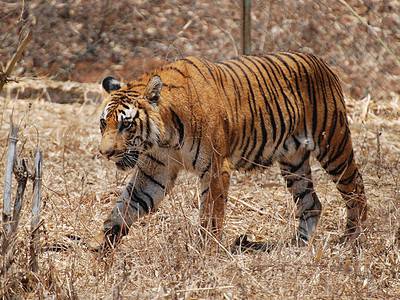
Bengal Tiger
The most numerous species of tiger!

Boston Terrier
Friendly, lovable and very strong!
Our Newest Animals that Start with the Letter B
The most recently added Animals that start with the letter B.
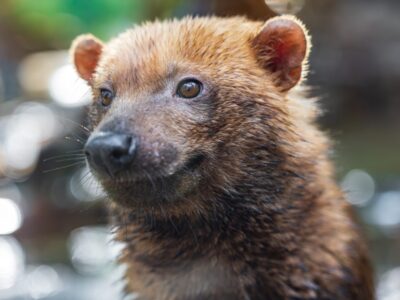
Bush Dog
Bush dogs have webbed toes to help them swim.

Bamboo Rat
They make a "boop, boop, boop" sound when danger draws near their burrow.

Booted Bantam
The feathers on the feet of tiny Booted Bantam chickens can reach up to six inches in length!
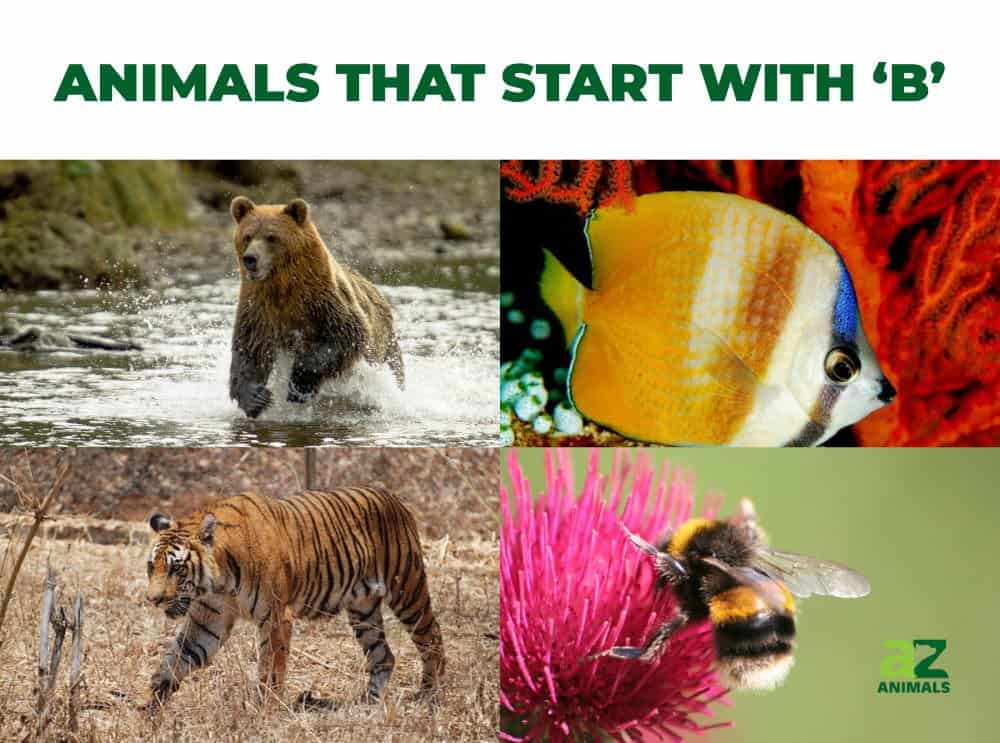
Animal by Letter Lists
- Animals that Start with A
- Animals that Start with B
- Animals that Start with C
- Animals that Start with D
- Animals that Start with E
- Animals that Start with F
- Animals that Start with G
- Animals that Start with H
- Animals that Start with I
- Animals that Start with J
- Animals that Start with K
- Animals that Start with L
- Animals that Start with M
- Animals that Start with N
- Animals that Start with O
- Animals that Start with P
- Animals that Start with Q
- Animals that Start with R
- Animals that Start with S
- Animals that Start with T
- Animals that Start with U
- Animals that Start with V
- Animals that Start with W
- Animals that Start with X
- Animals that Start with Y
- Animals that Start with Z
Thank you for reading! Have some feedback for us? Contact the AZ Animals editorial team.




